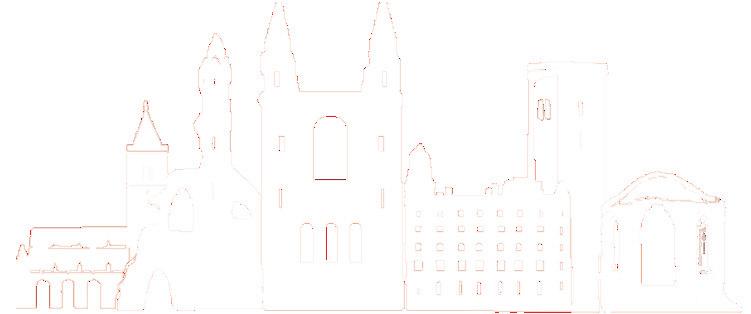

The Saint
Library Access Disrupted Amid
Ongoing Maintenance Issues
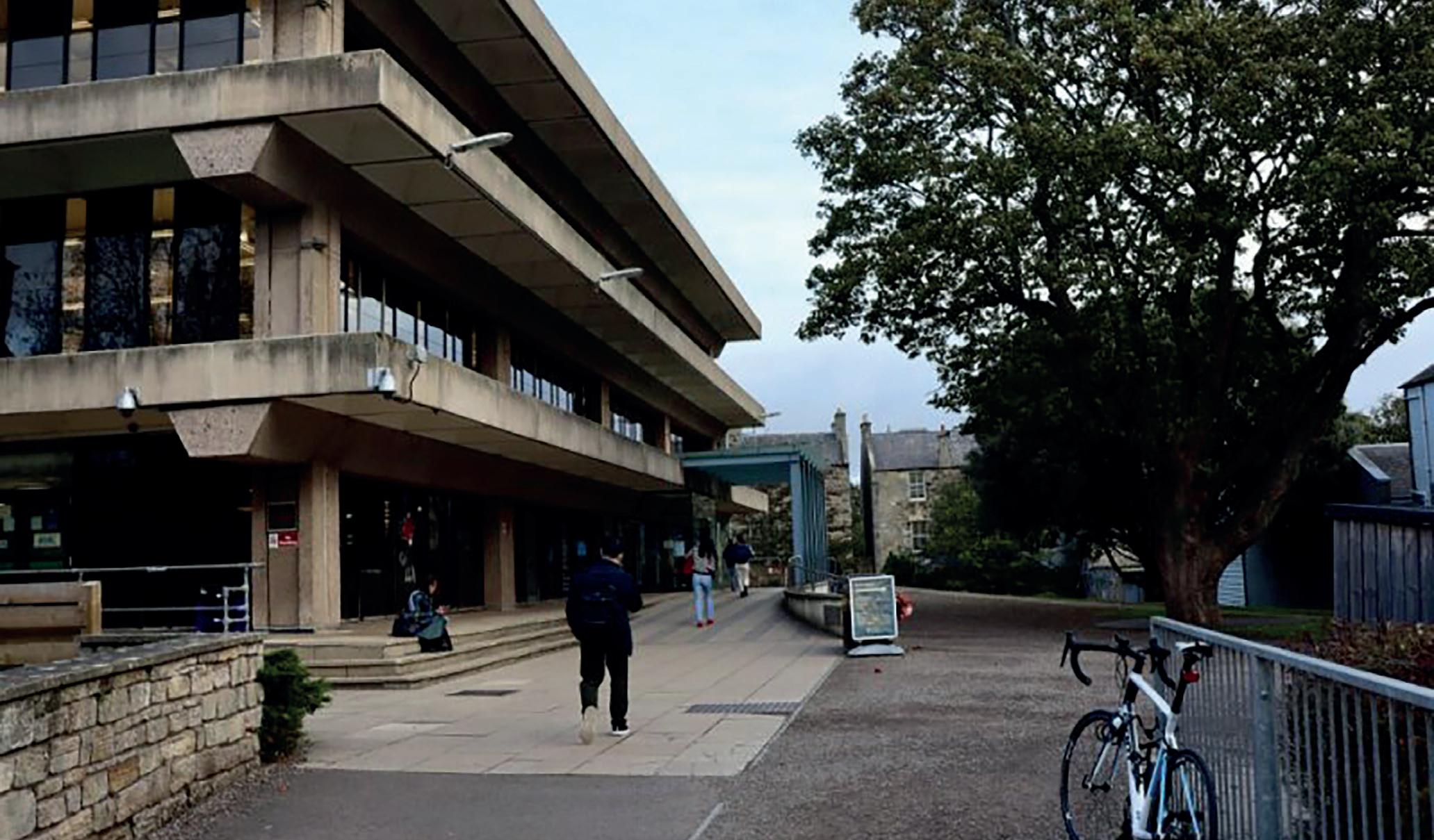
Since the beginning of the 202526 academic year, concerns have grown over whether the University of St Andrews can maintain the Main Library as a suitable study space for students amid numerous maintenance problems. Closures on essential resources, reduced opening hours, and overoccupied study areas have left students looking for answers — and alternatives.
On Friday 26 September, the library closed the entire Level 3 floor, leaving students unable to retrieve books, access bathrooms, or utilise key study spaces. Many students expressed frustration not only at the disruption but also at the lack of communication, noting that no email or social media communications were issued to inform them of this closure.
Just three days later, on Monday 29 September, the Library closed all of the building’s toilets. The complete closure of this essential provision without communication also concerned the University’s community.
According to the Library’s website, the North Street Main Library was opened in 1976 due to “pressure on space and increasing student numbers” and “was extensively renovated from 2011 to 2012.” For a notyet-50-year-old building, these maintenance-related instances raise questions about its upkeep.
Franki’s Café, a key feature of the Main Library, offering snacks or fresh drinks, is officially advertised on the University’s website as being open and staffed from 8am to 4:30pm during the week. Yet during the week of 6-10 October, a sign in the café informed students that “from 6th October to the 10th of October the
Café in the library will be selfservice.” As with the recent floor and restroom closures, students reported receiving no correspondence from the University about the change.
This year, the Library’s opening hours have also been reduced. For the 2025 Martinmas semester, the Main Library’s opening hours are 8am to 12am, seven days a week. In past academic years, the library had a 2am closing time for the full term-time. At the time of publication, the University had not responded to The Saint’s request for comment.
Study space provision has been a key priority for Students’ Association President of Education, Emily Bannister, with the Main Library at the centre.
Speaking to The Saint about the changes in library opening hours, Bannister said, “In July, I was informed of plans
to significantly reduce Main Library opening hours for the upcoming academic year due to low usage in the late evenings. After some negotiations with the Library, I secured a full reversal of the cuts for revision and first exam weeks, restoring the 2am closing time on those key dates.”
Bannister has also turned her attention to the problem of ‘desk hogging.’ New signage around the Library, along with posts on Unionaffiliated Instagram accounts, urge students to take their belongings with them when leaving for a study break, using the slogan “Be kind, unwind, and leave your desk behind! SAY NO TO DESK HOGGING!”
Bannister told The Saint, “Your academic representatives have partnered with the Library to launch a targeted campaign aimed at freeing up study space and encouraging considerate
Continued on Page 4.
Welcome the Wasps
by Logan Sibbald
Sprawled on a gingham blanket absorbing the height of the summer sun, your carefully cultivated tranquillity is easily shattered by an approaching buzz. Fight or flight suddenly triggered, your mind cogitates over potential sources for the noise. A bluebottle perhaps? Annoying, gross, but mostly harmless. A bumblebee? Scarier, some stinging potential, but hardworking honey-makers, nonetheless. The worst-case scenario then comes to mind — a wasp.
Read on Page 29.
InFocus: Nicholas Bradley
by Cyrus Tahbaz
It is a tired cliché, particularly in St Andrews, to observe that ‘everyone has a story.’ There is, however, no better adage with which to begin a profile on Nicholas Bradley, who has, for the past six years, been the Receptionist Administrator at Saints Sport. Bradley, who still works as a freelance photojournalist, has had a storied career ranging from the corridors of news agencies in Paris and New Delhi to documenting war, civil unrest, and everyday life across Asia and the Middle East.
Read on Page 6.
Inside the Dunhill:
Big Bob Mac, Bieber, and Beyond
by Elodie Cowan
MacIntyre became the first Scot in twenty years to win the Dunhill (Colin Montgomerie did it in 2005), with the classic Scottish mixture of riotous winds and horizontal rain from Storm Amy playing into his hands. But this year’s Dunhill wasn’t just about the homesoil win. The abuse received by Team Europe at the Ryder Cup hung like a stubborn cloud over the press rooms, with each player conference focusing on the fallout rather than the week ahead.
Read on Page 32.
AVA GOODMAN News Writer
What’s Inside?
As the leaves begin to change, and the skies start to darken before 6pm, deadlines are creeping in, and we all seem to find ourselves spending less time at the pub (or the 601, pick your poison) and more time in bed in the evening, wondering, “What did I do to pass my limited daytime?” Today, at least, amongst your other escapades, you’ll be able to say, “I read a copy of The Saint” (and loved it! …We hope). While it may be tempting to get bogged down by the 4pm sunsets and unforgiving gusts of wind, if four years of them have taught us anything, leaning into it as much

Ilaria Freccia Editor-in-Chief
Hannah Shiblaq Editor-in-Chief
Pietro Barbini Business Manager
Maria Ebrahim News Editor
Sam Spendlove Viewpoint Editor
Mrunmayi Kamerkar Features Editor
Luana van Oranje Puzzles Editor
Manraj Gill Photography Editor
Anna-Marie Regner The Relic Editor

We often also forget just how safe a town we live in — so safe, in fact, that we even recommend taking an evening stroll down the Scores, parallel to the sea. There’s something so cathartic about walking down what is rumoured to be the most haunted street in St Andrews (the Pends, if you dare), illuminated only by the flickering street lamps and the Harvest Moon. Cue the iconic Twilight soundtrack for the full effect. In fact, leaning into media which glamorise the dreary autumnal. In addition to Twilight, David Lynch’s Twin Peaks, for one, hits the spot. Thank you to Alden, our Pacific Northwesterner Deputy, for that fitting recommendation. While we will always advocate for a movie night spent solo, there is no warmer cure to the encroaching cold than time spent in the company of good friends: laugh with them, confide in them, hold them close. Even the strongest of bonds can make any dreary October day — or fourteen hours spent in the Union slaving away on InDesign — time well spent. It’s not all doomsday in our little town. Raisin is steadily approaching, sure to wreak havoc on the typical peace and quiet of the three streets. And then, a much-needed break, where students are sure to scatter to every corner of the globe. So, take the time, enjoy your break — whether you’re staying here or heading to an exotic location — know that St Andrews will be ready to welcome you back. The same may not be true for Issue 292, though. So hold tight to your copy. Take a dive into our puzzles (or try them online!). Read up on St Andrews’ wasp problem or learn about the trials and tribulations of speed dating. We hope you enjoy it! Hannah and Ilaria
Alden Arnold Deputy Editor-in-Chief
Arnaz Mallick Deputy Editor-in-Chief
Lucian Passante Deputy Business Manager
Olga Alonso Blanco Events Editor
Matteo Veratelli Science & Technology Editor
Ben Bagley Sport Editor
Isabelle Holloway Head of Illustration
Finn Lister Senior Copy Editor
Peter Napier Podcast Editor
Zainab Haji Head of Web & Social Media

EDITOR: MARIA EBRAHIM
University Appoints AI Chair
Following £3 Million Donation
ELSPETH SCHOONOVER News Writer
The University of St Andrews has appointed Professor Lars Kotthoff as the Johann and Gaynor Rupert Chair in Artificial Intelligence. This appointment marks his return to the institution after thirteen years to lead research and innovation in the rapidly evolving field of AI.
Professor Kotthoff will be returning to St Andrews from the University of Wyoming, where he held the positions of Templeton Chair in Computer Science, Presidential Faculty Fellow, Founding Adjunct Professor in the School of Computing, and Associate Professor in the Department of Electrical Engineering and Computer Science.
His appointment comes amid rapid growth in the use of artificial intelligence, which is reshaping research, industries, and daily life. According to a recent Stanford University report, business adoption of AI rose from 55% in 2023 to 78% in 2024, reflecting the technology’s accelerating influence across various sectors.
Concerns about the ethical and environmental impact of AI — particularly the sustainability of large-scale
computational systems central to Professor Kotthoff’s work — are increasing as the use of AI continues to grow exponentially with no signs of slowing down.
One UK government report projects AI’s water usage could rise to 6.6 billion m³ by 2027, a significant issue when a third of the world already lacks access to clean water. These challenges have prompted researchers and policymakers to explore ways to develop AI technologies that are efficient and sustainable.
When asked how he plans to address sustainability within his role, Professor Kotthoff stated, “A lot of AI research (including my own) is actually on how to run things more efficiently and sustainably. Large Language Models are an outlier at the moment, and we’re still trying to figure out how to make them work more effectively, rather than focusing on efficiency, but there are signs that current models can be made much more efficient.”
He added, “I would expect the coming years to bring substantial improvements there, similar to how early cars were horribly inefficient compared to modern ones.”
Looking to the future, Professor Kotthoff hopes his work will make AI more accessible and transparent for users across disciplines, by “not just asking ChatGPT a question and
copying an answer, but working with AI in a way that helps people understand what’s going on and make informed decisions based on what an AI system provides.”
As AI becomes more integrated into daily life, Professor Kotthoff highlighted the need to address its ethical and societal implications: “I wish I had the answer, but unfortunately, I don’t. I do hope that I can be part of figuring out the answer, which will be somewhere between the extremes of banning it completely and allowing it everywhere unchecked.”
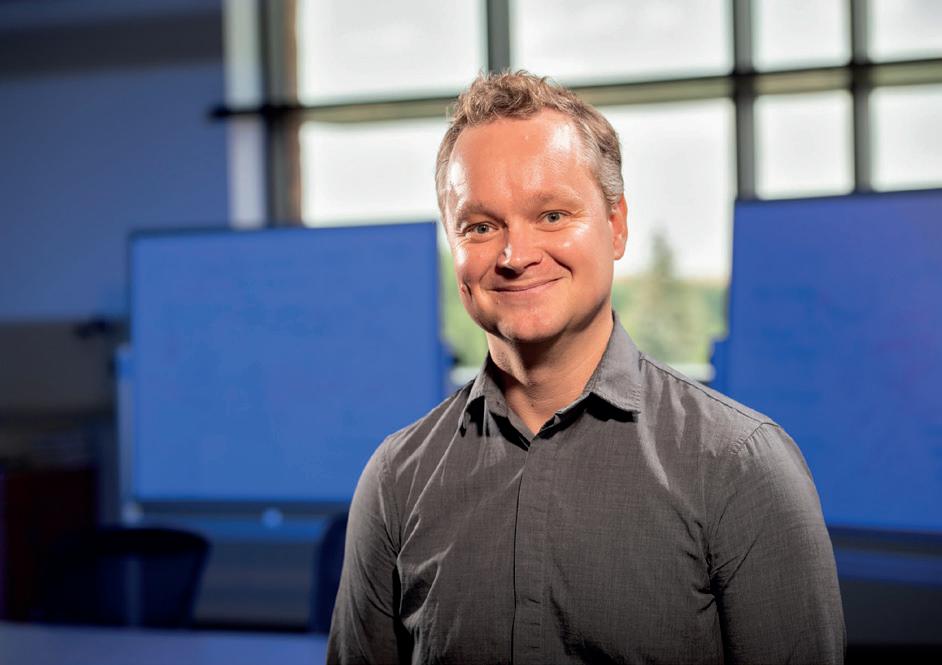
His appointment forms part of a wider initiative to expand the University’s leadership in emerging research areas. According to a recent University report, the position was funded by a £3 million donation from participants of the Alfred Dunhill Links Championship, made in honour of Johann and Gaynor Rupert, long-standing supporters of the University and champions of innovation and excellence in education.
The Chair is part of one of four key focus areas of the University’s Making Waves
Campaign, “Endowed Chairs,” which aims to raise £300m to transform and strengthen St Andrews’ capabilities in teaching, learning, research, and student support. A recent report by the University states that donations made in the 2024-25 year bring the total amount raised to £142 million. Professor Kotthoff’s appointment comes as the University seeks to attract leading researchers and promote collaboration across disciplines, supporting the continued growth of the St Andrews academic community.
Photo Provided by Lars Kotthoff
Student Reports of MMS Grading Errors
IONA CARRUTH News Writer
On 30 September 2025, the BBC reported that Ethan Brown, a University of Glasgow student, died by suicide on the day he was due to graduate after being incorrectly informed he had failed his degree. In reality, Brown had achieved a 2:1 in Geography. The University of Glasgow described the mistake as a “tragic error” and an “isolated incident.”
While the case occurred in Glasgow, a St Andrews student, who wished to remain anonymous, told The Saint that she experienced a similar grading error on MMS during her first year in the Economics Department. She explained that she was initially informed she had failed a major project, which she had, in fact, passed.
The student told The Saint: “In first year, we had a dataset project for microeconomics. We were given data and were asked to analyse it and generate the necessary calculations on
Excel. Our dataset was [determined by] the last number of our student ID [...] mine ends in one, so I was [assigned] Year One. There was already a set of answers ready, so [the] module coordinator compared my project against the answer sheet, but for the wrong year. Because of this, I [...] failed my project.”
The student added that the project was worth 50% of her final grade and that she “did not receive any support” during the process: “Once the answers were published, I emailed [the module coordinator] as he mentioned that a few students received the wrong mark, but my student ID wasn’t included on the list. So I replied to the email to ask.” She continued, saying that her “module coordinator was unhelpful and hostile and did not want to provide me with help in addressing the situation. Instead, he was rude when I was seeking clarification on what he meant in his email.”
The student described the experience as highly stressful, saying she felt “very
anxious and uneasy as I was not sure how to explain to my parents that I had failed my first year economics project. My module coordinator’s responses to my email added to my stress and anxiety as I felt so hopeless.”
According to the University of St Andrews appeals policy, “The University will not pursue an appeal that does nothing more than question the academic judgment exercised. For example, a student cannot appeal using these procedures simply because they are unhappy or disagree with a mark given to assessed work.”
When asked what she thought about this policy, the student responded, “I don’t think it’s fair, as sometimes there may be a mistake on their part that should be corrected.”
Commenting on the matter of grading errors, Professor Clare Peddie, VicePrincipal Education (Proctor) told The Saint: “The Academic Alert system through MMS is in place to ensure, as far as it is possible, that students are aware during
the semester that their studies are on a trajectory that if no remedial action is taken then a fail grade is a possible outcome.”
Peddie continued: “Student Services and the Adviser of Studies are informed of the Academic Alerts. In addition, we ensure that students who are at risk of failure to progress or termination of studies do not receive this type of serious news on a Friday when support might be harder to access over the weekend. This widely followed practice has recently been embedded into a University wide policy. At all times, including when grades are released, students know that they can reach out to Student Services for personal support and for support from their School if they are concerned about their academic progress.”
The Saint also reached out to Nightline for a comment regarding the significant impact grades can have on student mental health and well-being. However, they declined to comment due to confidentiality issues.
Continued from page 1
to launch a targeted campaign aimed at freeing up study space and encouraging considerate use of shared areas. Inspired by a successful initiative at the University of Edinburgh — where positive outcomes were reported directly to us — St Andrews is now in the early stages of implementation.”
“We’re optimistic that this will lead to more students occupying seats rather than unattended bags, and we’ll be working closely with university staff to monitor its effectiveness,” she added.
Bannister did not provide details on how the campaign would be enforced.
Current student feedback on desk hogging from University students has
also been visible on the Main Library’s entrance whiteboard. When prompted for thoughts on desk hogging, many responses expressed their support for the practice. Audrey, a second-year student, explained, “I occasionally desk hog when I need to go eat.” When asked if she thought it was necessary, she responded, “Yes, due to the limited number of seats in the Library. Sometimes, even not during exam season, in the afternoon, I struggle to find a seat.”
The debate over desk hogging raises broader questions about the Library’s capacity to meet students’ needs, highlighting concerns not only about its condition but also about the adequacy of available study
spaces and resources. Some suggest the practice reflects a student population that has outgrown the Library’s size.
The Library’s website points students to alternative study spaces, including the St Mary’s and King James Libraries, the Gateway Library, Walter Bower House Library, JF Allen Library, the Thomson Reading Room, and various PC classrooms.
Bannister also emphasised the Union as an alternative: “The top floor of the Students’ Association is our dedicated study space, though students are welcome to utilise any available seating — including Rector’s Café and Main Bar.”
“The practice reflects a student population that has outgrown the Library’s size.”
While capacity limits and access restrictions mean these alternatives are unequal to the Main Library, they have become stopgaps in a semester already defined by inconsistent access to the University’s central study hub.
“Rare Historical Gem” Castle Seige Tunnels Closed Indefinitely?
NATHALIE HANZLIK-MEECH News
Writer
When the sixteenth-century siege tunnels underneath St Andrews Castle were closed in mid-October 2024, visitors were told simply that they would be “open again soon.” A year on, these underground tunnels remain sealed off to the public.
In a written comment to The Saint on the historical value of these siege tunnels, Professor Rory Cox, a Senior Lecturer in History at the University, said, “The sixteenth-century siege mine and countermine below St Andrews Castle [are] rare historical gem[s]. By design, medieval siege tunnels were intended to be destroyed, so that any overlying fortifications would collapse into the mine. Those tunnels that were not deliberately destroyed have collapsed in the intervening centuries.”
He added: “As far as I know, the almost 500-year-old mine and counter-mine in St Andrews are unique [in] mainland Europe. Historically speaking, they are certainly the most interesting and unusual aspect of St Andrews Castle.”
“The fact that the tunnels have already been closed for repairs for a year — with no re-opening date in sight — is a travesty,” Professor Cox said.
A representative from the Historic Environment Scotland St Andrews Castle team confirmed that the tunnels were closed due to safety concerns. Minor rock falls had been reported inside, and the decision to seal the tunnels was taken to prevent any potential risk to visitors.
Staff at St Andrews Castle said the timeline for renovation has not yet been determined and is “not for [them] to decide.” Specialist masons are required on certain historic sites, and
demand for their expertise is often high.
The renovation could also take longer than usual as the tunnels stretch beneath a road, which may need to be closed to allow the work to proceed safely. Officials stressed that this closure should not be
of Scottish History at the University, is concerned by the prolonged closure of these tunnels. According to Professor Brown, “the closure of the mine is not an isolated episode.” Instead, “parts of the cathedral are also closed, and many other Historic
“[s]uch concerns do not seem to be affecting English Heritage or Cadw (Welsh heritage body) to the same extent.” Professor Brown is among a group of university staff dedicated to preserving the 612-year-old institution’s heritage, and that of the surrounding town.
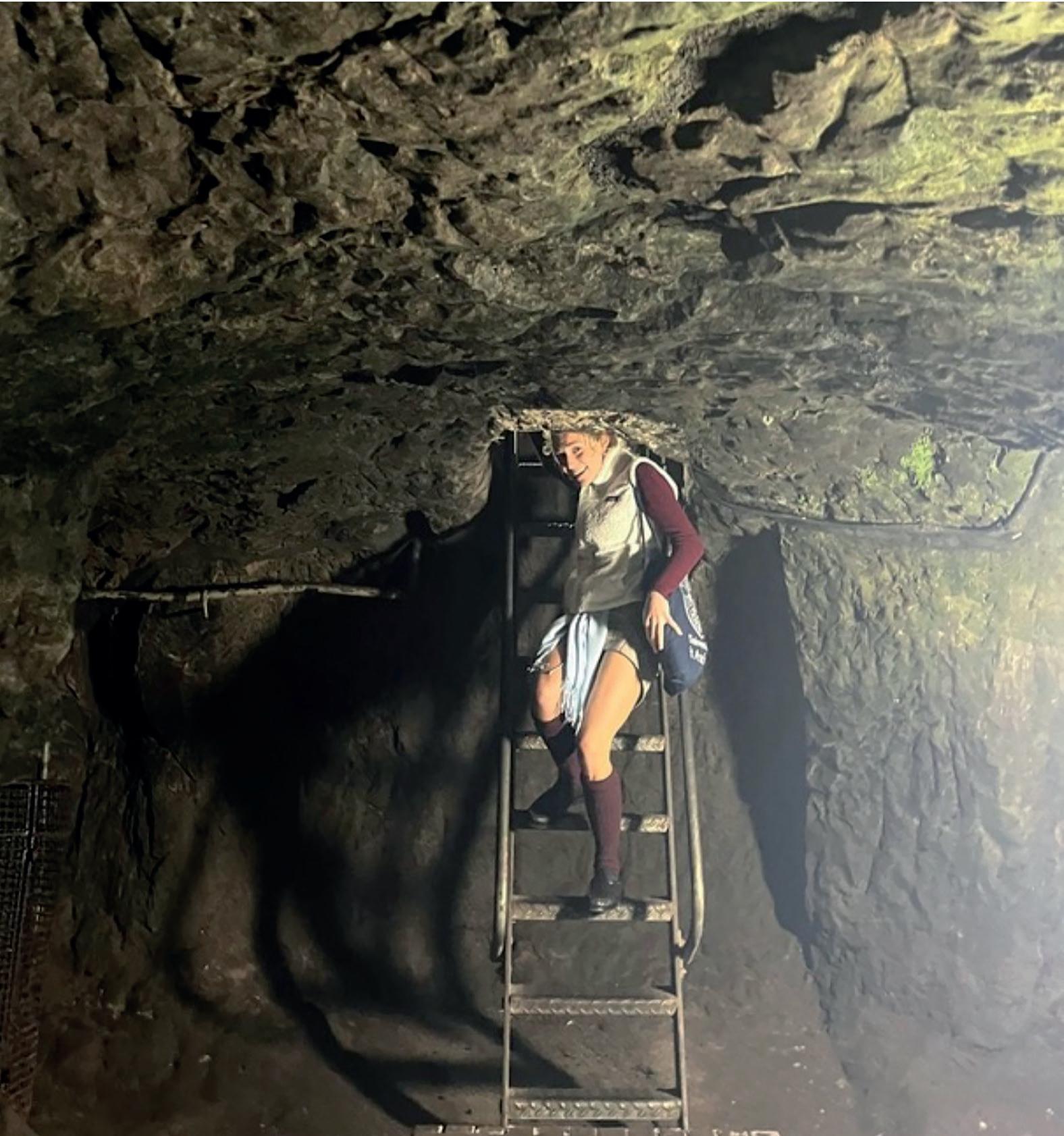
taken negatively, but rather as an essential step to protect and preserve the historic site.
Professor Michael Brown, professor
Scotland sites are fully or partially closed due, apparently, to structural concerns.”
Crucially, Professor Brown noted that
Speaking on the University’s involvement in preserving St Andrews’ medieval heritage, Professor Brown said: “A number of modules use the buildings and even the street plan of the town as primary sources for the social organisation and representation of status in the medieval and early modern past.”
In 2017, Professor Brown was involved in the publication of an edited volume on Medieval St Andrews and later helped organise a related exhibition at the Wardlaw Museum in 2021. At present, he is part of a team of university staff and students working with the Historic Towns Trust to produce a historical map of the town.
Professor Brown believes that these activities help preserve the essence of historical St Andrews and make this history “available to a wider public which includes students, citizens of St Andrews, and the millions of visitors who come here every year.”
The siege tunnels at St Andrews Castle will remain closed for the foreseeable future. According to staff at the site, a professional renovation is planned. In the meantime, visitors can explore the castle grounds without disruption from scaffolding or construction work. Entry remains free of charge for students at the University.
Photo by Daniel Carpena
Making Waves Raises £142 Million Ahead of Next Phase
EDEN LEAVEY News Writer
Just over a year ago, the University of St Andrews launched the Making Waves campaign on 27 September 2024, with the goal of raising £300 million to fund four major projects: New College, the Digital Nexus Building, scholarships and bursaries, and Endowed Chairs. Now, Alumni Relations reports that the campaign has raised a total of £142 million to date.
In an article published on the University of St Andrews website, Principal and Vice-Chancellor Professor Dame Sally Mapstone expressed her enthusiasm for the campaign’s initial success.
“This achievement is about more than numbers,” said Mapstone. “It represents our community’s unwavering belief in our vision for the University of St Andrews and demonstrates the power of the Making Waves campaign to change lives through student support, capital projects, and world-leading research.”
Of the £142 million raised, more than £52 million was raised for “scholarships, student support, and widening participation,” and £42.5 million was raised for the development of New College.
In accordance with the vision of the
Making Waves campaign, New College is a £140 million endeavour that will be home to the School of International Relations and a new Business School. The development of New College will mark the first of its kind in nearly 300 years of the University’s history, a project that predates the launch of the Making Waves campaign.
keeping with its redevelopment schedule, the University submitted an application to Fife Council in the summer of 2025 seeking full planning permission to renovate the Madras College buildings on South Street and add new facilities to the site. The application remains subject to approval by the Council.

In 2022, the University hired awardwinning architectural firm WilkinsonEyre to develop New College on the former site of secondary school Madras College. At the time of taking on the firm, the University announced its plan to begin construction work on the New College project in 2025 in hopes of occupying the building by 2027. In
While New College is in many regards the flagship of Making Waves, the campaign also seeks to fundraise for the Digital Nexus Building, scholarships and bursaries, and Endowed Chairs.
The Digital Nexus Building will provide a home for the School of Computer Science and serve as a collaborative hub for research in a wide array of sciences, including medicine, sustainability, and artificial intelligence — an initiative which requires £60 million.
The University is also raising money for scholarships and bursaries with the aim of lowering barriers to accessing a St Andrews education. Particular attention will go toward PhD students, who face additional challenges in the postgraduate sector, namely reduced
public funding, obstacles to international recruitment, and rising living costs.
Finally, the University is looking to fund the creation of new Endowed Chairs, beginning with appointments in the new Business School, the School of Earth and Environmental Sciences, and the Department of Chinese Studies. The University hopes that these positions will reinforce its reputation as a leading institution for top-class academia in the long term.
As the Making Waves campaign enters its second year, much of the work still lies ahead. Securing full planning consent for New College will be a key milestone before construction can begin, while progress on the Digital Nexus Building and other initiatives will depend on maintaining fundraising momentum toward the £300 million goal. With nearly half of that target already pledged, the campaign has built a strong foundation. Nevertheless, turning those ambitions into reality will require a continuation of the same success that has defined its opening year. At the time of this article’s publication, the University has not responded to The Saint’s request for comment.
Photo by Louisa Willan
Study Spaces Used as Bedrooms in Halls
CECILY TODD News Writer
In recent years, the University of St Andrews has repurposed several study and communal rooms in halls of residence as temporary bedrooms — a move that has prompted mixed reactions among the student body.
The University operates twelve residence halls, offering over 5,000 beds in total. With accommodation fees averaging £8,769 per year, many students say the continued use of “non-bedroom” spaces signals an ongoing shortfall in suitable housing. Some undergraduates assigned to these larger rooms say they feel fortunate, while others report frustration over inconsistent conditions and what they see as a lack of transparency from the University. Students not placed in such spaces have voiced concerns over fairness and the limited access to communal facilities they were promised upon admission.
Second-year student Doireann Hockel told The Saint about her experience being placed in a converted study room in Agnes Blackadder Hall during her first year in 2024: “Before arriving, I was quite stressed as everyone was getting room
numbers and all I had was ‘SR1.1,’” she said, “but as soon as I stepped into my room in September, I knew I’d lucked out.”
She explained that while the study rooms were significantly larger than standard ensuite singles, with ample light and workspace, the bathrooms were notably smaller: “It was basically only a toilet and shower.”
“The windows were poorly insulated [and] the room would get freezing at night in winter, but overall, I wouldn’t have traded my room at all for a standard room,” Hockel explained. “These spaces were not built to be bedrooms and should be updated to fit that role if the University continues using them.”
Francesca Finistrella, a student who lived in McIntosh Hall in 2022, described a much less positive experience when study rooms were converted into shared bedrooms.
“Because it was originally a study room, the windows looked directly into residents’ rooms, so they had to [...] keep the blinds closed,” Finistrella said. “There were at least three people living in those rooms, sometimes more, and midway through the year they were moved, and nobody knew where they went or why.”
Finistrella said the decision affected other residents as well, telling The Saint
that the study spaces “were very nice, and we weren’t allowed to use them, while others were housed there.” She added that it “felt unfair — especially for international students paying full fees — and [they] were expected to just move in and out all their belongings when it suited the University.”
Similar situations have arisen in past years. At St Salvator’s Hall, computer rooms were temporarily used as bedrooms. This year, Nathalie Hanzlik-Meech, a secondyear living in Sallies, said her wardens initially confirmed that the study room, library, and conference room would be repurposed as emergency accommodation. However, she noted that “as of [about] three weeks ago, that is no longer the case.” While no students in Sallies are currently housed in temporary bedrooms, she clarified that the Warden informed her that some students could have been.
More recently, Andrew Melville Hall adopted a similar approach during the summer of 2025, repurposing study rooms as temporary accommodation. First-year student Geneva Stockton recalled accidentally walking into one of these makeshift bedrooms.
“I was confused on why there were
“These spaces were not built to be bedrooms.”
a couple of beds and desk spaces. I had only known that room was supposed to be a study room and nothing else. I left immediately after because it felt wrong being in there,” she said. “I feel like [the University] can make it a room as long as it is promptly turned into a study room before the school year begins […] I could see how other students may consider it to be unfair.”
The recurring use of study and communal spaces as emergency housing reflects the University’s ongoing challenge in meeting student demand. Although St Andrews has seen a significant rise in application numbers in recent years, the growth of student accommodation has not kept pace.
At the time of publication, the University has not issued a formal statement explaining the use of study rooms as emergency bedrooms in recent years, nor clarified whether this will continue in the future.
InFocus
Saints Sport administrator Nicholas Bradley reflects
on his
career in photojournalism
CYRUS TAHBAZ News Writer
It is a tired cliché, particularly in St Andrews, to observe that ‘everyone has a story.’ There is, however, no better adage with which to begin a profile on Nicholas Bradley, who has, for the past six years, been the Receptionist Administrator at Saints Sport. Bradley, who still works as a freelance photojournalist, has had a storied career ranging from the corridors of news agencies in Paris and New Delhi to documenting war, civil unrest, and everyday life across Asia and the Middle East.
Bradley was born in the mill town of Bolton, just outside Manchester, but was quickly struck by wanderlust after leaving school with the intention of pursuing a foundation in fine art photography. These plans were soon put aside when Bradley, aged nineteen, found himself in Ramallah in 1987, witnessing the start of the First Intifada.
With characteristic humility, Bradley told The Saint, “I got into journalism completely by accident. I was a nineteen-year-old guy with a couple of cameras and news happening around me.” He continued, “I went from being like every backpacker at the time, sleeping on the roofs of hostels, and suddenly I was in the annex of the American Colony Hotel in East Jerusalem, sitting at the bar with all of the legendary reporters.”
A recurring motif in Bradley’s life is his adaptability. Speaking on the precarity of freelancing as a photojournalist, Bradley said, “Particularly in journalism, if you can’t learn to just wing it, you are missing the point. Your technical abilities are one thing, but you have to be able to just do something regardless.”
Bradley left via Haifa after being informed by immigration agents that he had 48 hours to vacate the country, as he had not completed an Arabic course required to renew his visa. He vividly recalled feeling the weight of constant political tension “lift off my shoulders as I sailed out of Haifa.”
True to form, Bradley soon arrived in Hong Kong, where he “kept afloat” by teaching English but “hit a rich seam with a superb region, covering Iran, Oman, Egypt, Bangladesh, India, Cambodia, and the Philippines.”
Through his trademark mischievous smile, Bradley preached, “Empathy among the people, cynicism with the politicians.”
One of the many anecdotes that speaks to this commitment came in 2002, when he flew to Iran — entirely self-funded — on a
tourist visa, astutely clarifying, “Not in the wake of 9/11, but in the wake of George W. Bush’s speech. I thought, I just don’t believe this country is the axis of evil.”
He describes his experience of Iran as “joyous, fulfilling, incredibly cultured.” “It was such a f*** you to Washington,” he said.
In Iran, Bradley’s open-minded approach once again led him to lock horns with received industry doctrine: “Publications have a
suffering, or at least show it to the world.”
The year 2003 was a “crucible moment” for Bradley — one which bore witness to the loss of a major client, the birth of his first son, and a job offer from Agence France-Presse in New Delhi.
“For the first time in my life, I was an employee,” he recalled.
Whilst nostalgic for the freedoms of freelance work, Bradley acknowledged that
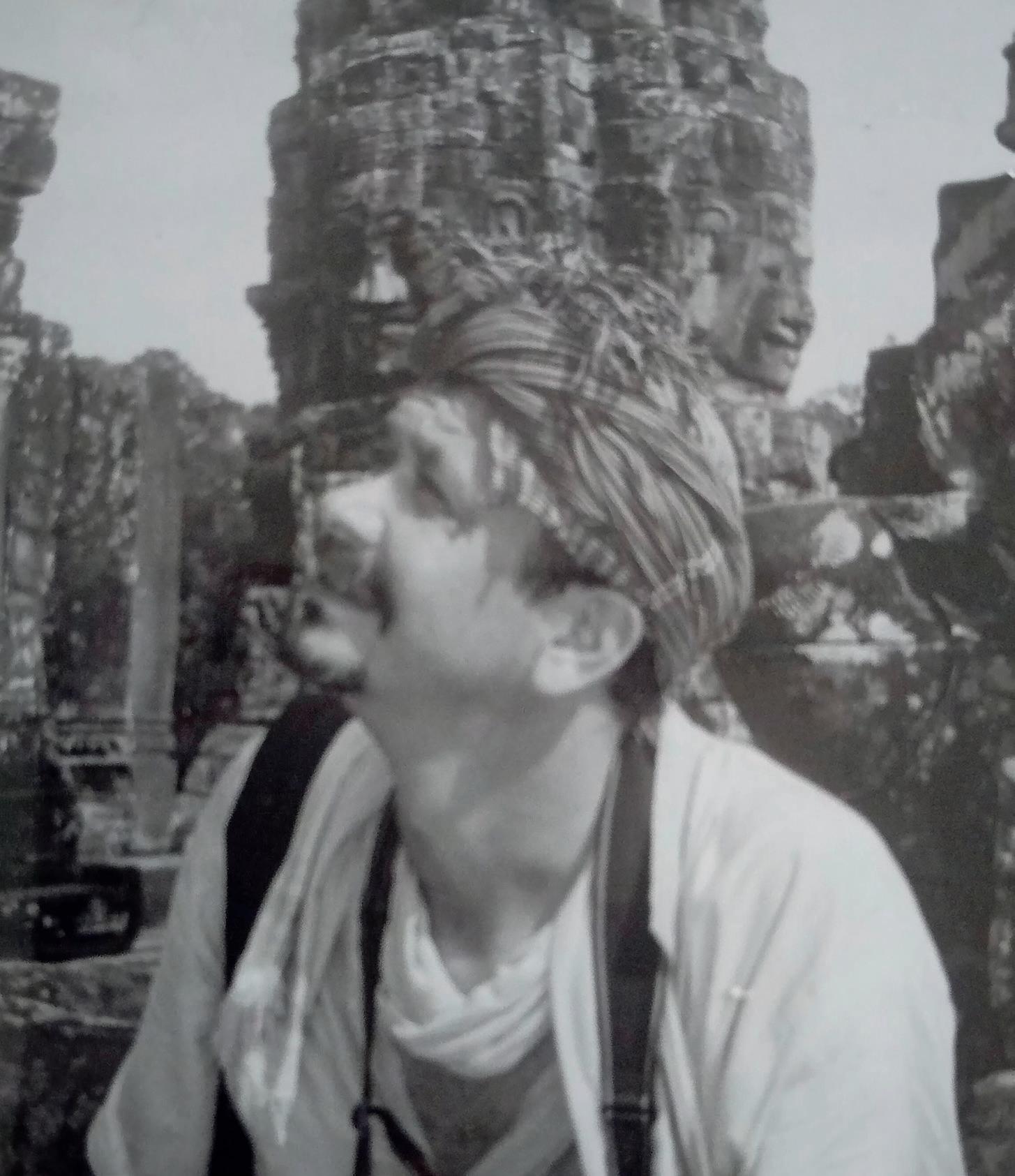
clear demographic of their readerships and never want to buy a story which would be in conflict with those values [...] Stuff has to be so light that it’s essentially a travel feature, or it has to run with their readers’ views.”
Reflecting on his experience freelancing, Bradley maintains that the business model of news agencies, which puts journalists “in the hands of market forces,” has tangible consequences for public accountability. “It’s too easy to forget that you are not a voyeur,” he said. “You are fulfilling a real function which has the capabilioty to alleviate
“an agency can get you into places, into situations that freelance [work] could never get to. It was no longer feast or famine.”
Unlike many of his peers, Bradley maintains the importance of not getting sucked into the “adrenaline whirlpool” of documenting war and civil unrest: “Some photojournalists essentially see themselves as soldiers with cameras strapped to their backs. My favourite assignments have been real human stuff without conflict involved.”
He fondly recalled an assignment in Bangladesh in the early 2000s on the
Grameen Bank, a microfinance community development bank. “I began touring around the villages and picked up stories of people whose lives had been turned around completely by these loans of twenty quid,” he recalled. “Gathering these stories is pretty magical — it’s a slow burn that you can never get from conflict or civil unrest.”
What is impossible to ignore whenever Bradley recalled a story from the field was the profound empathy he felt for each of his subjects. The experience of bearing witness to — and having the responsibility to capture — the most harrowing examples of organised human suffering had a deep impact on his life and worldview.
“Whoever it was, I couldn’t separate their pain from mine, and I couldn’t step out of it. In a sense, that’s the Achilles’ heel of my experience of the whole industry. The reason I got out is because I could feel all the pain,” he said. “I think governments, movements, and individuals are capable of getting people to do horrendous things with some stated aim.”
In spite of this, however, Bradley is saddened by the corrosion of the public image of journalists: “Nobody believes the media anyway, and through successive figures both high up in the press and in government, ‘journalist’ has become a dirty word.”
When asked about his career trajectory, Bradley admitted, “I don’t think I’ve ever had a career path; I just reacted to whatever I had to [...] I love to write, take pictures, and make music — those things have always been my centre, and anything I’ve done has been to feed those things.”
He is even currently working on an ambient music project using found sound recordings from his time in the field.
Before moving to Crail six years ago, Bradley and his family lived in Paris, where he was working as the Deputy Chief of the Europe-Africa photo desk for Agence France-Presse. In spite of the move’s consequent change of scenery and pace, he maintains that “it feels like I haven’t left the international world.”
“St Andrews feels like a backwater for all of the right reasons,” he said. “I don’t think the madness that is engulfing the rest of the country has reached here — but all of the good stuff has.”
Photo Provided By Nicholas Bradley
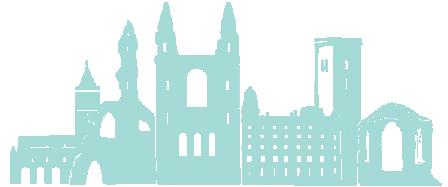
Viewpoint
EDITOR: SAM SPENDLOVE
Embarass Yourself, Learn a Language
The trials and tribulations of the bilingual-to-be
POPPIENA HORSINGTON Viewpoint Writer
With a demographic of 40% international students, this university is no stranger to a foreign language… or two or three. Walking from Rector’s Café to Tesco, you’ll hear a pair of Portuguese, a Deutsch duo and a group of Greeks. And what a joy it is to bathe in this multiculturalism! However, I fear that, amongst those who exclusively speak English, there is a distinct apprehension about learning a new language for fear of looking stupid or embarrassing oneself. In what can only be described as a departure from the norm, I am here to inspire! Today, I shall shake you out of that foolishness and give you the go-ahead to get out there and try. This article is motivated by the time I was in a language class and we were doing a speaking exercise, as language students often are wont to do. While we were mingling and fumbling through our practice phrases, someone in the group turned to me and said, “Wow, you’re really enthusiastic.”
I must admit here that the limitations of the written word cannot convey to you all the condescension in this simple sentence. This comment stumped me. Why would I sign up for this language class to learn a new language (that I chose, may I once again reiterate) and approach it nonchalantly? That is simply not in my nature. If I were a nonchalant person, I would not be writing for Viewpoint — and I would probably be more content with my life. Alas, I think this boils down to the question of motivation. Are you learning a language because you want to become fluent in a new language or because you want to pass a class? If you fall into the latter category, then I’m afraid I cannot help you with this article. You are on a journey of your own, and you must find a different sensei to guide you. However, if you want to learn a language and enjoy doing so, then you must immediately get over this mental hurdle. Your language attempts will not magically become smooth sailing, but you will at least not be terrified of boarding the boat. Some would say that is the most crucial step. Ignore the imminent humble brag, but
I feel that I must prove my credibility in writing this article. I have been known to learn a language or two in my time. My early youth was spent sobbing over the challenges of Mandarin, and my later youth was spent weeping over the annoyances of German. Do not ask me if I am good at either tongue; you will be met promptly with silence. Through
unintentionally declared your love for hairy chests. Schwuler and Schuler are a simple letter apart, and yet if you don’t mark that difference, I guarantee you a thirteen-yearold who actively uses the phrase “auf lock” or “goonen” will giggle. Yes, I’ve mentioned examples from the languages that I have learnt for the simple reason that these things
drive without a licence — don’t expect fluency without a little struggle. Shablam.

unlock the liberation of being ashamed, only then will you master the language you seek. Firstly, the best way to remember from your mistakes — grammatical or pronunciation — is to never forget the way you messed up. Raising your hand confidently only to discover that you were wrong is a bad feeling for sure, but it also gives you the gift of remembering through humiliation. You better not forget that the word for panda is pronounced “xióngmāo” and not “xiōngmáo” otherwise you will have
been possible if you were too afraid. What is the point of learning a language if you are never going to use it? Are you planning on packing up your Persian or sweeping your Swedish away until you suddenly become fluent? This is not realistic, my friend! Get out there now and chat, chat, chat so you can practice and hone your craft. Learning a language in isolation and using it in context are obviously two very different experiences, but they build on each other. You wouldn’t
Once you accept the possibility of mortification, learning a language becomes ten times easier, because suddenly anything is possible. Yes, I have ten siblings (that is the only number I could remember)! My dream job is to be a veterinarian (despite my studying IR)! Your life can be whatever vocabulary you remember. This would not even be on the table if you were too cautious to get out there and try. Go and be who you want to be, or, rather, what your Quizlet has taught you. If I may be so honest, some of you should be more embarrassed when speaking English instead of a second language. You have humiliated yourself time and time again, and yet there you go blabbing again. You asking someone “Quanti anni ho?” instead of “Quanti anni hai?” cannot make you feel any more shame than that one night you spilt your deepest secret to a friend of a friend at a party in an odd attempt to keep the conversation going. Yet somehow this new opportunity for acquiring knowledge keeps you up at night. Please reevaluate your values and priorities. Learning this new language with your whole heart and soul could make you more palatable to others through its injection of a new perspective. Conversely, it also has the chance to make you more irritating and pretentious. I hand the dice to you to roll, I’m afraid. Now fly, my little butterfly. Ultimately, I think that no one is going to laugh in your face if you genuinely try to connect with someone in their native language. Why not try? The only exception is the French. I cannot advise you on them; they are out of my hands and exist in their own world. Thus, I conclude my preaching. I hope this manifesto encourages you to get out there and find people to practice your newfound language with, and I hope they are kind and accept you in all of your stumblings and mistakes.
Illustration by Ramona Kirkham

Devil’s Advocate
ADRIAN HANLON
Should Social Media Be Illegal? NO 76% 24% YES
Proponents of social media seldom argue that it has a net positive effect. After all, it’s hard to paint ‘doomscrolling’ and ‘brainrot’ in a favourable light, and its role in spiking anxiety, depression, body dysmorphia, and authoritarianism (to name a few) makes laughable the notion that social media is anything but a plague. Nevertheless, proponents still possess one prima facie good argument. That is, that freedom is a foundational principle of all democratic societies, and curtailing it to ban social media would constitute an impermissible government overreach.
“It’s hard to pain ‘doomscrolling’ and ‘brainrot’ in a favourable light.”
They forget, however, that freedom isn’t the only democratic principle; we also care about equality, flourishing, and harm prevention, and every democracy implements laws in pursuit of these ends. Furthermore, laws that curtail freedom in one way can promote it in others. For example, prohibiting murder leaves me less free to kill people, but it also leaves me safer and thereby freer to pursue my goals without fear. Banning social media is justified in both these ways: for preventing harm and promoting other freedoms.
To begin, those who defend social media based on free speech ignore its true purpose in democracies. Free speech allows us to convince, be convinced, and thus influence our societies. And how does social media promote these goals? By algorithmically shunting us into political echo chambers, driving us to the extremes of either wing, and segregating us from the so-called “other side.” Clearly, this is not an engine for democratic discourse.
“Yet,” you might counter, “even if it’s not free speech as we’d like it, social media is democracy-building.” As evidence, you might cite the Nepalese, who overthrew their government via protests organised online and who elected a new one via Discord.
There are a few things to say here. Firstly,
Nepal teaches that any social media ban must be implemented carefully and for the right reasons, and not against a background of corruption. Secondly, Nepal is an exception to the rule. Rising authoritarianism on the right and silencing of critics via cancel culture on the left demonstrate how both wings have used social media as anti-democratic, freespeech-silencing platforms. Lastly, people have been toppling governments without social media for millennia, so I fail to see how this incident acts as a defence of Instagram reels. Finally, social media is detrimental to a different sort of freedom, the freedom that relates to autonomous action. In our own
PETRA PENDER

Social media has the power to destroy, but it also has the power to create. The arts and creativity have never been more accessible in the field of human history. Justin Bieber, Shawn Mendes, Chappell Roan — all household names who got their start posting online. In an era where nepo babies dominate Hollywood, social media can level the playing field, widening access to people from all backgrounds, not just those with the right surname. Although I’ll be the first to admit that social media has become an increasingly toxic place, I’d argue that’s more about its execution than the concept.
Let’s put it this way: I have a Diet Coke
“As is our nature, we too readily focus on the negative.”
As is our nature, we too readily focus on the negative. We’re forgetting the basic point of social media: to communicate. Being at uni and in several long-distance friendships, it’s easy to feel up to date with all the relevant information from my darling friends’ lives. I don’t want to have to send smoke signals to Glasgow to find out how my pal’s test went, and thanks to Snapchat, I’ll never have to. We can feel spiritually with one another despite the insurmountable obstacle of the X59 between us. Through social media, we’re blessed with a constant connection to our friends. Can anyone name a richer joy in this world than texting your best friend after running into someone funny, particularly in this tiny town? Debriefs alone are ample reason to keep social media alive.
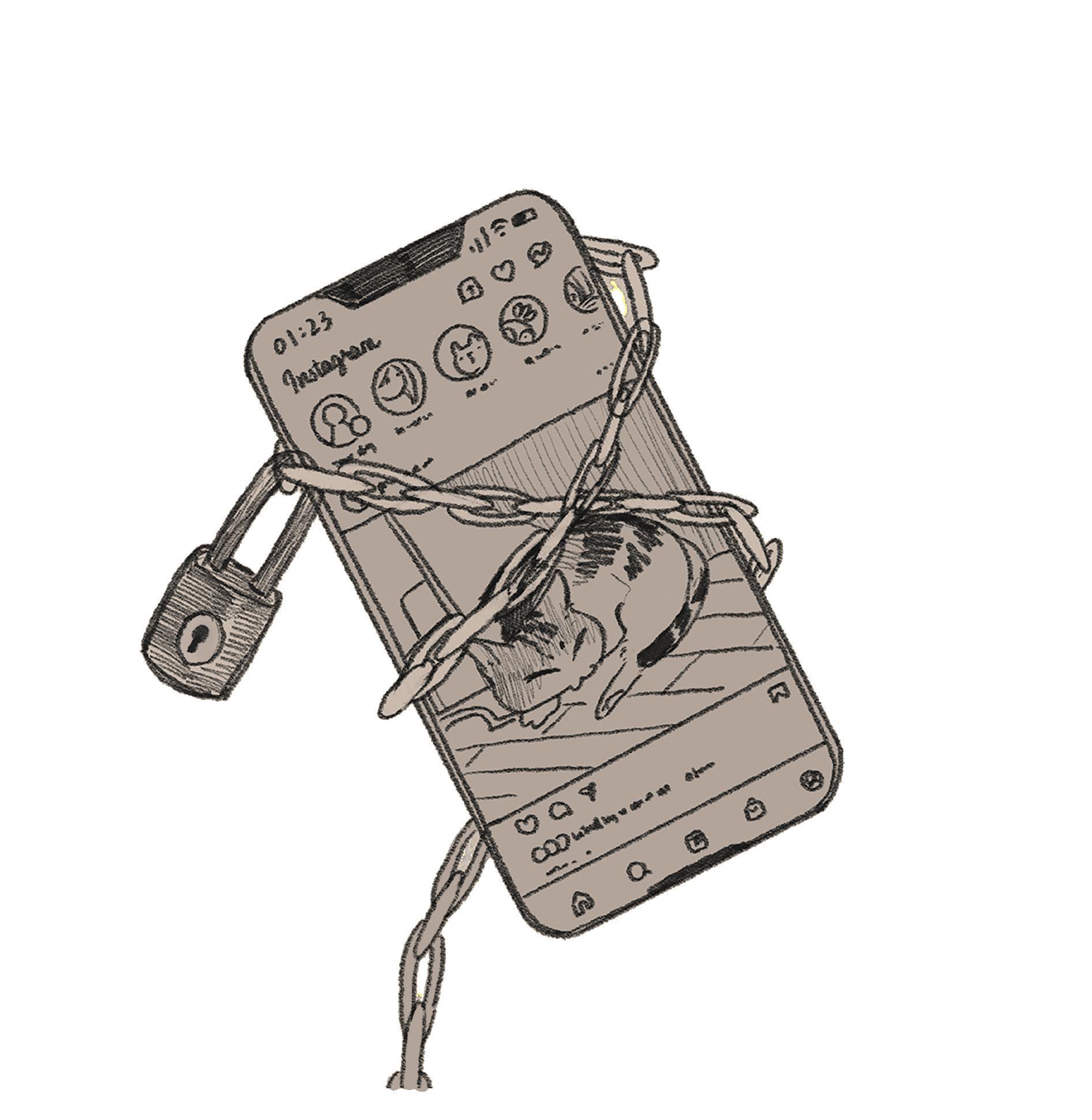
As double-edged as this sword may be, we are lucky enough to have a constant record of our existence. In my whole life, I’ve seen maybe two pictures of my paternal grandfather (not being lucky enough to have coinciding lifespans). I know my grandchildren and great-grandchildren will never face that issue. If anything, they might be overwhelmed by the sheer choice of pictures they’ll be able to see of Granny — lucky them. To be able to archive our lives and take a scroll down memory lane whenever desired is a privilege no previous generation has ever had. Reminiscing about the good days on the dark ones is surely a ray of light bright enough to outshine even the darkest shadow of Discord. On a more serious level, social platforms go a long way to making people feel less alone. Madeline Argy, the podcaster and model who got started on TikTok, once said that social media is beautiful because people can have the most original lived experiences that they feel alone in or embarrassed of, only to go online and realise they’re not alone. And, in a world constantly plagued by division, isn’t this sense of belonging what we all crave?
Illustration
by
Eloise Zheng
Close the St Andrean Rumor Mill
The drawback and dangers of St Andrews gossip culture
MILLY SMITH viewpoint writer
When I was a schoolgirl, gossip was our social currency. We moved in herds, trading on any nuggets of information about our peers’ romantic lives or the causes for any common-room fall-outs. Days of digging would result in a sparkling diamond of novel information, the revelation of which would have a mass of eager, listening girls crowded around you at break time, gorging on every word to come out of your mouth, eyes lighting up with joy at the most scandalous details they could later trade on themselves. The structure of the gossip economy was simple, and the power was intoxicating.
I imagined this schoolgirl habit would fade once I went to university and joined a community with less concentric social circles, dedicating myself to the fabled acquisition of real-life knowledge and not just the study of who has slept with whom. However, three years later, it appears that this university is just as removed from any grounding sense of reality, and that the St Andrews social currency is practically identical to that of my girlhood.
When conversing with a fresh face here in town, a connection is forged through the establishment of shared experience. Whilst this could be a module you are both enrolled in, or a society you both wish to join, it is more often than not a “wait, do you know ____?”
After an affirmative answer to this question, friendship is practically guaranteed.
“Mutuals,” as they are known, are the glue that binds us all together. Sharing anecdotes about a person you both already know enables this stranger to cross the permeable boundary from the unknown to the familiar.
An anecdotal exchange like the one detailed above is a pretty harmless way to vet a potential new friend, establishing that you both know and like the same people and thus are likely to get along. However, when the rumour mill begins to constantly churn out new and increasingly lofty tales of scandal and woe, gossip can become a venomous way to alienate individuals and demolish carefully constructed reputations.
At times, the inescapable spread of gossip can result in some of the more seedy characters who operate in St Andrews receiving their comeuppance and necessary exile from society. The speed with which this
happens, though, can at times be astounding. Somebody snogs someone they shouldn’t at the Union, ten group chats receive a notification, the information sustains twenty morning coffee-shop debriefs, and by the
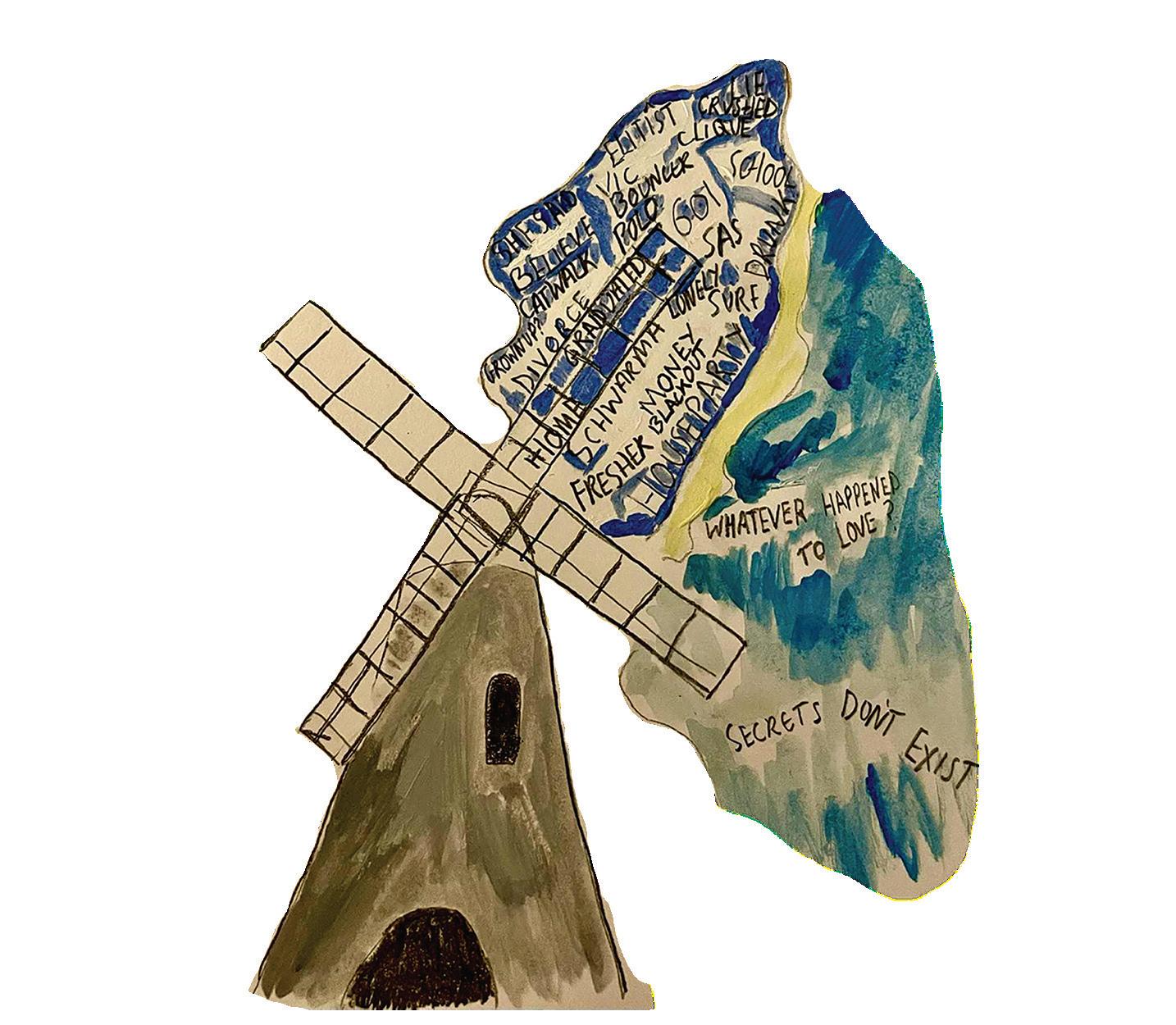
confused them with someone else, perhaps they embellished the truth for a few more gasps. Yet the information spreads faster than an infectious disease, and before long, half of our student community is sure that ____ is a cheating fascist with a coke problem. The individual in question will probably be forced to move to Dundee until the next social pariah is announced.
Gossip is thrilling. Hearing of an unexpected new coupling or a drunk misadventure is exciting and guaranteed to turn the cogs of conversation. However, as with your academic work here at this university, before citing, always check your sources.
The Hijacking of St George’s Flag
SAFFRON ROWELL Viewpoint Writer
The English flag — St George’s — has received a vast uptick in attention over the last few months. It’s normally rarely seen aside from the Six Nations and Lioness matches, but over the past summer, it’s been hoisted from lampposts, painted onto roundabouts and over potholes. Most significantly, though, it’s been raised at a series of farright anti-immigration riots across London. This issue means a lot to me. This summer, I was caught up in one of said riots on a day out with a friend of mine while trying to get out of a tube station. In a second, we were surrounded. Shouts, cries, the mass of a crowd and all of their anger. All of it in red and white. One woman had even painted the flag down the trail of her wedding dress. The co-opting of the English flag by a small subset of society reflects a dangerous movement. By adopting the flag of an entire nation, groups such as Tommy Robinson’s rioters, the EDF, and Operation Raise the Colours can purport that they stand for its whole population. This is not true. Despite the disproportionate focus which the media affords these groups, Reform gets over 100
times more mentions in the media per MP than the Liberal Democrats, who represent a significantly larger voter share — they do not stand for the entire country. They do not even stand for a majority of it. In fact, when asked whether immigration has had a net positive effect on Britain, 65% of respondents either agreed or were neutral.
What makes the flying of the St George’s flag so scary is that these extremist groups are invoking the power and legitimacy of the state for their cause. When caught in a swirling crush of rioters outside Victoria tube station, it is not a small sect of radicalised and misinformed extremists surrounding you. It begins to feel like England itself.
To the foreign reader, the sudden surge in the use of the flag may not seem like a pressing issue. The US flag, for example, is fairly ubiquitous. It waves from most front gardens, blends into most backgrounds. The same goes for Denmark, Türkiye, India, Switzerland, Sweden, and Finland — the latter of which actually has flag days mandated by law. This has never really been the case for England. I am not saying, to any extent, that all of these countries have a wholly positive relationship with their states or their flags. What I do want
to convey is that this is not the norm for England: the sudden appearance of St George’s crosses across the country reflects an unprecedented change.
I believe that the absence of the flag from the non-extremist British consciousness reflects a lack of healthy everyday pride in Brits for their country. We cannot function as a healthy society if we don’t share the belief that we live in a great country. That while every state has issues and faces challenges, we are better off here, together, than we would be elsewhere.
I don’t see that in my everyday life or in the people around me. I see growing levels of shame and burgeoning despair. This leads to a negative feedback loop. Shame of our country blocks out the space to celebrate any positive progress made, creates feelings of repression (a callback to the Victorian era — did that end well for us?) and anger, which then explodes intwo riots such as we saw this summer. And those riots are due reason to feel ashamed of our countrymen — so the spiral deepens.
But this is not a problem of individuals alone. It’s a political phenomenon which has been harnessed over the past decade by a variety of actors. I’m drawing this
circle at a decade, the year during which UKIP gained its highest vote share and sparked the Brexit debate. Since then, political actors such as Nigel Farage and Tommy Robinson have been weaponising genuine issues, rebranding them as a result of immigration and funnelling people’s hate into a volatile mass. It doesn’t help, of course, that the media has afforded them outsized attention. Nor that they have adopted the flag of an entire country as the symbol of their cause, effectively claiming spokesmanship for all English people. So what does it mean to be proud of your country? Surely not this. Pride is not exclusionary or hateful. It is joyful and inspiring. Racial hatred is not. What are you proud of in your country? What makes you happy to live where you do? I’m proud of the UK’s science sector, of our progress towards renewable energy. I’m proud of the role we occupy on the global stage, our support for the growth of Commonwealth states, and the steps we’re taking to repair our relationship with the EU. As of ten years ago, I would have said that I’m proud of our values of cosmopolitanism and unerring, borderline suffocating politeness. I wish I still could.
Illustration by Mia Fish
For the Love of the Listicle
Why we can’t seem to stop numbering things
DESDEMONA SMYTH
Viewpoint writer
I grew up in the era of the listicle — that glittering, clickable art form that promised wisdom, chaos, and self-discovery in neat, numbered packages. My early education in media didn’t come from The New York Times or PBS NewsHour. It came from People magazine headlines like ‘7 Signs Harry Styles Is Ready to Settle Down’ or ‘10 Celebs Who Rocked the Same Dress — Who Wore It Better?’ It was intoxicating, horrifying, and formative. Growing up in the late 2010s, the listicle wasn’t just a format; it was a cultural constant. It shaped how we talked about everything: love, self-worth, fashion, even feminism (see: “13 Ways Beyoncé Is Empowering Women Everywhere”). The listicle invited comparison and curiosity in equal measure. Which Disney Channel star are you most like? Top five signs he’s into you (or not). Twelve reasons you should love your body — even though we just showed you twelve bodies that look nothing like yours. The listicle was dizzying — a carousel of self-assessment — but also strangely empowering. Those lists gave me frameworks. They taught me how to categorise the chaos and
how to make sense of the infinite scroll.
And that’s the thing: the listicle, for all its superficial sparkle, is one of the most effective tools for disseminating information ever invented. It’s ancient, really. The Ten Commandments? A listicle. Hammurabi’s Code? A listicle, but make it legal. Even the US Constitution — a sacred civic text — reads like a particularly stern BuzzFeed ‘article. ‘We the People Present: 7 Articles That Will Define a Nation (Number 1 Will Literally Change Your Government).
Think about it: Article I Congress. Article II President. Article III the Courts; and so on, right down to the Bill of Rights: ten amendments, cleanly itemised. The Founding Fathers were trying to maximise readability; the listicle is a layout designed not for kings and scholars, but for people. You don’t have to wade through philosophical
treatises to understand it. You can skim it, grasp it, and quote it. In other words, the Constitution walked so BuzzFeed could run.
When you realise that, the listicle suddenly feels less like a guilty pleasure and more like a democratic act. Lists flatten hierarchy. They don’t require narrative arcs or grand authority; they invite participation. A numbered list says, “Here are the facts — you can make sense of them, too.” It’s no coincidence that the internet, the most participatory medium in human history, made the listicle its native format. Of course, not all listicles are created equal.

The ones I grew up with were a weird mix of empowerment and pressure.
‘10 Ways to Glow Up This Summer’ made me feel both seen and insufficient.
‘Which Girl Will Harry Styles Choose Next?’ made it clear that being chosen was the goal. Comparison was baked in — rank yourself, rate others, decide who wore it better. But comparison, as cruel as it can be, is also part of how we learn. Those glossy celebrity lists were, in their own way, training wheels for more complex judgment. They taught a generation of girls how to analyse, evaluate, and synthesise information, even if that information was about lip gloss. When the world later handed us lists about the climate crisis,
reproductive rights, or civic engagement, we already knew the format. We were fluent. Now, the same structure that once ranked One Direction members by dateability helps explain voting rights, racial justice, and foreign policy. You can scroll from ‘9 Ways to Style Your Jeans This Fall’ to ‘7 Ways to Support Trans Rights in Your Community’ without missing a beat. That’s not a coincidence — it’s a reflection of how the human brain likes to learn in patterns, steps, and lists. Yes, the listicle has its flaws. It can be shallow, manipulative, or maddeningly reductive. But it’s also a gateway — the most democratic format in digital media. It doesn’t demand reverence; it demands attention. It takes the overwhelming flood of modern information and breaks it into chewable bites, saying: here, take what you need, and keep scrolling. Maybe that’s the real genius of the listicle. It began with “Who will Harry Styles date next?” and ended with “How does a democracy hold itself together?” Same structure, different stakes. In the end, the listicle isn’t just a format. It’s a philosophy. It’s We the People, bullet-pointed.
Illustration by Lauren McAndrew
Psyched Out: Misaprehending Psychedelics
TRUMAN CUNNINGHAM Viewpoint writer
Having been under the boot of the law for the greater part of 50 years, psychedelic drugs now seem to be undergoing a revival. Silicon Valley types take shrooms or lick frogs in the desert. Joe Rogan seems obsessed with DMT (“it’s the spirit molecule, bro”) and Americans flock by the thousands to manicured ayahuasca trips in deepest Peru. With the celebrity interest comes dubious scientific studies — papers finding various obscure hallucinogens to be the cure to PTSD or Parkinson’s cult attitudes religious Suffice it to say, I’m sceptical. These drugs certainly aren’t recreational like alcohol

or marijuana, but neither are they the key to everything, especially not in the hands of tech bros and finance geeks. They are medically useful and should be legalised, but they should not be treated lightly. What are psychedelic drugs? Broadly speaking, they’re a class of non-addictive consciousness-altering chemicals including LSD, mescalin, and psilocybin, among others. With the exception of LSD, they are organic chemicals, isolated mostly from plants. In most cases, they have a long history of use among the indigenous peoples who live where these plants grow, from New Guinea to Siberia. Europeans have also used psychedelics like liberty cap mushrooms for millennia, in small quantities (though Hieronymus Bosch was inspired by a bad trip are probably overblown).
Interestingly, indigenous groups that have strong traditions of psychedelic use often don’t care all that much about the drugs themselves. Instead, the significance of ayahuasca or peyote is the ceremony that accompanies it, which usually happens regardless of how many cacti your tribesman found in the desert that day. This was lost on the early twentieth-century anthropologists who brought these substances back to Europe. Removal from ceremonial significance meant that, in the West, psychedelics occupied an uncomfortable position between religious mysticism and mere recreation. The best early writers on psychedelics, such as Aldous Huxley (whose Doors of Perception I printed out on the school printers when I was sixteen), recognised this dilemma and urged caution for the nascent tie-die revolution. “I am not so foolish,” writes Huxley, “as to equate what happens under the influence of mescalin or of any other drug with the realisation of the end and ultimate purpose of human life.”
The moral panic that banned psychedelics in Europe and the United States only meant that they developed an even greater cult status, however. The
intervention of the state meant that there was now something subversive in drugs like acid, and their former countercultural association only increased their allure for tech elites and venture capitalists who want to claim that edgy association. Today, we’re caught between two understandings of psychedelics which are impossible to reconcile. If they are lifechanging substances of genuine spiritual importance, then they cannot also be merely recreational. There are already plenty of stories about Wall Street bankers going on corporate ayahuasca retreats to improve “productivity” or “mental clarity”, but who end up quitting their jobs instead. As psychedelics begin to become legalised, the companies campaigning for their legalisation will attempt to cast them as fun diversions or as productivity or mood boosters. Sensible people should understand that they are both far more serious than that, with serious life-altering effects (both positive and negative), but also chemicals like any other. It is important that we don’t let either narrative dominate the conversation.
Illustration by Zoe Small
GEORGES TOULOUSE
Viewpoint writer
We live in a strange little world, we St Andreans. Nearly all of us come from disparate parts of the British Isles or the globe, and somehow ended up somewhere between Edinburgh, Dundee, the Old Course, and the North Sea. In our chosen exile, we have stumbled upon a wonderful little Fifan town, slightly overrun by golf paraphernalia shops but altogether quite charmingly preserved. The lucky ones get to live in turn-of-thecentury whinstone houses (the local stone, a very useful fact); we all shop at Tesco, and, when funds run low, at Aldi; we plunge into the quaint joys of Yorkshire tea; and eventually end up wearing Barbours, going on rainy beachside walks in wellies purchased after losing a toe to trench foot. In sum, the Brits consolidate their lifestyle and the foreigners adopt it.
However, it is not without some alarm that I realised how little most St Andreans actually know the Kingdom of Fife. For many, the furthest they dare roam is the Leuchars train station on their way to Edinburgh, not to mention the Sallies and Regs dwellers who have never set their eyes upon the distant Shangri-La of DRA.
Fife Biking Elegy
On exploring Fife on four wheels
And what a shame! How lucky we are all to live for a few years in the wonderfully named Kingdom of Fife and its rolling hills, secret beaches, and hamlets. Few people will ever have the privilege, so I beg of you to make the most of it.
Fife is littered with hidden gems: Crail, Anstruther, Dumferline –capital of Scotland for much of the late Middle Ages, FYI – Ceres, Elie, and Dunino to name a few. For all of us non-Fifers, we have only a few years to marvel at the beauties of our little Scottish peninsula.
To discover the glorious 512 square miles of Fife, there exists, of course, the genuinely bus system linking St Andrews to seemingly everything, which the great-sesameYoung-Scot-card will give you free access to.
But here I speak with a good deal of experience: you will never know, understand, or appreciate a place as well as one which you have biked through.

When you pedal your way from one town to the other, you truly understand the constitutive mesh of the place. I admit last hill was admittedly a bit ambitious, or stumble upon a hidden little church as I did in Dunino just last
Wednesday. There is just something about hopping on your bike on a weekday and rushing to a quiet little town with no purpose which going to the Spoons in Edinburgh will never quite match.
Wherever you are in St Andrews, you are less than a 30-minute bike ride from Dunino, 40 from Kingsbarns, half an hour out from the gracefully-named village of Blebo Craigs, and if you’re more ambitious, Anstruther, Ceres, or Elie are maybe an hour out. The beauty of biking is that whatever your skill level, you can do it. If you have been overambitious, hills can be walked up and returns made by bus — there is no shame if you are not ashamed. I ask you, truly: Is discovering something new, getting some fresh air, and some exercise not a better use of your fleeting time in Fife than tiring your finger out flipping from one TikTok to another? So do listen to me, or, rather, do as I say. Get a bike if you don’t already have one, and the next time you see a shred of sunlight through the clouds, pop on your helmet, go forth, and see for yourself how lucky you are to have landed in this wonderful kingdom we call home.
A Letter to Our Changing Town
STELLA PAK-GUÉNNETTE
Viewpoint writer
Dear St Andrews,
I say this with love, but you’re changing. Not in the “we need to talk” kind of way where someone’s accusing you of becoming distant. More in the way that your old friend suddenly starts using brand partnerships and saying things like “content strategy” unironically. You’re still you, just a little more polished, a little more… commercial. Every time something new opens, I get a little too excited. Maybe it’ll be a café that isn’t one of the same four we all rotate between, or a shop that doesn’t sell golf jumpers or really expensive cashmere. Then I walk past the scaffolding and see the sign… Caffè Nero. Hotel Chocolat. Or most recently… Socktopus? None of these are bad. They’re fine. But that’s sort of the issue — they’re fine. They’re safe. They’re everywhere. Part of what makes you so special is how different you are from any other uni town, and how radically unlike home
you seem. But lately, it feels like that’s starting to slip a bit. Every few months, another familiar logo appears — perfectly branded, completely interchangeable.
Your charm has always been in your predictability, the same pubs and the same accidental eye contact with the side characters in your life that you manage to see everywhere. It’s all part of the appeal. Yet every time a new chain opens, shiny and alluring, you feel a bit less like yourself and a bit more like everywhere else.
To be fair, this shift says something flattering about you. You’ve never exactly been obscure, being ‘The Home of Golf’ and one of the oldest universities in the world — and somehow one which ranks above others with buildings taller than four storeys. But the kind of attention you’re attracting now feels different. The new openings suggest you’re not just historic… you’re marketable!
The fact that you can lure a celebrity sports bar and a Hotel Chocolat means you’ve developed a certain lifestyle appeal.
The Tiger Woods x Justin Timberlake sports bar is the clearest example so far. It’s impossible not to be curious. It’s
shiny, probably good, and will definitely be packed. But it also feels like a turning point, a reminder that you’re no longer just a place but a brand. You’re a town learning to merchandise its own character.
Of course, there are upsides: more variety, more jobs, more money. Change isn’t automatically bad. And, to be fair, you’ve always known how to sell yourself. The golf, the history, and the royal alumni, are all part of your longstanding (and successful) PR campaign.
So this isn’t exactly gentrification; you were never struggling financially. It’s more like brandification, and maybe that’s inevitable. More students arrive every year, many of them international, and you adapt. We say we love your quirks, but we’re still the first in line for the brands we recognise.
I’m part of it, too. I’ve gone to Caffè Nero. I’ll probably end up at T-Squared Social; I’m a North American student, after all — exactly the demographic these places cater to. Perhaps that’s why it feels strange to point it out. The version of you I fell for might not be the one I’m helping to change.
Maybe this all sounds dramatic, but don’t
“Every time a new chain opens [...] you feel a bit less like yourself.”
worry. You’re still beautiful, still tiny, still full of students who think they live in some kind of BBC period drama. But the small things add up, and I can’t help noticing when “new” doesn’t feel new anymore, when you start catering more to what visitors expect than to what makes you actually interesting. Listen, I don’t have a grand argument, and I’m not sure there’s one to make. Things change, towns adapt. I just hope that, as you keep modernising, you remember that people come here precisely because you aren’t everywhere else, and that’s the only thing worth selling.
Love,
A concerned student
Illustration by Hannah beggerow
Take the Leap: The Merits of Exposure Therapy
GAYATRI CHATTERJI
Viewpoint writer
Feeling socially anxious? I would go so far as to say that, divorced from its legitimacy as a very real mental health condition, social anxiety has been normalised as an inevitable aspect of Gen Z culture. By this, I am referring to the fact that we have gone down the road, as a generation, of living for others and their perceptions of us. I’m guilty, yes, I care what people think of me. That is part of the human condition, and the point of my article isn’t to deny this. But I have a contention with the reasons for our behaviour. The
countenance of social nonchalance that clouds our generation is a form of escapism wrapped in this all-important conformity and a limited idea of the aspirational ‘way to be.’
And it’s a lot more damaging than we think.

The most visible aspect of this is the centrality of social media in our day-today lives. Online, glued to our phones, we maintain a constant stream of close comparison with everything we see online. The algorithm fosters echo chambers, which show us things over and over again, to the point where, regardless of their value or validity, we start to believe them. Recent trends have decided that maintaining a certain level of ‘coolness’ requires suppressing every emotion a healthy human might exhibit. “Crashouts,” as we call them (Gen Z for temporary loss of nonchalance), are judged by their validity, lest we express unnecessary or embarrassing signs of emotion. Even as someone who could never achieve any semblance of being unbothered, I find myself aspiring to
that level of cool and, let’s face it, completely performative indifference. But who are we performing for? The cult of ‘nonchalance.’
I have never, and will never, be nonchalant, and I spent a long time letting this make me insecure. That self-consciousness showed me the true extent to which we embody these values, manifested so strongly here in the bubble. A sense of undying frustration with this nonchalance led me to challenge it, and I can confidently say we all need to. Now I reap the rewards of a form of exposure therapy I forced myself to undergo; now it no longer bothers me that people in my seminars look as shocked as if I’d slapped them across their face if I greet them outside of class. I drew a goatee on my face and went out dressed like a dad, and focused far more on the fact that strangers got a chuckle out of how I looked than the fact that a friend visibly pretended not to know me. I’ve stopped hating my entire existence for being a bit of a flirt after a few drinks, because I no longer consider it a crime that we take an interest in people and actually express it. These were hard conclusions to reach, and the last thing I want to come off as is someone looking for the same kind of clout we seek in our social framework. I think we all hide the best parts of us, those
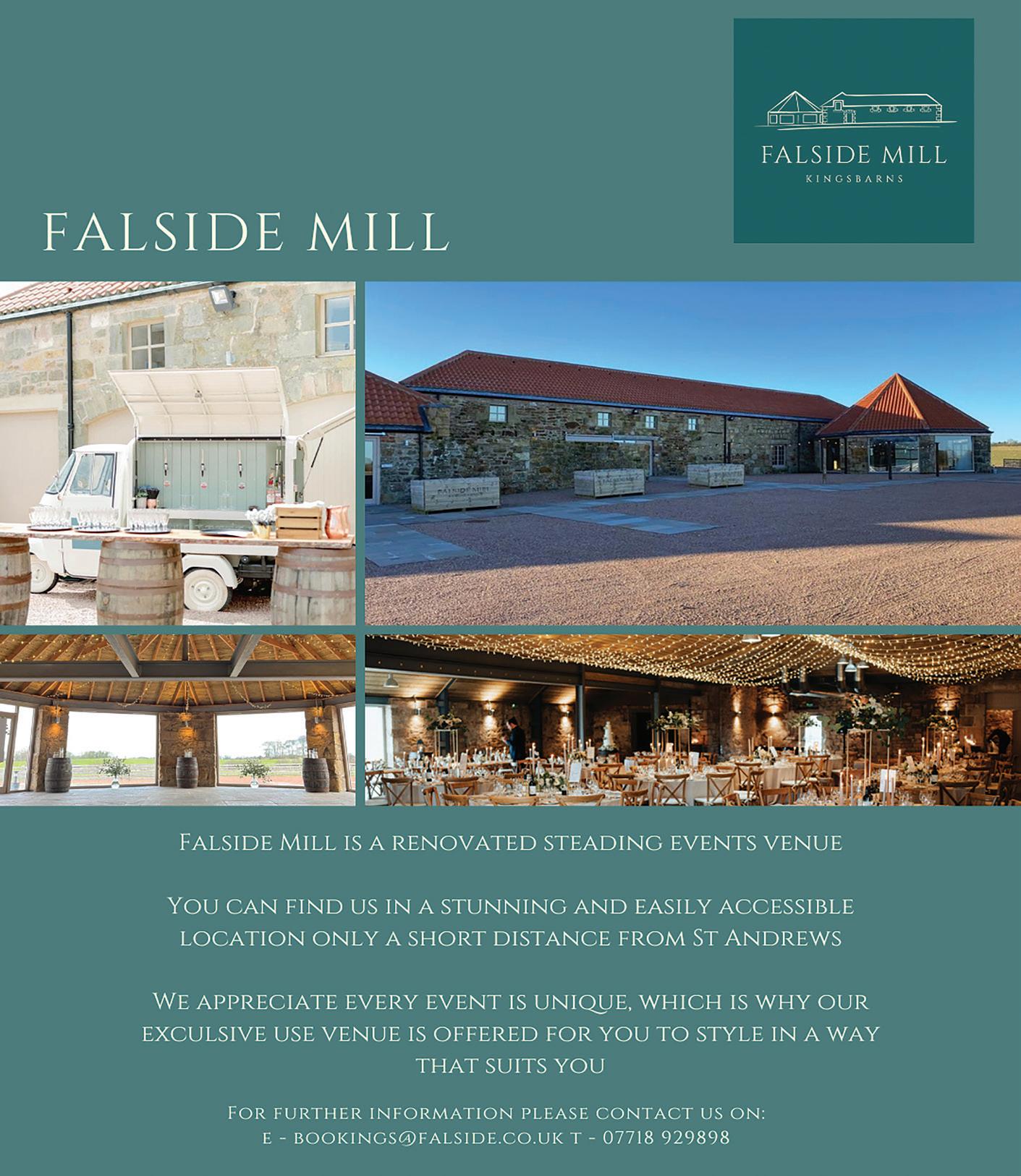
“Recent trends have decided that maintaining a certain level of ‘coolness’ requires suppressing every emotion.”
which emote, feel, express, and love, behind our ridiculous quest for nonchalance. So please, for the love of God, shoot your shot, send that DM and get ghosted, smile at that person, go outside, not looking your best. It just takes one scary, self-imposed experience to realise that where we should really be directing our nonchalance is at the fact that the world doesn’t stop spinning during a fleeting moment of embarrassment. We need to start allowing ourselves and those around us to live, to be human, to have a sense of humour, and to stop living for an image in other people’s minds that we can’t control.
Illustration by Elizabeth Lang
TILLY FRAIN-BELL Features Writer

EDITOR: MRUNMAYI KAMERKAR
From the Track to the Movies
Tom McNab and the Legacy of Chariots of Fire
Have you ever sprinted along West Sands beach, music blaring, just to feel like you’re the main character of your own movie? Maybe you’ve even imagined yourself in slow motion? If so, you’ve been reenacting the opening scene of the iconic 1981 Oscarwinning masterpiece, Hugh Hudson’s Chariots of Fire, where a training camp of athletes in white splash their way along West Sands. The opening scene quickly became iconic, inspiring sporting stars and putting St Andrews on the cinematic map.
Athletic Advisor and Technical Director, Tom McNab, recalled the day that the filming took place. The captured scene “attempted to create a Brigadoon atmosphere,” McNab told The Saint, giving viewers “a sense of Scotland at the time which many would have been unaware of.”
St Andrews wasn’t the only Scottish filming location. The Highland Games section of the film was shot at Crieff Hydro Hotel in Perthshire, featuring a perfect hilly backdrop for an athletic sequence. Famously, protagonist Eric Liddell falls to his knees during the race only to then get back up and win.
Having directly influenced the Scottish locations in the film, McNab also took inspiration from his own sporting career. “The sequence in which Liddell is knocked over in the 4 x 400 is where I competed in the Scottish schools championships 30 years before,” he said.
“McNab brought extensive sporting expertise and a unique Scottish influence to the film.”
Brought up in the tenements of Glasgow, McNab’s love of sport began at an early age. Before moving to the 1920s housing area in Ridgeway, “I had never ever even seen a ball,” he said. In Ridgeway, he “met a bunch of boys and we never stopped playing football, hockey, and cricket.”
Soon after, ball sports turned into a passion for athletics. “I was training myself to be an athlete without realising I was doing it,” McNab recalled. As Glasgow had a lack
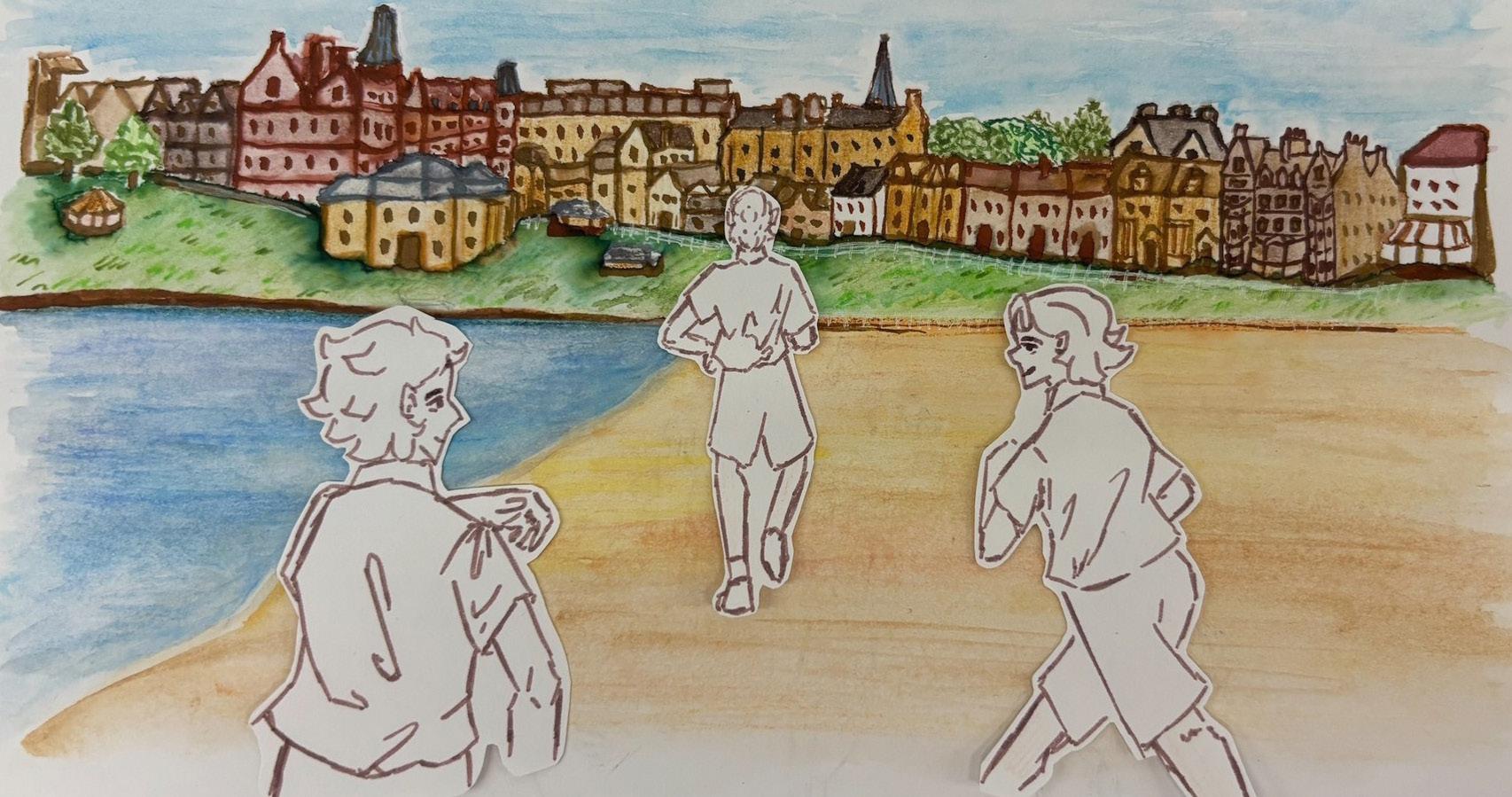
of athletic facilities at the time, he prioritised the high jump because it required little equipment, unlike the long jump and hurdles.
Despite being small for his age, McNab competed in the long and triple jump in his first lowland games at 16, whilst ‘tattie-hunting’ in the South of Scotland. “I turned up to a farmer’s field with about 100 spectators,” he said.
When he asked where the pit was, he was told there was none. Up against barefoot competitors and with no sand in sight, McNab still managed to win.
“It was all quite primitive,” he recalled.
McNab also competed in the first Scottish schools championship in Glasgow’s Helenvale, jumping fourteen metres and finishing second overall in Britain. “I benefitted from all those years of competing with my friends,” he said. “I was training lots without realising.”
By the end of 1952, McNab retained his position as second in the British Triple Jump after competing in the British Championships. Following a few years as an officer in the RAF, he discovered more athletic opportunities in England, and in late 1953 received word that he was a potential candidate for the 1954 Commonwealth Games.
McNab continued to focus on his sporting career over academics. “No one at school ever said, Tom, I think you should go to university and study history and English because that’s what you are
best at,” he said. Despite receiving an offer to study at the University of Glasgow, McNab continued to pursue his sporting passion with a position teaching physical education at Glasgow’s Jordanhill School. Working at Jordanhill, McNab found the PE teaching “an absolute waste of time.” From there, he taught for two years in Bermuda and returned to England in 1962 to take up a national athletic coaching position in Dunstable.
In 1964, he founded the Five Star award, which is utilised by schools all over the UK to get children involved in a range of athletic events. The scheme raised around £1 million per year for the British Athletics Association and trained a range of competitors, including former 1984 Olympian Seb Coe. “We not only got millions of children into athletics, but it was also pumping money into the sport,” said McNab. Known today as 5 Star 5 Steps, the award continues to encourage athletic participation in British primary schools.
A wealth of sporting and teaching experience finally led McNab to the role of Technical Director for Chariots of Fire. Initially hired by director Colin Welland as script consultant, McNab brought extensive sporting expertise and a unique Scottish influence to the film.
The iconic coastal opener came from Welland, who was influenced by Leni Riefenstahl’s 1936 film Olympia, which portrayed the first time that the Olympic baton was carried throughout Europe
by Olympians. “One of the sequences portrays a half-naked runner carrying the Olympic torch through the waves. Colin was obsessed with this. He thought it was marvellous,” said McNab. “That’s how we ended up filming in St Andrews.” “I sat on the beach watching it all happen,” he reminisced. The pictured athletic training camp dashing along West Sands is, in fact, historically inaccurate, as such programmes did not officially exist until fourteen to fifteen years after the creation of the film. Yet direct inspiration came from Olympia, often considered to be one of the greatest sports films ever made.
Despite film fanatics associating the hearty scene with Vangelis’ famous soundtrack, the actors simply ran to the sound of the waves. The music was only added in post-production. And so, the great legacy of Liddell and Harold Abraham’s journey to Olympic gold began. For McNab, watching the runners charge through the surf marked a significant point in his career, one which combined his sporting expertise with his Scottish heritage.
So, when your parents ask to watch Chariots of Fire with you, please give it your full attention. You might just find yourself lacing up your trainers, cueing Vangelis, and heading for the dunes.
Illustration by Dasha Andreeva
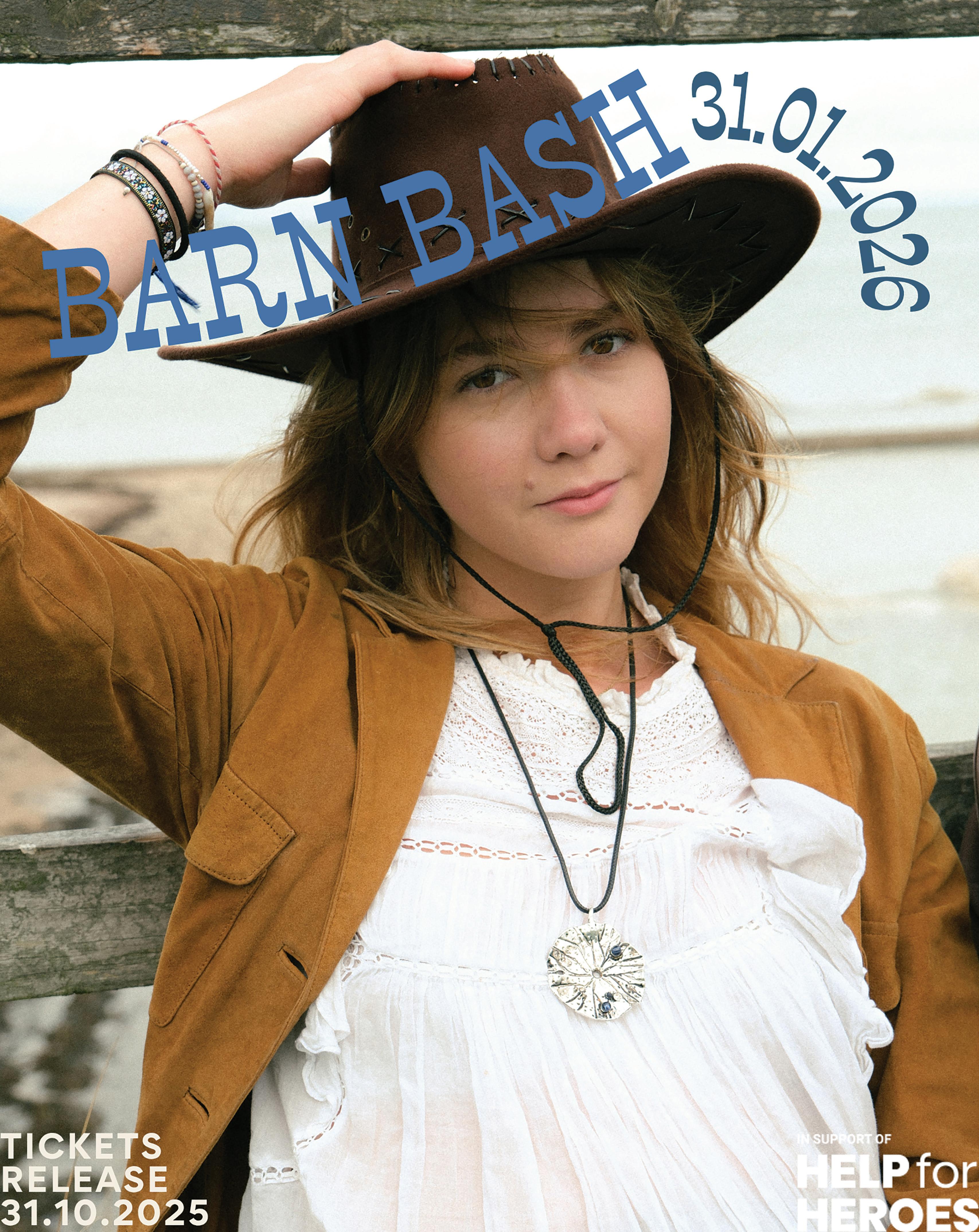
Relocation and Return
Parents share their experiences raising families in St Andrews
ANNA REZNICK Features Writer
“It’s a funny place to raise a family, to be honest, because it’s sort of like a lot of very young people and very old people,” Emma Crowe, mother of Hugo and Amelia, told me.
If you look beyond the crowds of the elderly trying not to get run over by throngs of students rushing to tutorials, you’ll see that St Andrews is very much a family town. In fact, the University contributes to the younger generation of St Andrews residents.
“All the kids’ things we go to are just so popular that there is a complete mix of people that are local, people that are connected to the University or people that are in the local area,” Crowe said.
The large community of families proved helpful to Michael Stark, a father of four. Last month, his family moved from a small town in Texas to St Andrews so that he could pursue a Master’s degree in literature. Stark was initially worried about his family finding their footing on the other side of the Atlantic Ocean.
“There were just the concerns of being able to set up a household,” Stark told me. “We had a very close- knit community in Texas, which was difficult leaving.”
However, St Andrews’ supportive network of families proved especially welcoming. “It hasn’t been especially difficult to find other people who are in our same sort of situation,” Stark said. “You meet them by happenstance, by going to programs that are designed for kids. You’re sure to run into another university student or faculty member with kids.”
Just like first-years, upon arriving in St Andrews, Stark and his family had to be constantly outgoing. As his children will be homeschooled for the following year, his family cannot rely on the crutch of classmates to build friendships.
“Moving her family to St Andrews was less of a migration and more of a homecoming.”
“It just requires a lot of being aggressively hospitable and aggressively seeking out those other families — especially because they’re not enrolled in school and don’t have a social network built in with their class,” Stark said. “That’s why we’re kind of aggressively going out and
seeking out those sorts of opportunities. They just kind of come to you if you live somewhere and are already there and established.”
For Crowe, moving her family to St Andrews was less of a migration and more of a homecoming. Her move to St Andrews from Suffolk three years ago was a chance to give her children the same childhood she had, as well as to reconnect with familiar faces.
“I always wanted to come back. I’m happy that panned out,” Crowe said. “My mum
haven’t gotten them into any sports, like the Junior Saints, but we plan to.”
Both parents also made note of the local library and how it acts as a support system. For Stark’s family, exploring the public library has helped to integrate his family into the happenings around town. “Give a shout out to Patti,” Stark told me. “She clued us into some different kids’ programs and rummage sales and all sorts of stuff that was going on. They have a reading group

still lives locally. I found a lot of my friends that I went to school with are now coming back as well. We’re getting to that age.”
For Crowe, the memories that her children make now are similar to her own. “We were always on the beach,” Crowe said. “And my kids are exactly the same. We go to the beach all the time.”
St Andrews’ proximity to the natural world has proved a big asset for Stark’s family as well. “They love [...] the Botanical Garden, and they love the beach,” Stark said. “It can be freezing, and they’ll still go in the water and splash around. They have zero compunction about taking the polar plunge.”
Beyond the scenic landscapes, St Andrews also offers a variety of extracurricular activities for its younger citizens. Stark’s children are involved in Dance St Andrews at a local Episcopalian church, amongst other extracurriculars.
“My son, he altar serves at the local Catholic parish,” Stark said. “We
on Thursdays and Saturdays for toddlers.”
The broad range of activities offered to families in St Andrews can come as a surprise given the town’s limited size. “I think it’s unusual to be in such a small place that has so many facilities,” Crowe said. “When my kids are older, they could walk and do any sport or any music, anything you can think of. All those different links and experiences that, if you lived elsewhere in the country, there’s just no way that you could have that easy access to and that much local knowledge.”
Crowe accredits the unique balance
St Andrews boasts between small-town friendliness and metropolitan-level opportunity to the University. “There is more stuff for the kids that wouldn’t be there if it wasn’t for the university,” Crowe said. “You know, all these facilities wouldn’t be maintained in the way they are, or things like the Wardlaw Museum or whatever, [...] if it wasn’t for the University.”
The impact of the University is felt in
other ways, as well. The large population of international students and faculty exists at all levels of education within the town. “I don’t know if it’s just because [...] my kids go to the Uni nursery, but a lot of their friends speak different languages,” Crowe said. “A lot of staff are the same [...] I think it’s great.”
The multicultural impact of the St Andrews community is already visible in Crowe’s daughter, Amelia.
“What did she say the other day? She said ‘Dankeschön,’” Crowe said. “She was quite chuffed with herself. She learns all these different things from her peers. I don’t think you’d get that normally, so that’s quite fun.”
While the child-rearing experience offered by St Andrews does have a wide array of benefits, it naturally also has its shortcomings. Though Crowe finds the University’s nursery to be an excellent source of childcare, the limited availability does weigh it down. “I would say one of the big reasons I moved
“The unique balance St Andrews boasts between small-town friendliness and metropolitan-level opportunity”
home and then was like, ‘I’m not moving again,’ is there was a really long wait list for all the nurseries in St Andrews,” Crowe said. “I think when I moved, [it was] about a year you had to wait to get into a nursery. So you basically have to put them down when you’re pregnant if you want to go back to work.”
As a Master’s student, Stark has found some difficulty in balancing education and parenting. “I tried to bring one of my daughters into the library on a Saturday, just to print something out, and then was kicked out almost immediately because they have a no-child policy,” Stark said. “It certainly makes things difficult for university students with families.”
Stark acknowledged that children can be frustrating in public spaces, but said that a greater consideration for families would be beneficial: “I just think having the understanding that some students are gonna have kids, and it can be difficult to bring them places sometimes. So having that inclusivity towards families would help.”
While Crowe too appreciates the University, she joked, “Maybe not at 2am when I’m knocking on the [door of the] student [flat] next door.”
Illustration by Kyla
Biesty
TARA PHILLIPS Features Writer
Tucked away on Market Street is Le Rendez-Vous, a crêperie and restaurant co-founded by two long-time friends, Aldo and Rico. Opened in January 2005, the creperie has been a cornerstone of the St Andrews food scene for over twenty years.
“We are just best friends and we opened this business here together,” said Aldo.
Although modest in nature, this shared dream between two friends has quickly evolved into a cherished eatery for many. After all, Le Rendez-Vous is known not just for its menu, where banana Nutella crêpes are a clear favourite, but also for the genuine warmth and easy conversation that Aldo and Rico offer to every student walking through their doors.
For Aldo, his favourite part of the job is “meeting new people and talking to people. Every year, [there are] new faces, and in the past twenty years, we have seen a lot of people. Maybe we have served two million customers.”
He then pointed out the bulletin board hung at the entrance of his shop. Covered in bills from across the world, it serves as a testimony to how much they value their customers. “We get all kinds of people from all over the world […] This [represents] all the people we have served over the
Le Rendez-Vous A meeting point for everyone
years. We’ve met [people of] all cultures, all backgrounds, all nationalities,” he continued. Rico agreed, “I love what I am doing [...] We complement each other well.”
Ethan Distelbrink, who graduated this year, was a regular. “I would go to Le Rendez-Vous often,” he explained. “I would go for a crêpe during my library break at least once a week.”
Aldo remembered him fondly: “We know all that group well, Ethan and George, they are good guys. They used to come here and book a table for ten people. They came here a lot.”
“It wasn’t just the food. I would always chat with Aldo and Rico,” Distelbrink explained.
“I felt like I built a relationship with them over my four years studying there [...] We would always chat about all things football. They were also fascinated by the fact that I was Dutch, and in my last year, when I was applying for jobs, they were keen to see where I would end up.”
For Aldo and Rico, the most important part of their business is the students: “The students are part of this place.”
Le Rendez-Vous even closes when the students aren’t in town. “Because our business is mainly students, it’s quiet when they aren’t here. We get to relax and stay home,” Rico explained. “It’s mainly students, mostly [in] their first year. Because second-year students’ lifestyles change. They move into flats and start cooking at home [...] We don’t take it to

heart because we know it’s just part of growing. We understand.” Aldo reminded him, “Still, we always have our regulars.”
With time comes experience, and with experience comes stories worth sharing.
“Not in his shop, but when I worked on South Street, I used to make pizza for Prince William [...] He would come almost once a week for four years […] He’s a lovely guy,” Rico said. “I don’t think he realised that we knew him because, at the time, I was the manager and I told all my staff not to stare at him, to treat him normal[ly], like any other customer.
“He used to come in a baseball cap, always smiling, very polite,” Rico recalled.
“He used to get the Hawaiian Pizza, you know, with ham and pineapple [...] One day, he surprised us and got chicken nuggets.”
The two owners lived in France before making the choice to come to St Andrews and set up shop. “Here it’s beautiful, people are nice, and it’s peaceful,” Aldo said. “It’s good to have a family here,” Rico added.
Before it was a creperie, “an older lady used to work here, but she just wanted to give up, so we decided to take it. And we created this place,” Aldo said. They decided on Le Rendez-Vous because “rendez-vous” in French means meeting point. “It’s for everyone. You can have a rendez-vous with a guy, or a date, or [for] a meeting,” said Rico.
Over the years, the two have seen the town change. “There are a lot of people coming in, new businesses, new investors [...] A lot of places have opened. Not a lot of places have been here for 20 years,” Rico explained, observing the town’s gentrification. Aldo credits it to rising rents, “It’s because of cost. It’s an expensive town.”
After two decades, Le Rendez-Vous remains more than just a crêperie — customers return year after year. Even during changing times with rising rent, town gentrification, and shifting consumer habits, Le Rendez-Vous maintains what its name promises: a meeting point for everyone.
Photo by Christopher Kelly-Brown
Football, Beer, and Ontological Arguments
MRUNMAYI KAMERKAR Features Editor
Long before attracting golfers and Oxbridge rejects, St Andrews once drew religious pilgrims from far and wide. Dotted around the town’s ruins and amongst its many churches, the theological legacy of St Andrews is hard to ignore. If you’re looking for God in 21st-century St Andrews, however, the football pitch might just be the place.
“Everyone thought it was a joke, but I was actually serious,” said Noah Getz, founder of Interfaith Football League, who now pursues a career in sports consulting. While at St Andrews, he started the league to bring the town’s faith societies together to battle it out on the pitch.
Interfaith football began with a game between Jewish Society (JSoc) and St Andrews Muslim Students’ Association (STAMSA). “We lost that game of football, but that wasn’t what it was about. It was about meeting them and seeing that actually, we were ridiculously similar,” Getz explained. “We’re both weird faith societies [at] a tiny university in Scotland.”
After the success of the first match, Getz began his campaign to start a league rivalling the Premier League. “I just went around asking, ‘Do you want to be involved?’” Getz recalled. “I think we got seven in the end.” In addition to six societies from St Andrews, Getz even got Dundee’s Catholic Soc on board, which would come in on the bus every Tuesday night.
With teams lined up, Getz was given £80 from the Sports Centre to “go get a trophy made from the cobbler.”
That trophy was lifted by Hindu Soc, who won the League’s first edition.
For the league’s final game, using gameplay footage from the first few matches, Getz put his cinematography to work. “It looked really slow. I was like, this has to be intense. I put Bill Collins in the back, and I sped everyone up to 1.5 [speed] on the editing software,” Getz recalled. “It looked like the Premier League.”
Partnering with St Andrews United Football Club, Getz organised finals with food and the cheapest beer in town to raise money for the club’s local football program. “I wasn’t sure with a bunch of faith people if we would sell beer, but we
sold a lot of beer,” Getz said. Nearing 250 spectators, Getz recalls the finals being “such a funny party with all different faith groups playing football and lots of alcohol.”
At halftime, Getz even ran a crossbar challenge for the crowd — won by University Chaplain Revd Dr Donald McEwan. “He ran for it, and I thought, no way,” Getz said. “He was the first person to do it, but he went and he pinged it. It went right off the crossbar.”
This environment was and remains crucial to interfaith football. “Sports can be pretty competitive. That atmosphere can be quite acetic,” Getz explained. With the Interfaith League, however, it’s about coming face-to-face and getting to know one another.
“I remember talking to the STAMSA guys about the ontological argument for God and all these theological ideas that you only have time to read about when you’re a student,” Getz said.
Beyond just ontological arguments, interfaith football today remains committed to “bridging gaps between communities, overcoming prejudices, and having actual communication,” explained Lucie Asseo, head organiser for Interfaith Football this year.
“If we have an interfaith Shabbat
dinner, there’s maybe not going to be as many students from other faiths,” Asseo explained. “Whereas football [is] a good way to get people together. Football works really well because it’s a really universal sport.”
Marc McGettigan, captain of Catholic Society’s football team, described a similar journey: “It started off just being about the football for me. Now, with organising the team, I have a better understanding. It really does allow for good connection[s] between the societies [...] There isn’t that tension or strain that people might envision religious societies to have.”
“For me, it’s a way for people to see how open and welcoming the faith societies are. You don’t need to be involved in our faith to join,” McGettigan said.
“A lot of people here — studying philosophy, studying theology — are interested in faith,” Asseo said. For her, Interfaith is valuable in providing a space for people to explore faith through conversation and connection, distinct from explicitly religious practices.
“We go to the pub together after,” she explained, “and it isn’t necessarily about talking about faith but about getting comfortable around one another.”
Puzzles

PUZZLES@THESAINT.SCOT
@THESAINTSTA
‘Plunge into Tradition’
EDITOR: LUANA VAN ORANJE
MINI CROSSWORD by Madeleine Abignale
ACROSS
1. Murdered Archbishop Beaton, who had George Wishart burned in front of St Andrews Castle
6. Head coach Sadiku of Celtic FC
7. Drink given to Catherine at Thrushcross Grange in Wuthering Heights
8. Collision
9. University of St Andrews student John, who rescued five stranded sailors in 1800
DOWN 1. Actress Dame Judi
2. Oldsmobile model
3. One who doesn’t eat cheese or 9a
4. Occupied
5. Ostentatious, in Oxford
REBUS by Luana van Oranje
Phonetically interpret the images to create a word, name or phrase
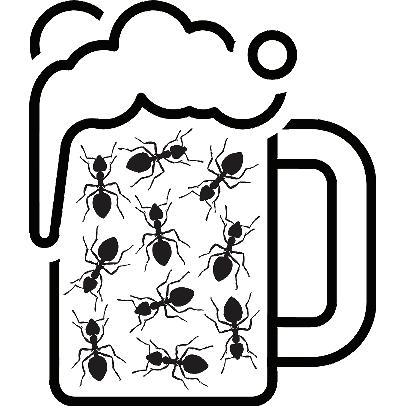

SPELLING BEE
by Luana van Oranje
Make 4+ letter words using the given letters. Words must use the center letter, letters can repeat
CROSSWORD by
DOWN
Julia Emery
ACROSS
1. St Andrews’ favourite familial sin
12. Canine restaurant restriction
13. Home of the larynx
15. Taste street
16. Reason to carry a penny or a horseshoe
19. Pubs in the Wild West
21. Sky in Bourgogne
22. Operation resulting in a sum
25. Central street
26. Suffix for prop– or meth–
27. Two truths and a ___
28. School in St Mary’s Quad, abbr.
29. Freshers’ Week ailment
30. Frequent occurrence in 601
31. East Sands body of water
32. 1a, 16a, 54a, and 62a are reasons to participate
35. Highland estate owner
37. Bratz unit of time
38. Predecessor to 32a
39. Above deck
42. Core muscles
43. -de-sac
44. Single-stranded messengers
45. One of five in ‘pronunciation’, abbr.
46. Southern raccoon relative
48. Sierra or Denali mfr.
49. Smart baby bassinet
51. The act of ousting
54. Example: off the shoulder for a First Year
56. Barn Bash real-deal
60. Orchestra subsection
61. The Physician street
1. Raggedy female
2. Hairy Highland mammal, à la Scot
3. One who you can see through the NHS
4. Things to connect
5. Bronze Age town in Surrey
6. Young madam
7. Bikini blast, briefly
8. European ice hockey tournament
9. Solo circumnavigator Erden
10. Wednesday night activity, à la American
11. All the desks in the King James library, for example
14. Axle attachment
16. Hat ornament
17. The Addams Family adjective
18. Early 2000s graffiti artist
20. Dukas ballet
22. SAS trip dest.
23. Already done
24. One way to handle a conflict
29. Longest serving US pres.
31. Ice Age sloth
32. Who I should consult about my essay
33. Ancient region in Asia Minor
34. Library basement activity
36. Mel. and Syd. country
38. Medieval Guineveres
40. River blocker
41. PC key
43. Mob ‘made member’ with major status
45. 2017 BBC drama
47. Not ‘neath
62. Commits a faux pas outside Sallies Quad THESAINT.SCOT/PUZZLES 16
KILLER SUDOKU by Isaac Oldham
Like a normal sudoku, but with a twist! The numbers in each coloured ‘cage’ must add up to the total in its corner. No repeating numbers in a cage.
‘Pubs’ by Luana van Oranje
46. Royal Navy officer, abbr.
50. Eleven in Tagalog
52. May be bare when participating in 32a
53. Roller coaster feature
55. Sixth sense, abbr.
57. Obviously
58. “__ phone home!”
DOUBLE OR NOTHING by Madeleine Abignale
59. Hydroxide
Each square in this grid contains either two letters or no letters. When read together (across or down, as normal) these answer the clue. This may skip one or more squares.
ACROSS
1. Monday where foam fights occur
5. Pub crawl stop 6. Fine by me
7. Italian village in Lombardy, once called Cemide
8. What Gracie Abrams was for Taylor Swift
9. European society founded in 2005 that promotes the study of 20th century history
NEW PUZZLE!
DOWN
1. Completely destroy something in order to unclose it (2-2)
2. No longer works (1-3)
3. Pouring jug, or the America’s Cup trophy
4. What a Fresher may be to St Andrews
Find groups of four items with something in common
by L. van Oranje



EDITOR: MANRAJ GILL





CHRISTOPHER KELLY-BROWN Photographer
Kinetic Energy: St Andrews in Motion
MARY MARKIS Photographer



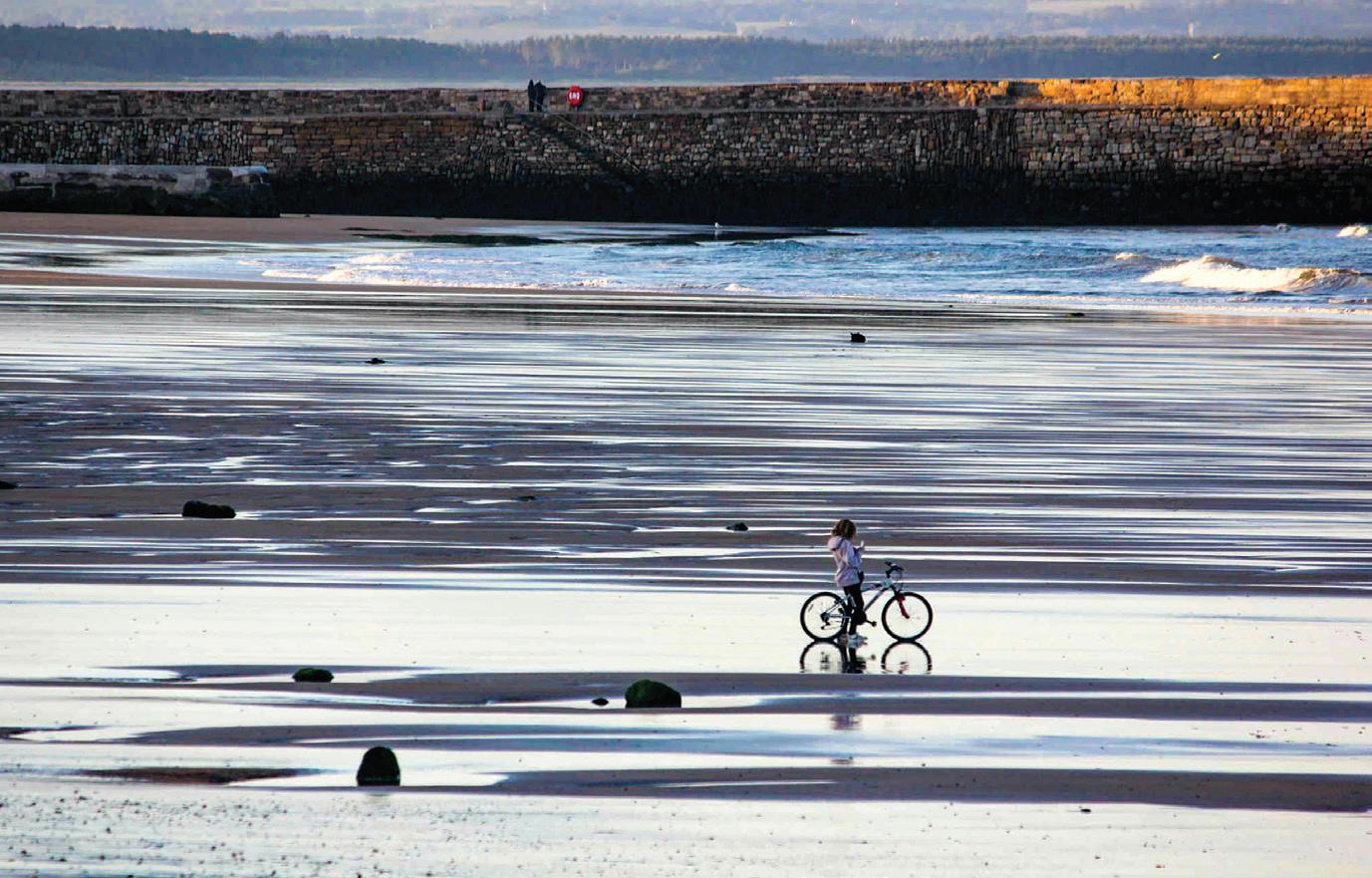
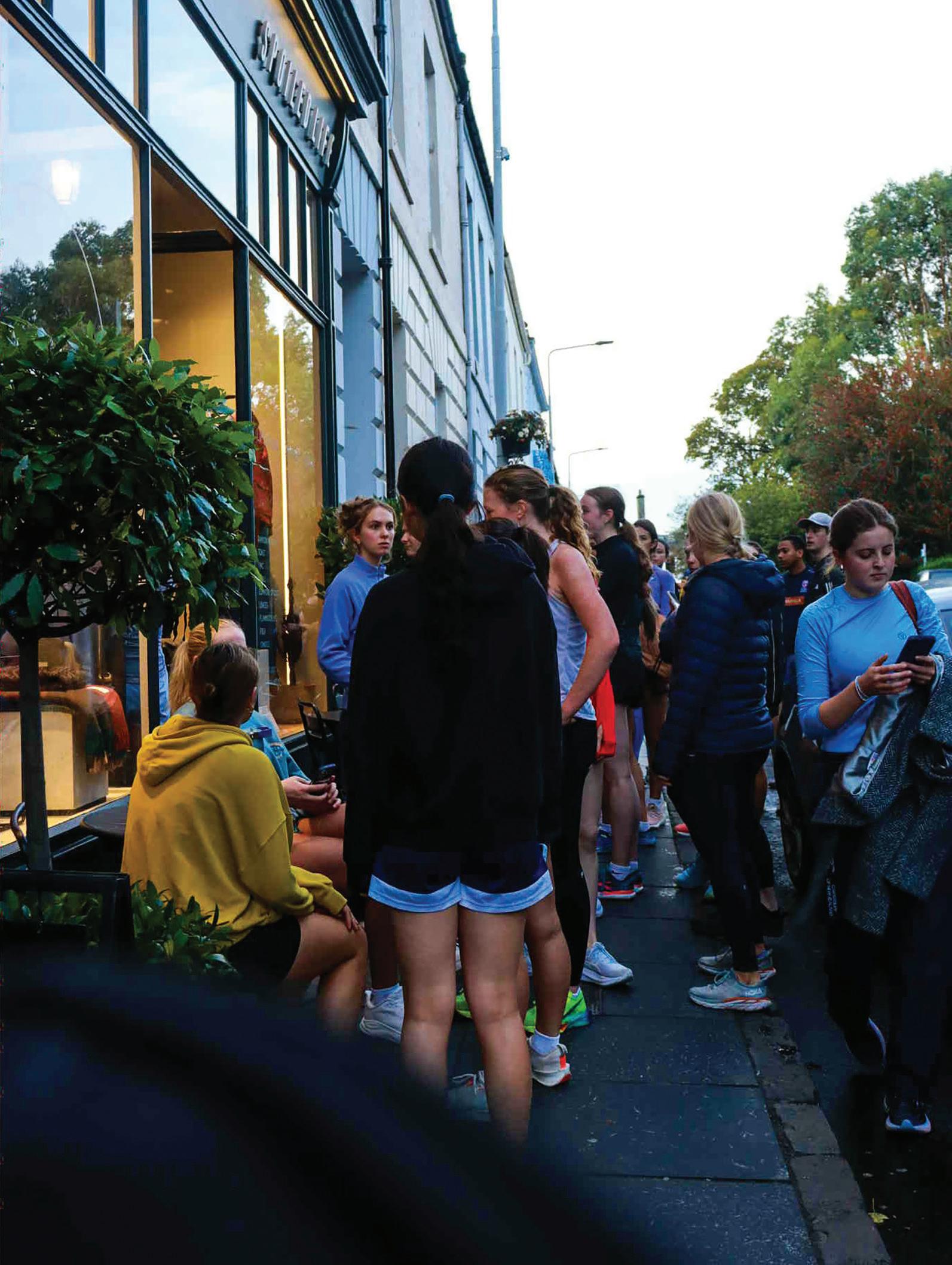
EDITOR: ANNA-MARIE REGNER

The Saint’s Arts & Culture Section
I Recommend Aikman’s Coffee... Well, Sort of
MARI CLAUDIA REIMER Relic Writer
Regarding the true Aikman’s dweller, the one who spends every waking hour in that godly place of a pub, one cannot know its true essence by only visiting after the sun has gone down. But who is visiting a pub before dark? Is it acceptable to drink before five? Perhaps only in this town can one get away with it — when it’s the dead of winter and the sun sets by three, and booze and deadlines weigh potently on the mind. What of entering Aikman’s during the day, precisely at their opening time of noon, for their coffee?
I purchased my first coffee at Aikman’s in mid-May of my third year. I had a very important upcoming Beowulf exam (and I take my English degree extremely seriously), so, before clocking into the library, I thought, why not stop and grab a La Chouffe? After all, Humanities students always work better after a pint with an alcohol volume higher than 8%. More importantly, it’s evidently easier to find a seat in a pub than
a crowd gathers: men decked out in generational tweed who claim to know much more than you do.
But when it’s mid-May and midday and the cellar is closed, you are left with only the option to sit in the strikingly yellow room on ground level, illuminated even more so by the sunlight that leaks through the two windows. Believe it or not, Aikman’s gets natural daylight! Workers are mopping the floors, still cleaning up from whatever treacheries were experienced the night before, filling the entire establishment with the sharp smell of bleach.
Agnes in St Andrews
BY AGNES BRENNA

in any of the University’s libraries during exam season. While approaching Aikman’s in the day, you pass the overflowing, rusty receptacle in which pub-goers had plunged their cigarettes the night before. Below this are a few concrete steps leading into the Bistro that are considered to be the pub’s equivalent of an office’s water dispenser; at night, it’s a common gathering spot where one can migrate to and smoke as an excuse to escape the humidity of boiling, boring conversations and the poorly ventilated air of the Cellar. Inside, you are met with stairs that lead you down to a room of battered, shamrock green wallpaper with exposed drywall underneath. The wallpaper itself is considered to be a souvenir by many, often found taped onto the walls of student flats. At night, the floors are sticky with piss or beer (or both), and on Thursdays,
If you go too early, around 12 -12:30pm, the workers may not want to serve you. You shouldn’t be at a pub at this hour, and frankly, they can’t be bothered. But if you’re lucky enough to get the chance to order at the bar, you’ll notice a juxtaposing sight: next to their hoard of possibly watered-down liquor sits a surprisingly well-to-do espresso machine. I remember asking for a beer and, at the last minute, hesitantly and smirkingly adding a latte to my order after catching a glimpse of the coffee machine. They don’t ask whether you’d prefer oat milk or regular, whether it’s sit-in or takeaway, and there will certainly be no latte art. They simply give you what they have. I paid £2.45 for my latte, which easily beats the prices of the other coffee-makers in town. In return, I received a drink that made me wonder: Could this even be considered a latte? But it arrived in a darling glass with two Biscoff cookies. The latte may have been a bit burnt, perhaps watered down with hot milk hastily dumped in, served with absolutely no love — but the more one drinks their beer, the better their coffee tastes.
The coffee shop Taste has made a name for itself with its almond croissants and paninis, drawing a devoted crowd of women in trench coats and Flabelus, who line up outside the door. Polompo’s, meanwhile, serves good coffee and benefits and is also right by St Mary’s. But Aikman’s European Bar and Bistro may just have a footing in the coffee competition of this town. I’ll admit, the coffee is by no means great, but Aikman’s provides something rarer: the unique essence of an authentic third space you should never be in before 8pm. And that, in itself, is quite special.
Illustration by Isabella Abbott

As I enrolled in my semester abroad, I was prepared for a wide range of unpredictability, anticipating the same strange, unique eccentricities that seem to infiltrate every university town. However, I was relying on the one tradition I thought was truly universal: the student beer-and-coffee routine. It goes something like this: You walk up to the bartender, flash your student ID, announce, “One beer, please,” and a fresh pint of their cheapest beer is handed to you. Each time you order another, one word is ripped away: “One beer” simply turns into “beer,” until you finally signal your order with a pointed finger. The next day, you wake up dehydrated and drag yourself to your local café. You walk up to the barista and quietly utter the words, “One ,” and a big cup of black filter coffee is immediately handed to It is probably sour after brewing in the same container for hours, and sprinkled with some coffee grounds, but it just what you need — paired with a cigarette (or some anxiety), it will surely your stomach going. But clearly, St Andrews has missed the dinal rule of student drinking. “One beer, please,” will likely result in this response: “We have 25 active taps available! Could I interest you in a Yippieyappie light beer with a raspberry flavour? Or, for an extra £4, perhaps a pint of our newly-importdark Belgian bumblebeer?” Demenu will sober you right up. regular coffee. The queues at Rector’s Café and Taste feel endless, as each Italian-named milk and espresso recipe takes about ten minutes. Say, “One coffee, please,” and you’ll get a confused barista — and the realisation that most cafés in town don’t even serve a classic filter coffee. Somewhere between the oat milk and the IPAs, St Andrews’ brewing culture lost me. My student life is already a blur of inconsistency — sprinting between modules, part-time jobs, and social cliques in a rapid fire. Coffee houses and pubs used to be my sanc tuaries of simplicity, but now every drink is foamier, sexier, and somehow less satisfying than the tried-and-true rituals of the word order are drowned a sea of unnecessary conversation and de cision anxiety. And anyway, isn’t student drinking supposed to be about quanti ty over quality?
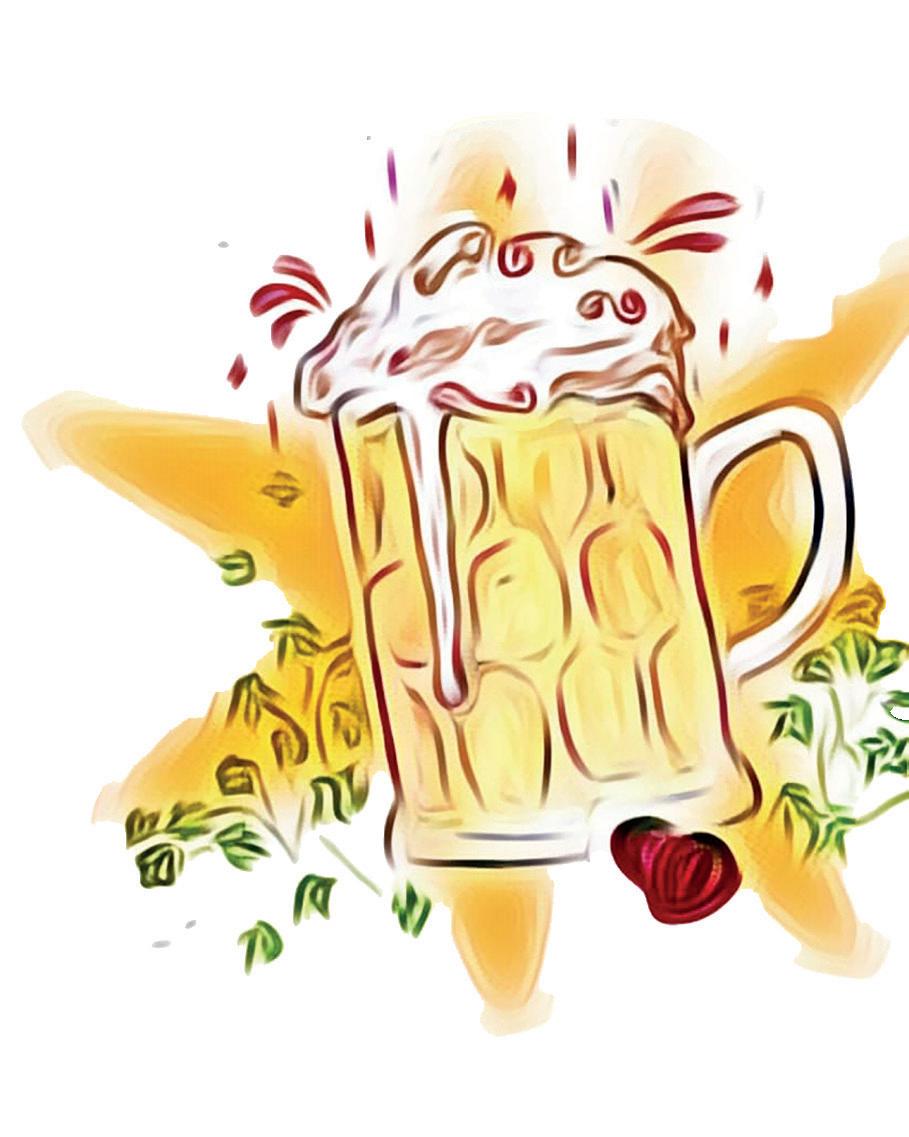
by Sandra garcia
Illustration
Stormy Crime: with Topping & Co.
Looking for your next read? The Saint and Topping & Co. have come together to save the day. Find below the best stormy reads. All books are available locally in store.
BOOKSELLER PICKS
Mikey recommends...
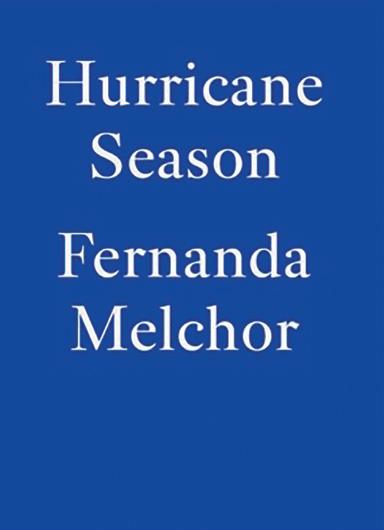

Hurricane Season by Fernanda Melchor
Hurricane Season is brutal from start to finish. It begins with the murder of a woman known as ‘The Witch’ on the outskirts of fictional Mexican village La Matosa, and splinters into a multi-threaded, non-linear narrative formed of angry soliloquies told by La Matosa’s impoverished residents. Melchor’s prose is unforgiving and unrelenting, her sentences often lasting multiple pages, and reads with the ferocious pace of a hurricane. Her literary study of misogyny and violence’s pervasiveness in rural Mexican societies and families is essential reading for anyone interested in global feminism.
Eleanor recommends....
The Writing Retreat by Julia Bartz
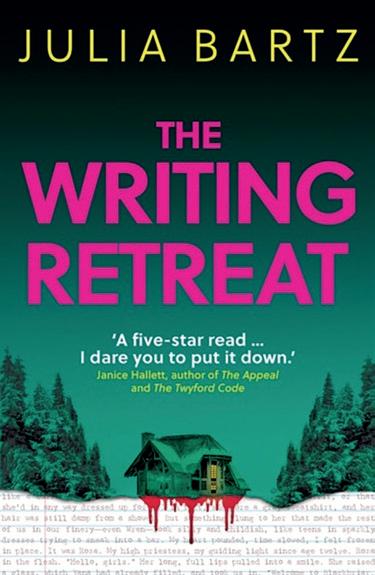
The Writing Retreat by Julia Bartz is the perfect thriller for readers willing to suspend their disbelief and enjoy a fast paced and high stakes plot. We follow Wren, who is invited to go on an exclusive writing retreat hosted by a famous writer. Challenged to write an entire novel during their stay, the guest authors are drawn into increasingly bizarre and horrifying events—not excluding a possible haunting—as a snowstorm rages outside. This is a high concept story that revels in its own exaggeratedness, and if you’ve ever wondered what might happen when a group of writers are trapped in a creepy estate together, then this book is for you.
STAFF PICK

Anna-Marie recommends...
The Hound of the Baskervilles by Sir Arthur Conan Doyle
Just last weekend, as Storm Amy was coming through, I was sitting in my room with the wind screaming outside my window and very little appetite to go hunt the Biebs in the blustrous weather. I thought to myself—what would I love to be reading right now? And like a stroke of genius, I was hit by one of my childhood favorites: The Hound of the Baskervilles. The novel, Sir Arthur Conan Doyle’s third crime masterpiece in his Sherlock Holmes series, is set on the foggy moors of Dartmoor in the west of England during the last decade of the 19th century. The mystery begins with the eerie tale of a little girl terrorised on the moors, leading to the unraveling of the Baskerville family’s dark legend and a murderous plot beneath it. The perfect stormy read for these tempestuous times!
Let’s do the Time Warp Again!
The perpetual revival of Rocky Horror
SOPHIE LYNN Relic Writer
Fifty years after its release, The Rocky Horror Picture Show is still luring audiences out of their comfort zones and into fishnets — so what is it about this lowbudget, campy B-movie that is somehow still culturally relevant? And why, in 2025, are people still dressing up, shouting at the screen, and performing it live?
St Andrews is the perfect place to both ask and answer this question. On 22 September, the film was screened by the St Andrews Film Society, and on 31 October and 1 November at the Byre Theatre, Rocky Horror will be screened and staged with a shadow cast (a group of actors who perform alongside the film).
The St Andrews production of Rocky Horror “has been going on for a number of years, at least since before the pandemic, from what I’ve heard,” said Ava Scarlett Daniels, the production’s director. “I believe it’s got its own cult following, gathering students and townies alike each autumn.”
The film, which follows a modest engaged couple as they shelter from a storm in the castle of an eccentric “transvestite from Transexual, Transylvania,” is less concerned with plot than with spectacle, mixing sci-fi, glam rock, and gender-bending theatrics.
For Daniels, the appeal of Rocky Horror is tied up in its defiant celebration of difference and transformation: “For me, the magic of Rocky Horror comes from discovering walks of life different to our own — and not just tolerating them, but embracing what is different and letting it transform us […] In today’s political climate, where the rights of women, immigrants, and transgender people are somehow shockingly put up for debate, loudly and proudly broadcasting this movie with its gender-bending alien wonderfulness is ever more needed.”
It’s hard to talk about Rocky Horror without talking about its place in queer cinema history. When it was first screened in 1975, it did so poorly at the box office that it was pulled from the majority of theatres showing it. However, it did so well at midnight screenings in Los Angeles that studio executives decided to see if it would attract fans at late-night screenings across America. That gamble paid off, and five decades later, it holds the title for the longest-running the - atrical release in film history.
Much of what has sustained Rocky Horror for so long is its enthusiastic fan base. From its earliest midnight screenings, the film attracted those who didn’t see themselves represented in mainstream media: LGBTQ+ individuals, gender nonconforming people, and anyone who felt like an outsider. The late-night showings, often hosted in urban cinemas far from the spotlight of daytime crowds, created a space where audiences could dress up, make noise, and be unapologetically themselves.
“It allows for imperfection, contradiction, and release.”
One of the most interesting parts of Rocky Horror’s presence in 2025 is the way it interacts with the modern culture of political correctness. While today’s social environment often emphasises careful language, inclusivity, and sensitivity, the cultural ritual of Rocky Horror exists in the tension between conforming to those ideals and deliberately subverting them. The film thrives on irreverence, on pushing boundaries, and on revelling in camp excess — qualities that don’t always align with contemporary expectations around representation or respectability. For instance, one of the rituals of attending a screening of Rocky Horror is yelling “slut!” at the screen whenever the female protagonist, Janet, appears — despite her relatively modest behaviour compared to the film’s other characters. In many contemporary spaces, this kind of callout would be seen as misogynistic or inappropriate. But within the world of Rocky Horror, it’s understood as part of a tongue-in-cheek participatory performance, not a literal moral judgment. It’s a tradition that walks a fine line, and that’s exactly the point. Rocky Horror doesn’t ask its audience to behave well; it invites them to step outside the bounds of what’s acceptable and to partake in a kind of joyous, consensual chaos.
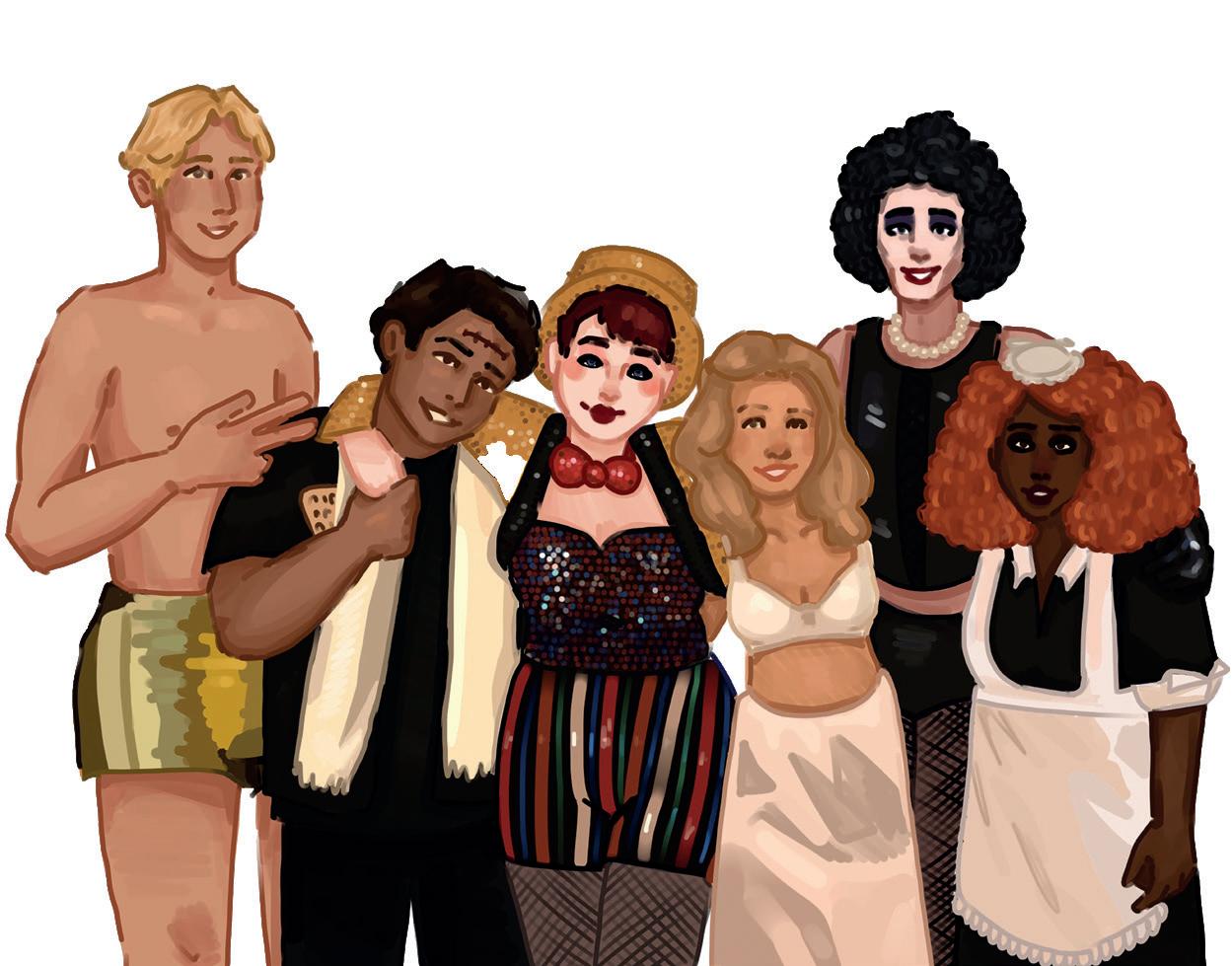
In a cultural moment where many people feel exhausted by the pressures of ideological perfection, Rocky Horror is perpetually being revived because it allows for imperfection, contradiction, and release. It’s not above critique, but it also doesn’t apologise for what it is: a space where being messy, loud, and a little bit inappropriate is not only allowed, but encouraged.
Illustration by Lyla Ritzler
BOOKCLUB PICKS
Under the Scots Pines, Rave Culture Lives On
ALEX BRUBAKER Relic Writer
Electronic dance music is not a difficult genre to find in the UK. There is an EDMbased event almost any night of the week here in St Andrews, and it dominates music festivals — especially following a significant post-pandemic rise. Only a week ago, DJ Fred Again sold out the Scottish Event Campus in Glasgow almost immediately, announcing the show and releasing tickets just a few days before the show took place. Though electronic music has never been particularly niche, its push into the mainstream as its own distinct genre is notable. With this takeoff, famous DJ sets have begun to feel more like concerts than raves. At a Dom Dolla show I went to in San Francisco, I watched a friend get punched above the eyebrow by a fan trying to push their way closer to the front of the crowd. The anonymity of a pashmina and sunglasses
clearly have enabled fans to freely show hostility and disrespect towards fellow ravers. I had heard stories about true rave subculture — stories of friends having a plastic sprout clipped on them if people appreciated their ‘energy,’ ‘rave parents’ with backpacks full of essentials for anyone in need, and the recitation of peace, love, unity, and respect (PLUR, for short) as event-goers pass beaded bracelets to one another. I thought this subculture had all but disappeared — but in late September, dancing under towering trees illuminated by flashing lights and lasers, I realised I found a holdout.
Woodland Dance Project is a twiceyearly festival in Vogrie Country Park, a small forest about a 30-minute drive south of Edinburgh. It’s a humble festival with moderately famous headliners, a small social media presence, and little promotion aside from basic logistics. The main stage, in the shadow of a grove of Scots Pines, had lasers projected onto the trees and diamond-shaped mirrors hanging between
them. It was simple, but stunning. The two side stages were simply white tents in an adjoining field. Admittedly, at times, the music left something to be desired. This year featured mostly drum and bass, which can be overstimulating — especially with headliner 33 Below frequently jumping on the microphone to rap over his own songs.
Waiting alone in the crowd for my friends to return from the bathrooms, though, I understood the beauty of what a festival like this can offer. Groups of people approached me, danced with me, and then left without a word. When the lights flicked on, the group I was dancing with exchanged a “thank you for dancing with me,” and we parted ways without even asking each other’s names. I watched a glowstick-adorned ‘rave mom’ approach a complete (albeit inebriated) stranger. Sitting him down and pulling a bottle of water from her backpack, she continued dancing with him on the ground to diminish any anxiety or embarrassment he may have felt. I left Woodland Dance Project
grateful to finally have witnessed the care and respect the EDM community can hold. For St Andrews students interested in experiencing this subculture, societies that host rave-like events like Szentek and Wax Rooms are a great place to start. The music, venues, decor, and outfits are all there. At the end of the day, though, these are St Andrews events, and much of the community aspect of them consists of our fellow university students. The beauty of Woodland Dance Project was the way that total strangers hold such positivity and open-mindedness for each other, with nothing but a shared appreciation of electronic music and rave culture. Beyond St Andrews, branch out, and you can find the beating heart of dance subculture — not in the spectacle of an arena show, but in a fleeting moment on a forest dance floor.
Five Films to Celebrate Robert Redford
SOREN RASMUSSEN Relic Writer
Barefoot in the Park (1967) dir. Gene Saks
Redford’s career began on the stage, so it’s fitting that his breakout film came with the adaptation of his biggest role on Broadway: the romantic comedy Barefoot in the Park. Redford and Jane Fonda respectively play Paul and Corey Bratter, newlyweds struggling to adjust to married life in their dingy new Greenwich Village flat. Redford’s performance displays all the athleticism that earned him a baseball scholarship to university years earlier, while his drunkenness at the film’s climax shows the relationship with alcohol that lost him that scholarship. If nothing else, watch for a brilliantly drunk Redford.
Butch Cassidy and the Sundance Kid (1969) dir. George Roy Hill
Despite the onset of success, Redford repeatedly found himself pigeonholed as another California blonde. That mould finally broke with Butch Cassidy and the Sundance Kid, when Joanne Woodward proposed his name to her husband (and Redford’s later co-star) Paul Newman. The two met, and Newman admired Redford’s approach and craft so much that he refused to do the film without him. The result is an iconic revisionist western, with Newman and Redford starring as two outlaws fleeing their impending demise through the wide
horizons of Wyoming and beyond. An outstanding buddy comedy in western attire, it transformed Redford from a well-groomed suburban standout to a rugged, sardonic, yet ultimately lost creature of the open pasture.
The Sting (1973) dir. George Roy Hill
Newman, Redford, and Hill collaborated again four years later for another caper film, trading train robbers for Depression-era conmen to even greater results. Redford stars as Johnny Hooker, a small-time grifter taken under the wing of a former big-timer (Newman) to con a powerful New York mob boss and avenge his mentor. The cinematic equivalent of a gin and tonic with a twist, the film is endlessly suave, with magnificent Edith Head suits and a soundtrack so good it revived ragtime. Redford and Newman make the prototype for the stylish grifters that Clooney and Pitt would come to emulate in Ocean’s Eleven — only the former duo did it better.
All the President’s Men (1976) dir. Alan J. Pakula

Ordinary People (1980) dir. Robert Redford
Redford’s acting career may carry the bulk of his legacy, but his directorial work
Redford was engaged in politics throughout his career; he developed and starred in The Candidate (1972), a political satire about a Democratic outsider’s run for Senate, and he served as a local sewer commissioner to fight pollution near his Utah home. Yet arguably his greatest political contribution came through All the President’s Men. The most entertaining depiction of journalism ever put to screen, the film follows Washington Post reporters Bob Woodward (Redford) and Carl Bernstein (Dustin Hoffman) as they navigate the paranoia of Nixon’s Washington to unearth the most important political scandal of the twentieth century: Watergate. Journalistic bias aside, All the President’s Men is a masterpiece — a gripping story whose perfection extends from the sizzling, frenetic performances of the entire cast to the writing, direction, photography, wardrobe, all the way down to the unmooring score. The film even began with Redford, who first approached Woodward with the idea long before Nixon’s resignation. He bought the rights to their book before it was written and promised Post editor Ben Bradlee that Hollywood would not bungle their story. Redford kept that promise.
is far from a footnote, either. He directed nine feature films over his career, none more successful than his directorial debut, Best Picture winner Ordinary People. Based on the novel by Judith Guest, it tells the story of a family struggling to heal from the tragic loss of the eldest son. Earning Redford the Oscar for Best Director, the film is both an exploration of broken family dynamics and a shockingly powerful depiction of mental illness, with the central actors (Timothy Hutton, Mary Tyler Moore, and Donald Sutherland) all giving unforgettable performances. It’s a testament to Redford’s belief in the power and responsibility of film — one which was later made manifest through his Sundance Institute and Sundance Film Festival, in which his legacy will live on.
Illustration by Ramona Kirkham
Beyond the New Picture House
Exploring St Andrews’ film culture
CARLA LONGO Relic Writer
I am not ashamed to admit I shed a few tears when the New Picture House closed. I’ve loved cinema all my life, and that building symbolised countless evenings with friends and loved ones, filled with that unique whirlwind of emotions only the big screen can evoke. Whenever the Scottish winter crept into my bones, the local cinema always managed to warm me up.
The New Picture House was bought by Tiger Woods and Justin Timberlake and has now reopened as T-Squared Social, a luxury sports bar that still shows some films albeit in a much more limited way. Although two of the original cinema screens have technically been kept (the smaller one remains almost untouched, while the historic main auditorium still has its screen but has been completely repurposed), the building itself has undergone a radical transformation.
I’d rather not support what
SYLVIA COVACI Relic Writer
feels like the transformation of a community landmark into an exclusive venue. The golf bar will thrive without me. Instead, in this article, I want to show that St Andrews’ cinematic spirit is still alive and accessible. Cinema, after all, is a collective ritual. It demands a different kind of respect for what you are watching: the shared darkness, the focus that comes from putting your phone away, and that fleeting sense of connection with strangers, all drawn together by the light of the screen. I still remember seeing Saltburn in St Andrews in December 2023: the laughter, the gasps, the collective shock that filled the room. That electric energy is what we must protect.
Lately, I’ve been attending screenings organised by the St Andrews Film Society, a friendly and vibrant club offering biweekly showings (Tuesdays and Thursdays) in university spaces like the Quad or Buchanan
Building, followed by pub nights where people meet and discuss the film. The programme is rich, featuring both popular and auteur cinema — recent choices include A Clockwork Orange (Stanley Kubrick), Suspiria (Dario Argento), and In the Mood for Love (Wong Kar-wai). Membership

costs just £5 a year and gives you access to all screenings, making them accessible to everyone.
Another unmissable event is SANDS: St Andrews International
Film Festival. Founded in 2022 with director Joe Russo as a key festival supporter, SANDS takes place each spring at the Byre Theatre. Its mission is to connect innovative stories and people with audiences through premieres, interviews, and Q&A sessions with directors, producers, and actors. What I love most is that many of its curators are St Andrews students themselves, dedicating time and passion to select and share meaningful films with their peers.
The Byre Theatre itself is also worth following. Deeply rooted in the community, it frequently offers a wide variety of screenings — from opera to contemporary cinema. One of my favourite things about the Byre is its “pay what you can” policy for many events, which lets people choose their ticket price by paying the minimum rate or adding a little extra as a donation.
The Crows of St Andrews
The
folklore
of the food-stealing friend
timal feeding grounds (of student-discarded rubbish) or high-up nooks ideal for nesting (the ruined St Andrews Cathedral, for one) takes on a more twisted definition when examined through the lens of Celtic folklore.
There are murders in St Andrews: Foretold by great echoing caws and flurries of silky black feathers, the culprits descend upon their unlucky victims with a vengeance. Some name them servile, when they strip off the flesh of rotten roadkill or hunt down scrambling rodents; others name them thieves, glittery-eyed crooks that will steal your sandwich or nip your pastry, smiling their cheeky smile and cawing all the while. Reader, beware of these murders — the murders of crows.
“The crow is often heralded as a harbringer of fate.”
Indeed, this town’s air never seems to be empty of the crow’s long guttural caw, its stone turrets and spindly iron gates never unclustered by the creature’s claws. A prevalence of species one might chalk up to op-
The crow is often heralded as a harbinger of fate. In Irish mythology, the Morrígan, a war goddess, appears as a crow. This goddess was also named Badb, which in Old Irish translates to “crow.”
The Morrígan flew over battlefields, foretelling doom and death, victory and defeat. She was also known to directly influence the battle’s outcome, often by inspiring confusion and fear among soldiers with her screaming cries.
The Morrígan was known to be a triple goddess, possessing three apparent forms, and at times appearing as one of three sisters. This triple form might, to the Shakespeare enthusiast, recall the Weïrd Sisters of Macbeth, who appear throughout the play and prophesies Macbeth’s ascension to the Scottish throne and serve, not only as voices of the future, but as affirmations for his bloody actions, particularly against Kind Duncan.
Played by Kathryn Hunter in The Tragedy of Macbeth (2021), the Weïrd Sisters are singularly crow-like, with voices both raspy and rumbling, wearing a black dress, and movements that mimic the fluttering of a crow’s wings or the pointy swivel of their beak. In this adaptation of Macbeth again we see the crow’s close relationship with fate — but in Celtic folklore, the creature is tied up in even bloodier tales.

Crows are also commonly portrayed as travelers between realms. In the 1913 volume of Irish Witchcraft and Demonology by St. John Seymour, the bird is said to be a shapeshifted form of the Devil. When landed on a poor soul’s head, it can cause him to froth at the mouth from speaking in evil vehemence, wholly given over to demonic possession. The volume also recounts a story of a witch at the gallows: just before the hanging, the witch disappears and a raven assumes her place. The raven is a member of the crow’s Corvidae family, and likewise associated with themes of possession, sorcery, and evil. In Irish mythology, Banshees are female wraiths. When alighted on a house,
And if you’re in the mood for a cinematic adventure, take the short trip to Dundee and visit the Dundee Contemporary Arts centre (DCA), a creative hub filled with exhibitions, workshops, a lovely bar, and, most importantly, an excellent cinema that screens new releases and indie gems. It also hosts a series of film festivals throughout the year. My personal favourite will always be DunDead: The Dundee Horror Film Festival. Every May, the cinema fills with the delicious tension of collective fear — like when I found myself gripping the armrest during an Australian film about a gigantic, flesh-hungry spider. Ticket prices at the DCA are also very reasonable, with a student discount bringing them down to £7. These are just a few of many examples of how we can keep the cinematic experience alive through conscious choices that support local venues, places that have long been dedicated to celebrating the community and its culture. Because while buildings may change, our values should not.
Illustration by Isabelle Holloway
often in the form of a raven, they were believed to foretell the imminent death of a family member. The Banshee was characterized by its howling, blood-curdling scream, a sonorous omen of impending horror, death, and grief. One cannot deny that there is something uneasy, something sinister, about the sight of a crow perched upon one’s own roof; it watches, black eyes sparkling, cocks its neck as you stumblingly unlock the front door, and flies off with a rustle as you pass through the threshold. But perhaps what makes the crow so uncanny a creature is its closeness to humans. The two are omnivores and opportunistic. Both choose partners for life, seek out community, and are cunningly intelligent and cruelly creative. The crow, notably, is a skilled mimic and can even parrot human voices. Maybe what makes humans so adverse to us is its very familiarity. Perhaps when looking into the eye of a crow, we see in the black enough glittering intelligence to recognize ourselves — and enough glazed unfamiliarity to only augment our terror. So if you find yourself cutting through trees alone at dusk, do not think that the voice you hear beyond the fog is that of a friend. It may be a mere imitation of the cunning crow, meant to lure and loll you into the clutches of a grinning evil.
Illustration by Haalah bin Hashim
The Main Character Epidemic
The crime of being ‘basic’ and the illusion of individuality
ALIX RAMILLON Relic Writer
My favourite place to be is Market Street at 11am on a weekday, when students walk around what I like to refer to as the ‘runway.’ It is the best time of day to people watch. As soon as the sun hits, students with loafers, Flabelus, trench coats (buttoned to the top), sunglasses, and skinny scarves overcrowd the streets. If it is windy or rainy, bangs and mullets blow in the breeze. This extends to other parts of town, like walking on West Sands wearing impractical heels and carrying a cup from Taste or Palompo’s, the lid stained with lipstick. In lecture halls, a handful of students write notes on a notebook instead of the computer, upholding the Jane Birkin, effortlessly casual-chic look, as if they walked right out of your Pinterest board with Vinted outfits. Main characters are everywhere, and they pertain to the digital realm. If I had a pound for every student influencer occupying my Tiktok page with ‘GRWM’ or ‘a day in the life’ — where, fundamentally, they film themselves like nothing or no one else matters — I would get pretty wealthy. We are reminded every day that we fit into that narrative by our mere online presence. I opened up my Spotify the other day and saw recommended playlists entitled ‘Main Character Mix’ and ‘My Life is a Movie,’ filled with the artists that I blast on my headphones when I strut The Scores:
Grimes, Bjork, Massive Attack, Portishead, and Aphex Twin. Digging deeper down the rabbit hole, ‘Sad Girl Energy’ featured Big Thief and Francoise Hardy. My algorithm would not leave me alone, and, frankly, it was slightly unsettling. How many other people in this town have actually been led to believe that they have been handed a curated, unique playlist, tailored just for them, on a silver platter? The thrill when our Spotify Wrapped arrived and reminds us that we are just amongst another niche selection of 0.005% listeners is unmatched. The thing is, even if you listen to indie, underground (and therefore ‘underrated’) artists, you are not safe from being relegated to the ranks of being criminally basic. No one is actually safe from main character syndrome.

The sad reality is that we are increasingly surrounded by the cons of that: from fanfiction novels, and TV reality shows that propel a random person to the status of hot, trendy celebrity, to influencers who curate their own aesthetic and persona but are in fact the
walking image of a Pinterest board. Even encouraging a discourse of ‘girlboss’ empowerment and liberation for young women can very quickly fall under ‘loserdom’ if opportunities do not come to you. The online discourse is always the same: “Don’t chase, attract. It is all about stimuli shift. You have the upper hand on outcomes and your future.” You are manifesting your surroundings and the opportunities that come to you with a little attitude and appearance of composed confidence, which will ultimately result in becoming hyperindependent, successful, and charismatic. A real-life mise en abyme situation of simulacre and simulacrum by Baudrillard — ironic, no? Acting like you are at the centre of your life is a product of late-stage capitalism and the commodification of identity: “Do it for the plot, you will thank yourself later,” or “I will have a redemption arc…” This type of behaviour can be harmful. If you are going to be the main character in your own life, you need to
ensure you’re not making yourself the main character in others’ lives too. Confidence does not come at the expense of friends. To live authentically, you must author your own story, but the extent to which that fits into our daily narratives and shapes our own persona is variable. From the Taste-goers who ‘study’ on their computer without typing, to the St Mary’s enthusiasts who arrive with stacks of books, a leather journal, and a fountain pen — main character syndrome can be a plague. The need to aestheticise our self-consciousness and be nonchalant to get attention testifies to how unaware we are of the extent to which digital trends impact our daily routines. The social scene in St Andrews is implicitly based upon aura, looking edgy and cool, and exuding confidence, thus curating a niche subgroup of individuals who subconsciously influence people wanting to follow their own main character persona. Being observed and judged by others is a constant pressure and it is easy to feel like we should become more unique. Who can blame young people for romanticising life like we are living it to its fullest? We are young adults miles away from home, trying to escape the fact that the recession-era economy and saturated job market await us after graduation.
Illustration by Abigail Svaasand
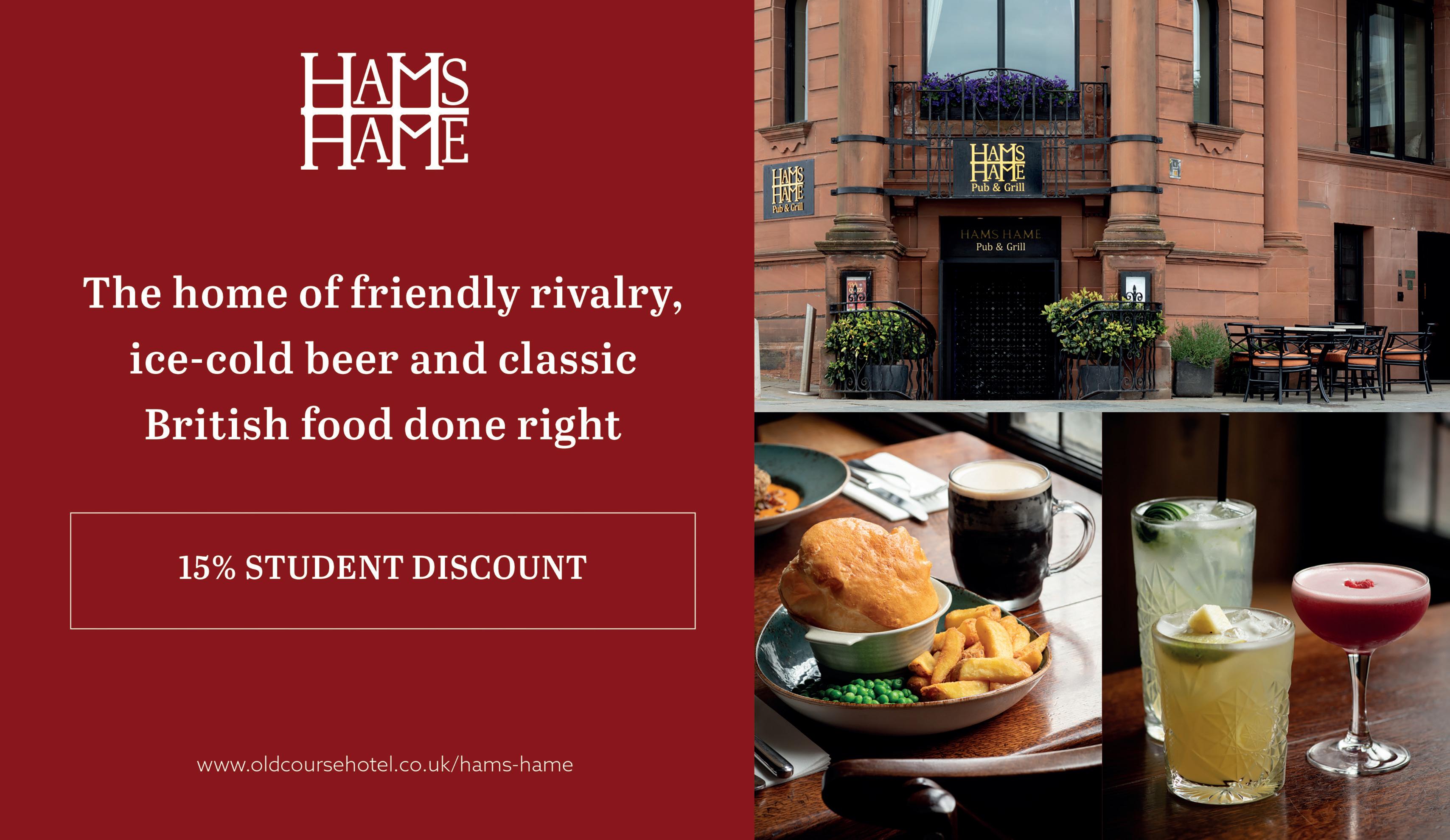
ALEX BARNARD Events Writer

EDITOR: OLGA ALONSO BLANCO
Strip Shows on South Street and Elephants in the Central
Memories of St Andrews at the R&A Museum
I entered the Royal and Ancient Museum’s ‘St Andrews Memories’ event with a certain degree of trepidation. After all, this was the place where a friend of mine once got told off by the staff for taking a photo of a potential gift for her mum in its gift shop. Like many, I too have a somewhat guarded attitude toward the whole golf culture in this town.
However, as I was guided to a small room at the side — aglow with the sound of happy conversation — with photos and snacks strewn across the table, it quickly became clear that any fear I had was a misjudgment.
The St Andrews Memories exhibition is a warmly inviting monthly fixture which brings residents, many of whom have known each other since their school days more than half a century ago, together to reminisce.
The setup is pretty simple: Headed by Hannah Fleming, the museum’s Learning and Access Curator, each month has a discussion theme — this time, farming — in addition to more general conversations on town history. Large pictures, in line with the theme, as well as scrapbooks of newspaper cuttings from different decades, are provided as talking points by the St Andrews Heritage Museum. Tunnocks Teacakes and tea and coffee were available for all, though there was a constant fear of spillage over valuable collection material.
The crowd was generally older, and many in attendance had lived in St Andrews their entire lives. They ranged from sergeants to former university careers advisers to children’s storytellers. One thing they had in common was their enthusiasm to speak to me and my friend, the only students in attendance. It seemed as though every image we flicked past in the scrapbooks had a story behind it.
One particularly chatty attendee was Mike Dominiak, one of the lifelong residents whom we sat next to. He made us feel very welcome in an environment where we were afraid to be outsiders. After all, this was a group of friends who Fleming told us meet up almost every day, and have, of course, known one another for many years.
Dominiak was full of stories; particularly humorous to us were those about Prince William’s time in the town. He told us how his sister, once in a rush, was annoyed to be stuck behind someone in a Tesco aisle, only later to discover it was the future King. Another townsperson, unbeknownst to them, asked William where they could ‘buy knickers’.
Dominiak also told us some memories of his childhood with palpable joy. I knew that the area below the aquarium had once been St Andrews’ fourth beach, but Dominiak illuminated this fact by telling us how, as a child, he would race there early in the morning, come back for lunch, and return as soon as he could. However, as the tide came in, so did the deckchairs en masse. He would even hide toffees from his parents by throwing them to the bottom of the sea, the logic of which escapes me, and then reward himself for swimming with a soggy sweet from the depths.
Not all of the stories I heard were so sunny. Through the stories of attendees and news clippings, we learnt of a string of plane crashes near Leuchars, a mass sausage poisoning at Regs, and that the ladies’ toilet on The Pends used to be a mortuary. The building now housing Dune used to be a furniture shop — but also a funeral director’s with open coffins in the side room. St Andrews also used to be a frosty place, with residents of University Hall having to find their own coal for the fireplace.
With a reduced student body, the University experience used to be very different. Back when only a few thousand students studied here, they often ‘bunked’ — stayed — with townsfolk, a great business and town-gown bonding opportunity which is now sadly lost. The relative paucity of the student body also meant that they were allocated numbered bikes so they would never get lost.
Aside from the personal anecdotes we heard, the news clippings provided were charming. A Market Street business in 1953 aimed to break into the US market with its ‘Pram-Hammock’, “a multiple-purpose device, which protects a child in a pram against cats and birds”. There was a general sense of sweet mundanity to many of the
articles. “Fight to save forest — against weevils” went one anticlimactic piece. In another article, an image shows a 1920s student “order[ing] a pack of coffee in the Aikman and Terras grocery shop.”
One frank headline was reported in 1991. “An end-of-term celebration plunge for Primary Seven pupils from Lawhead.’ it starts happily before changing tack, “— a plunge that left most of them feeling ill and may have led to one girl contracting typhoid.”

Elsewhere, there was an enthusiastic report of a Madras exchange with a group of German students from Kiel, which resulted in multiple marriages, and I even found a sweet clipping of my beloved Madrigal Group performing many years ago at May Dip.
“Has Mike mentioned the strip show?” one member of the group joked as we were about to leave. Of course, Dominiak had — there used to be one on South Street during the annual Lammas Fair, which was a source of scandal. Another attendee’s father, who used to be the stationmaster, was once tasked during the Fair with leading an elephant off the train and across St Andrews, where it made a valiant attempt to enter the Central. Anything my friend and I could offer to the group paled in comparison to the
anecdotes so enthusiastically recounted to us. We were warmly welcomed, invited to return, and even given free entry to the Golf Museum afterwards. Although, we had little to add — after all, our experience is less of a ‘memory’ and more of a transient present reality — it was golden to have the opportunity to speak to people with decades’ worth of hugely entertaining stories. If more students came, the Memories exhibition would be a great facilitator of town-gown relations. Get out of the library and learn some real-life history of this wonderful town we live in from those who really love it best.
Illustration by Marios Diakourtis
Smile — It’s Portraiture Masterclass!
MALI DELARGY Events Writer
Having magnificently foiled my plans to take Art Society’s portraiture masterclass with a friend, I found myself rocking up all alone to St Salvator’s Quad at 5pm on Wednesday 8 October. I had a belly full of nerves and a bag devoid of mark-making materials. For the next two hours, I would be drawing, but under what circumstances? If it was anything like my A-levels, the pressure was on.
Immediately after locating my spot in the beautiful School III, I found a room full of girls. Some had come in pairs, but lots had come alone like me. Everyone was inclined to chat to their neighbour, the tables forming a semi-circle around our sitter, Clara Costa. I made friends with the girl next to me and soon discovered that we went to the same sixth form. It certainly was a friendly environment, and I was glad of it. First, we were given paper and chose our charcoals. Next, Andreas Klein, Art Society’s resident artist, narrated us through the first twenty-minute block of shaping our sitter. We were to find these shapes in straight
lines, find a clearer likeness, and then shade the darker spaces of the drawing in blocks. Each stage was cushioned by a break full of chatting and mutual admiration.
Klein’s narration was like listening to a calming podcast. He taught us how to take measurements and angles with the pencil,
the sun set, the strong artificial lighting took over and created bold, beautiful shadows. There is something peculiar about staring at a person for two hours without knowing them. I caught Costa, our sitter, on her way out to ask how she manages to sit patiently for so long. “To keep

how to use straight lines and shadow shapes. At the start of the class, it was the natural light from the windows that guided us. As
physically still, I choose a focal point: that little blue light at the back of the room. But mentally, it’s like meditation. It is difficult
not to think about essays and due dates.” She also spoke about being perceived. “Having the confidence to be studied doesn’t mean you are immune to self-criticism, and seeing one’s insecurities on paper can be daunting.”
I then asked Klein and committee member Tulla Burnet how they know when to stop. Klein reflected on the class’s artistic method and purpose — “The aim of the class is not to make a final portrait but to be intentional. You can always improve, so there is value in taking things slow.” Burnet agreed, adding, “I find I stop too easily, so there is challenge and reward in returning to the portrait and sticking with it.” I feel fortunate that I have found the Art Society in my fourth year. It is a place of genuine curiosity, encouragement, and joy. People can go alone and make friends. They can develop their skills. They can study beautiful things and listen to beautiful playlists (The Beatles, Pulp, and Big Thief, just to name a few). I would heartily recommend testing it out — perhaps the life drawing classes held in School VI every Tuesday. I, for one, will certainly be back.
Photo by Andreas Klein
Interviews I Can Do Easily, Dates I Cannot
Undercover on a date, rather than under covers on a date
JOSS WILDGOOSE BULLOCH Events Writer
It begins — as many bad ideas do — at a bar in St Andrews.
It’s a warm Thursday evening on 9 October, and the Physician hums with that particular midweek optimism.
I’d never been on a blind date before. I told myself this article was my editor’s idea, though in truth, I’d pitched it. I’d joined Events to get out more, make memories — and occasionally humiliate myself in print.
I checked my watch: 6:48pm. I’d been waiting thirteen minutes. My date was fashionably late; I was unfashionably early. Rather than sit alone with the weather app for company, I started chatting to the organisers, sisters Saanvi and Kaina Guliani — the duo behind Peared, the studentrun dating company running Trivia and Tapas, the blind dating event. Interviews I could do easily; dates I could not.
“The problem with St Andrews,” Guliani told me, “is that there are too few men and too many gorgeous women. The men here have too many options.” For me, it was, in fairness, not the worst problem to have. I nodded vigorously, still waiting
for the two shots of Fireball I’d downed beforehand to kick in.
The dating scene in St Andrews has always been a peculiar ecosystem. Brunch with my female friends often devolves into lamentations over how little they’re approached. The ‘good ones’ are all taken, and even the ‘medium-ugly ones’ have somehow developed standards beyond their station — a luxury easily afforded in a town that’s 60% female.
I was sceptical about Peared at first. In a town where everyone knows everyone — and their exes — who on earth would pay £30 (£28 plus fees) to be set up?
Contrary to the waves of greasy-haired hermits I was expecting, the attendees were, on the whole, disappointingly normal.
The event began with introductions. My date and I learned, as students in St Andrews inevitably do, that we were only two degrees of separation apart. Then came the trivia round — “to break the ice,” I was told. It worked. There’s something disarming about debating dental hygiene and dating habits with a stranger you’ve only just met. The cocktails helped, of course.
I scanned the room with journalistic eyes — jackets were coming off, knees bumping under tables, and laughter getting louder by the minute. Peared’s job, I decided, was done.
My date, when she arrived, was perfectly lovely. We covered the usual first-date orthodoxy — exes, future careers, fate — before I resorted to my personal brand of flirting with Americans: impressing them by drawing a map of the 50 states from memory. Somewhere between the trivia and the tapas, I forgot that I was supposed to be covering the event. The food was modest, but the company more than made up for it. Afterwards, we wandered out for ice cream, sat by the fountain on Market Street, and watched the world go by.
Despite my journalistic negligence, I did manage to form a few impressions. Objectively, Peared is breaking the mould of the St Andrean dating market. Lowstakes public events keep things relaxed, and the hand-matched compatibility forms lend it a personal touch that apps can’t replicate. I watched several couples leave together, still chatting, still laughing, eager to take things beyond the night’s structure. The Guliani sisters have big ambitions. They want Peared to be more than just an occasional event — they’re building a community. Plans are already underway for coffee runs and speed-dating, with a Halloween mixer confirmed for 29 October. The ‘double date’ tickets proved surprisingly popular
“I watched several couples leave together [...] eager to take things beyond the night’s structure.”
— as with tapas, romance is best shared. That’s not to say the night was flawless. My missing second drink still haunts me, and I’m unconvinced the forms quite capture what people actually want. ‘Go with the flow’ and ‘relationship’ are, in my experience, not compatible options. Still, for £30, two drinks (in theory), and a shot at love, it’s hard to complain. I didn’t find love (yet), but I did find a story — and, apparently, my most compatible match in St Andrews. Maybe that’s worth something. At the very least, I won the trivia. In St Andrews, that’s as close to a happy ending as you’ll get.

Sci-Tech
EDITOR: MATTEO VERATELLI
Remembering Dame Jane Goodall
ORLA ROSTOM Sci-Tech Writer
In the early mornings at Gombe Stream National Park in Tanzania, when the forest was still and Lake Tanganyika lay like glass, Jane Goodall waited. She waited for the animal world to reveal itself to her on its own terms, and in doing so, she changed our understanding of chimpanzee behaviours.
Dame Jane Goodall, ethologist, conservationist, and anthropologist, died on 1 October 2025, aged 91. She was best known for her research into the social and family life of the wild Kasekela chimpanzee community in Gombe. Her adventure had started in July 1960, when her mentor, famed paleoanthropologist Dr Leakey, invited her to Tanzania, believing that her lack of formal academic training would enable her to study the animals with an open mind. She began to watch an elderly chimpanzee, whom she named David Greybeard. His acceptance meant that other group members allowed Jane to observe. Through watching and waiting, she grew to know the
individual members of the community and their habits. Within months, she witnessed chimpanzees stripping leaves from twigs to fish for termites, a landmark discovery that marked the first recorded use of tools by a non-human animal in the wild. This skill was previously used to distinguish humans from other primates. The old barrier between ‘us’ and ‘them’ could no longer hold.
Goodall continued working in Gombe with the same community of chimpanzees, documenting tenderness, play, hunting, and even lethal inter-group violence. In 1986, she attended a primatology conference that highlighted the widespread problem of deforestation and declining numbers of primates. Fearing for the communities she had grown to know so well, she transitioned from active research to a career as a conservationist and activist. She travelled the world giving talks advocating for animal welfare and environmental protection.
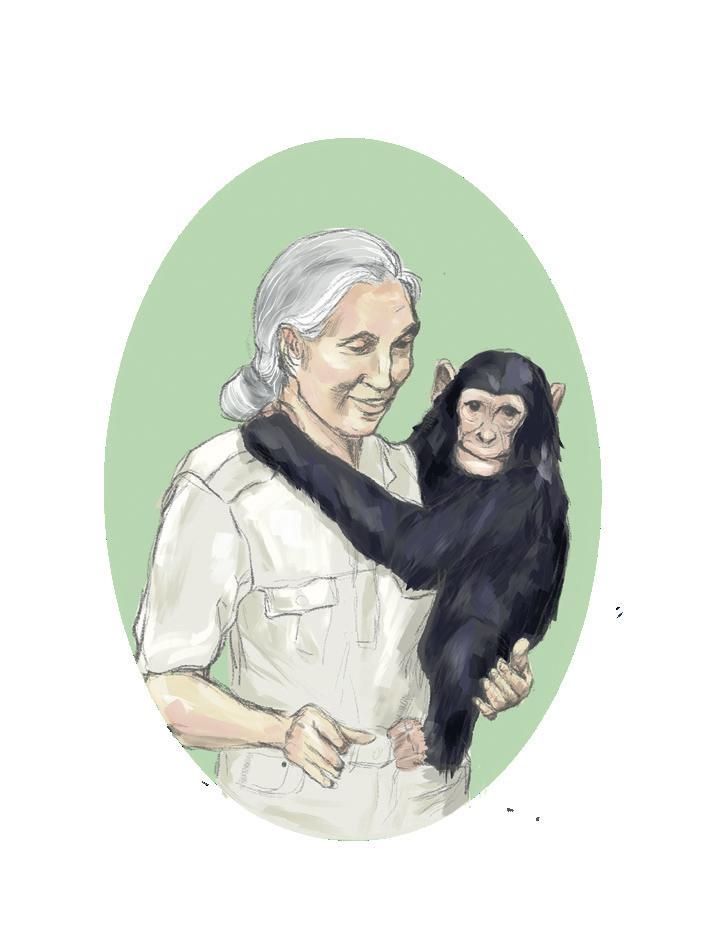
An inspiration to many female scientists, through over sixty years of groundbreaking
work, she communicated the urgent need to protect chimpanzees from extinction and redefined species conservation to include the needs of local people and the environment. Founding both the Jane Goodall Institute and the youth programme Roots & Shoots, she used her first-hand experience to implore people to take action to reduce deforestation. By naming the animals she was working with, previously unheard of in ethology but since becoming common practice, Goodall humanized the apes. By describing their babies as playing like children, doing careful gymnastics on branches, she enabled people to see the similarities between themselves and them. She communicated the severity of deforestation and its continual detrimental impacts on chimpanzee communities, calling her audience to action.
She refused the false choice between research and responsibility. The same person who wrote field notes in the Tanzanian
hills also sat with presidents, CEOs, and schoolchildren, asking each the same question: what will you do, now that you know? Goodall’s legacy is not only a trove of observations from Gombe. She taught us lessons that we can apply to our own lives. She showed that a childhood passion can go beyond convention - you do not need to follow the standard route to contribute meaningfully to science. When the acclaim could have kept her in Tanzania, immersed in a world she loved, she chose the harder option: leaving the chimpanzees to share her passion around the world. She paid radical attention. She was patient with data and impatient with injustice. She treated curiosity as a discipline, as relevant in a lab as in a seminar on ethics or Chaucer.
Jane Goodall died sharing her knowledge about what she loved on a speaking tour in California. She strove for those who could not communicate their needs for themselves right until the end of her life, and inspired thousands of others in the process.
“The least I can do is speak out for those who cannot speak for themselves.” — Jane Goodall.
Ameca: The Future of Humanoid Robots
HANNAN ANJARWALLA Sci-Tech Writer
Imagine checking into your hotel or scanning your boarding pass at the airport — and the friendly face before you is not a human being but a robot. It might blink, nod, or even crack a joke, causing you to do a double-take and wonder if you are dreaming. No longer just the stuff of science fiction blockbusters, that is what roboticists call a humanoid robot: designed to resemble humans and operate seamlessly in human spaces. This

technology is real, and Ameca is living proof.
Ameca is considered the world’s most advanced ‘humanoid robot’, designed by British robotics company Engineered Arts. With advanced facial recognition software, embedded microphones, and articulated motorised components, Ameca responds to human interaction with striking precision. From winks to shrugs to laughter, it can mimic human emotion and facial expressions through its sophisticated built-in camera features. If you ask it what the weather’s like or how its day is going, it can respond and ask back. If you ask where the bathroom is or where the next meeting session will be held, it can direct you to the right room. The opportunities for innovation in this field are truly endless.
To top it off, Ameca now lives at The National Robotarium, the UK’s leading centre for artificial intelligence and robotics development, located just a short trip away in Edinburgh. The National Robotarium aims to utilise AI and robotics to address global challenges through strategically engaging policymakers and exploring the economic benefits of sustained investment in robotic technology. Critically, the Robotarium aspires to nurture
future generations of young roboticists through structured engineering teaching programmes for students across Scotland. Ameca aligns perfectly with this mission, as the Robotarium partners with schools nationwide to introduce Ameca and engages thousands of children through a variety of in-person and virtual events. Through public outreach and education programmes, children of all ages can interact with a stateof-the-art robot in a familiar setting and learn about the future of robotics engineering.
“The arrival of Ameca at the National Robotarium marks a significant step forward in our mission to make robotics more accessible and relatable to the people of Scotland, the UK, and beyond.”
This statement by Steve Maclaren, Chief Operating Officer at the National Robotarium, reflects its forward-thinking vision surrounding robotics and public engagement. Through showcasing Ameca’s abilities, the Robotarium seeks to build trust between humans and robots and shift perception towards integrating robots into our everyday lives. Similarly, by recording human interactions, roboticists gain insights into attitudes towards humanoid robots, so that they can guide more accessible, user-
friendly future technological designs. With over £1.4 million in contributions from the Scottish government, the Robotarium is driving progressive robotic technology and aims to make Edinburgh its centre of action. Ameca’s range of interactions is not just limited to schools. Engineering UK are trialling it at science festivals across the country, like the Cornwall Festival of Tech in February. Festivalgoers’ reactions ranged from awe at its strikingly similar human expressions, to unease and potential fear of its life-like characteristics.
According to Engineering UK, Ameca’s mission is to show the potential of humanoid robots in benefitting society as a whole. This technology marks a milestone in humanmachine interaction. It demonstrates the leaps made by our scientific and engineering community in creating a high-functioning, human-like robot that could one day live and work cohesively among us. It is fascinating to imagine how humanoid robots can transform our classrooms, offices, or campuses. And who knows — maybe the next newcomer in St Andrews might be made of metal, not muscle.
Illustration by Ana Brockmann Aldasoro
Illustration by Vera Kaganskaya
LOGAN SIBBALD Sci-Tech Writer
Sprawled on a gingham blanket absorbing the height of the summer sun, your carefully cultivated tranquillity is easily shattered by an approaching buzz. Fight or flight suddenly triggered, your mind cogitates over potential sources for the noise. A bluebottle perhaps? Annoying, gross, but mostly harmless.
Welcome the Wasps
A bumblebee? Scarier, some stinging potential, but hardworking honey-makers, nonetheless. The worst-case scenario then comes to mind — a wasp. Vicious, venomous, unrelenting. You jump up — eyes screwed shut — wildly batting the air around your head. The wasp, misunderstood and hungry, lands on your sandwich in hopes of a meal.

While this may be the scenario anytime you bravely venture out for a picnic in the UK, this past summer was hardly an exception. From July to August, with no less than four heatwaves, the average temperature in the UK was 16.1 degrees Celsius — breaking the record previously set in 2018. This also came after the UK’s driest spring in 50 years, establishing an ideal environment — warm and arid — for wasp colonies to excel. Here, we are very lucky to have our own society dedicated to sustainable living and supporting pollinators — the St Andrews Bee Society
(BeeSoc)! I spoke with their Head Beekeeper, Sapna Chudasama, about the rise in wasps, who explained that “For social wasps, the warmer and drier weather contributed to a greater survival rate for wasp queens and aided faster nest construction, resulting in larger colonies.” Indeed, it is during springtime that a wasp queen will begin to build her nest, relying on the hot weather to warm her body so that she can actively forage for materials. The nest is constructed using wood fibres (obtained from fallen logs, fenceposts, and doors — the dryer, the better) which are then chewed with the queen’s own saliva to form a sticky paste. Once the initial structure is complete, the queen rears the first worker wasps, who then take over the role of expanding the nest. At this point, the queen is producing eggs full-time when greater temperatures may quicken the laying process and egg maturation. As a result, the heat and low humidity accelerate the growth of the colony. Although it is unnerving to think of an ever-expanding structure pulsing with spindly, bullet-shaped insects, the importance of wasp species and their role in our ecosystems must be acknowledged. Best highlighted by Sapna, “[Wasps] are also invaluable pest controllers and play an important ecological role by consuming pests such as greenflies and caterpillars.” Their role as predators may also be
welcome news to some. A fun fact from Sapna: “For those spider-hating people, many species of wasps actually prey on spiders and help control their numbers.” Aside from pest control, with their buzzing from flower to flower scavenging sugary pollen as a meal, wasps also make excellent pollinators. In fact, some evidence has suggested that their role as pollinators is just as vital as that of bees. A 2024 study published in the journal Ecological Entomology found that wasps fared similarly to bees in their interactions with plants and ability to transport and deposit pollen. Sapna concurs, rationalising that “Although wasps can be really bothersome, particularly in the late summer, they are actually incredibly valuable to our environment and should be appreciated just as much as bees and butterflies. Thus, we may not see it, but wasps, like any other creatures, have a vital role in the food chain and in maintaining a balanced ecosystem.” If you eat outside, you must be prepared for a noisy visit from a wasp. They may be intrusive, but they mean you no harm. As such, consider sparing a few crumbs as a peace offering — a sign of acknowledgement for their hard work and your own effort to look beyond their misjudged reputations.
Illustration by Eve Fishman
The Sky: Humanity’s Greatest Canvas
ISAAC OLDHAM Sci-Tech Writer
The skies above St Andrews are more than just beautiful — they are a spectacle. What the weather throws at us in wind and rain, the heavens repay tenfold in colour.
St Andrews sits perched on the coast, looking out over the vast expanse of the North Sea. With almost nothing to block the view, our town gets a front row seat to Mother Nature’s nightly masterpiece.
For these splashes of colour in the sky, however, a list of criteria must be met.
A scattering of clouds helps significantly amp up the visual display. As the sun dips, its rays strike the underside of the cloud, refracting the light into a riot of colours.
Latitude – the real festival is our location: St Andrews is northerly on the planet (though our Scandinavian friends amongst us may beg to differ) and this location gives a shallower angle to the horizon, creating a technicolour dreamcoat in the sky.
The brilliance of darkness: St Andrews may have a big heart, but it is still a tiny place – a major win for the sky. Less light pollution means seeing the colours of the natural spectrum more.
When these factors combine, St Andrews witnesses incredible sunsets and sunrises. The only problem is that such beautiful skies are rare.
The question arises: can we control the colour of the sky?
All would agree that a sunrise followed by vivid blue hues would make even a 9am a little more uplifting.
Well, we are in luck. There are a couple of ways that this can be done.
Perhaps whilst at a concert, festival, or even at our golf range, you have noticed the sky illuminated, even if just a limited zone. This process can be taken, expanded, and, through clever technology, taken to the next level. High-power LEDs can generate light by pushing huge amounts of current through semiconductor layers. That current releases energy in the form of photons; this is electroluminescence. By scaling this, you can feasibly change the tint of the entire sky. Anything from a glowing orange sunset to a bright green morning would be possible.
You have most likely heard of aerosols; many contribute to polluting our atmosphere, but some can actually be beneficial. It is these ‘good’ aerosols that can be creatively harnessed to change the sky. Tiny particles such as dust, ash, and even smoke interact
with air particles to scatter light: smaller particles scatter blue light, and the larger ones yellow. By effectively controlling the concentrations, using precise aerosols and lab conditions, it is possible to change the sky or, at the moment, the atmosphere of a room. Scale this process up and overcast days could be a thing of the past. The coolest way, and of course, the most complex, is by the use of lasers. At any given moment, our atmosphere has many millions of particles merely floating around. If targeted with lasers, they emit light via laserinduced fluorescence. Hitting specific particles, in order, could fill the sky with whatever colour and pattern desired. By improving the quality and size of these lasers, the magnitude of the sky affected would increase.
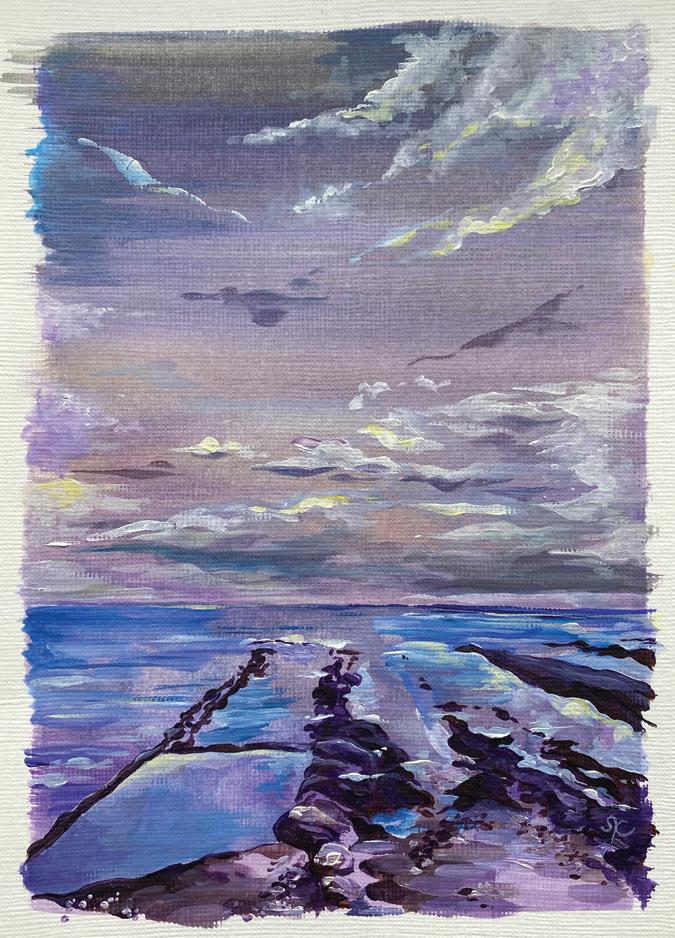
The upsides of this are nearly limitless. Birds and animals use light and colour to navigate these natural cues to guide them. Changes in the atmosphere and environment can disrupt this colour, making navigation more difficult for wildlife. Now we can do something to help. Therefore, the sky’s colours are more than just a pretty phenomenon; they are vital. They guide, warn, and connect species to their environment. By understanding and carefully influencing these hues, we can do a great number of helpful things. So next time you look out on one of nature’s most beautiful gifts, ask yourself, what if we could make it not just beautiful but better for us and the world around us?
Illustration by Sarah Knight
Sport

EDITOR: BEN BAGLEY
The Non-Competitive, Competitive Sport
The benefits of hiking with St Andrews Breakway
GABRIELLA THOMAS Sport Writer
Anyone who plays a competitive sport knows the thrill of finally meeting your opponent in the flesh. Catching their eyes over the net, jogging past them onto the pitch, stretching beside them at the start line — the imagined and awaited contest finally becomes real
But what if there’s no adversary at the other end of the court? No challenger at your shoulder? What if your only competitor is yourself?
Breakaway — the university’s hillwalking and hiking society — gives students the chance to venture beyond the St Andrews bubble and explore Scotland. Hiking offers the perfect way for students to build both physical and mental resilience, where the real challenge isn’t your opponent, but the strength of your own resolve.
Mary McKeegan, the society’s Merch Officer, has been on her fair share of hikes, witnessing some of the most spectacular views and enduring the harshest weather that Scotland has to offer.
“To ‘win’ when you hike is a very personal qualification,” McKeegan told The Saint “For me, to truly achieve all the benefits of hiking requires great personal intention and an understanding of why you are
spending your time outdoors in this way.”
The rewards are as varied as the hikes themselves. “Some days, it’s about the satisfaction of hard physical exertion on a difficult trail leading to a spectacular view,” she explained. “Others, it is simply about the appreciation of nature and the opportunity to experience its beauty, rain or shine.”
Despite the gruelling tests a tough hike can present, it is brilliant for your mental health. At some point, we’ve all been told to get outside, to move our bodies and talk with others in order to shake off stress or get out of a rut. Hiking offers all of this with the bonus of stunning scenery, weather permitting.
and no medal — just, perhaps, a snood.
“I don’t consider hiking to be a competitive sport,” McKeegan continued. “Though there are elements of personal challenge that I think you could see as a form of self-competition — like how many Munros you’ve climbed or how your ability has improved when you revisit a hike.”
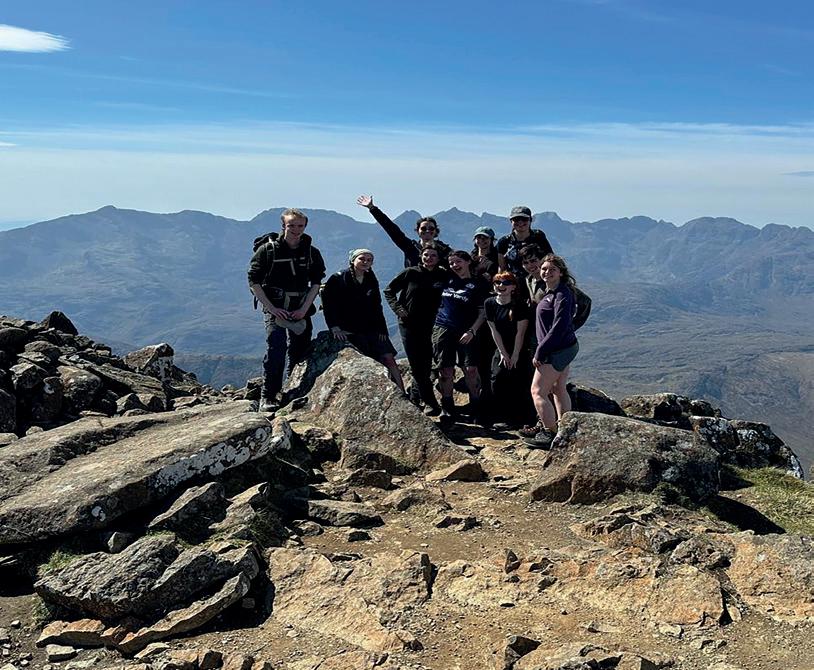
The lack of a direct opponent is hiking’s greatest strength: you get out what you put in. If you’re looking for a serious challenge, you can opt for one of Breakaway’s ‘high-level’ hikes, which may involve some scrambling or the use of ice axes and crampons. There is also so much for competitive athletes to learn from hiking, alongside the physical test.
“The lack of a direct opponent is hiking’s greatest strength.”
mix-ups can be planned for, but executing said plan is another matter. To hike is to embrace unpredictability — nothing is a given, and that is part of the experience. Few things test patience and perseverance like surprise downpours that strike before you can zip up your coat, a slip on a steep descent, or a fog that descends just as you reach the summit.
As Nan Shepherd wrote in her book
The Living Mountain, a love-letter to the Cairngorms: “Often the mountain gives itself most completely when I have no destination, when I reach nowhere in particular, but have gone out merely to be with the mountain as one visits a friend with no intention but to be with him.”
Unlike the setting for traditional competitive sports, nature is no sports hall. It’s not an adversary (though at times it might seem uncooperative). There’s no scorecard beyond the tally of blisters
“A couple of the greatest overlaps [between hiking and other sports] are in the roles of endurance, mindfulness and, in the case of Breakaway: teamwork!” McKeegan concluded.
Hiking is a great lesson in composure. Sudden weather changes and navigational
Hiking may seem like a sport of summits and stamina, but its true gift lies in its ability to cultivate mindfulness and resilience — all while offering the chance to spend a day immersed in Scotland’s natural beauty. A lesson every athlete and non-athlete could use.
Image provided by Breakaway
Game Over: Why Do We Stop Sports at Uni?
ISOBEL LISHER Sport Writer
This is not to say that everyone stops doing sports at university. Some carry on childhood sports, others pick up new ones — but there’s no denying the drop-off in participation once students arrive at university.
Sophie Portier, Vice President of St Andrews Swimming Club, explained that the intense schedule of competitive school sports required her to make significant sacrifices. She says that many see the switch to university as a chance to explore new interests and reconsider their commitment to sport.
This is true, but for many recreational athletes, school sports rarely required such dedication. So why does participation still dip for them?
One of the biggest changes moving to university is newfound independence. Yet
with that freedom comes the somewhat stressful realisation that our time is now our own. That means one thing: organisation. Some things at university must get done — deadlines, for one — so unless you are competing in BUCS, sport easily slides down the priority list.
Brett Gieras stopped playing competitive sports after leaving school.
“I have more deadlines and felt my education was more important than the large portion of time it takes to play tennis competitively,” Gieras told The Saint. A realisation anyone scrambling to meet last-minute deadlines can relate to.
Furthermore, when it comes to time management, much of this was structured for us at school. Imogen Taylor, a member of the Women’s 6s hockey team, now plays significantly less hockey than she did at school.
“I suppose I was forced to do sport at school and now it’s by choice,”
Taylor said. “I do less when I have time to do it; it’s less built into my day.”
I am sure that anyone who’s joined a university sports team will have felt the financial blow — it sure isn’t cheap! Taylor made the point that at a fee-paying school or club, the parents covered the cost, which is often not the case at university. Financial implications, then, may play a role in the drop-off in sports participation. Our time and our money are our own now — and they’re both precious commodities at university.
As an American, Gieras also noted the stark contrast between university sports in the US and UK. Whilst some do play sports to a very high standard at British universities, it’s a whole different ball game across the pond: “In the States, university sports are largely competitive, with many students being accepted to a college solely for sports and gaining a sports scholarship.”
This big difference in the US
“I [...] felt my education was more important than [...] play[ing] tennis competitively.”
perhaps explains why sporty Americans come to St Andrews, with the hope of a more varied experience. These reasons, gathered from those with a variety of sporting involvement at university, explain why and how priorities change. The key thing is that university is what we make of it — and whether you are involved in sports or not, there are so many ways to join in.
Kilo Club: The New Gym on the Block
PATRICK MAITLAND Sport Writer
As much as I like our student gym, the sight of hordes of people occupying every single machine makes my heart sink every time I go. I get there hoping for a simple hour-long push day, yet I leave three hours later, having trained my patience more than my chest. So, when I heard that a new gym had opened up in St Andrews, I decided to take a look for myself. When I visited last week, I was given a tour of the facilities by Ruadhan Cowan, the owner of Kilo Club St Andrews. The gym has two rooms, one for functional exercises and another which is more bodybuildingoriented. The functional room has, among other things, a number of treadmills and bikes for cardio, as well as a sledge on astro turf. It’s a well-designed space and has a very new, welcoming feel to it, but the gym really sets itself apart with the second room. There is a wealth of machines to choose from, with some really unique options, as well. Those that stood out to me in particular were the single-leg hamstring curl machine and the combo rack, the latter of which has proven very popular
with the town’s powerlifters. If all that’s not enough, the gym even has its very own resident dog: Beans the cockador.
Given the number of people in the gym, it was hard to believe the range of machines and equipment. I went on a Thursday, which is typically the gym’s quietest day, but Cowan assured me that overcrowding will never be an issue. He plans to cap the number of members at around 500, leaving roughly 50 spaces open.
The attitude of prioritising the customer experience over milking profits is refreshing and has helped to build the community of gymgoers — professional athletes and newbies alike — who frequent Kilo Club. Ruadhan also makes a point of listening to the wants and needs of his community, the same wants and needs which often get lost in a commercial gym. The conscious effort to listen has resulted in a friendly environment which is

carefully tailored to the people who use it. Now, let’s crunch the numbers. For the academic year (that is, until the end of May), you can access the university gym for £221. That is cheaper than Kilo Club, which offers a 12-month pass for £450 or a recurring monthly pass at £45. What really makes a difference is if you play sports at uni. With the ‘Bolt On’ membership, members of (almost) any sports team can use the gym at the discounted rate of £103 per year, a price which no private gym can feasibly match.
I would say that the gym you choose depends greatly on what you hope to get out of your time. For some people, the cheaper option is more than adequate, and the trade-off of time is a fair price to pay. If you take fitness very seriously, Kilo Club could certainly be the option for you, with its plentiful range of high-quality equipment.
At the same time, if you’re someone like me and your motivation to work out is fleeting at best, it can be demoralising to wait ten minutes every time you want to change exercise. If the queues are keeping you from going at all, I would again recommend you spend that extra bit and switch to the new gym in town. One aspect which often goes unmentioned in conversations about fitness is the fact that the gym can be an incredibly overwhelming place; it’s common for newcomers to feel uncomfortable, and for some, a room packed with people they know is not the best place to start their fitness journey. If that resonates with you, then a smaller, private gym like Kilo Club could be a more suitable place to start. I must say, though, as someone who started going to the gym at the University Sports Centre and who is still relatively new to working out, I think it still has had a welcoming, positive atmosphere and is great for people of all levels of experience. Ultimately, the choice is yours, and I would encourage you to book a free tour of Kilo Club if you are interested in joining or changing gyms.
Image Provided By Kilo Club
Disc-Connect: The Rise of Ultimate Frisbee
Final-year Tony Kavalam shares his love for the sport
MAY-LING TURNER
Sport Writer
In sports, athletes often have an idol, coach, or mentor that they look up to. For Tony Kavalam, a final-year geology student and ultimate frisbee player, that person is Jimmy Chu.
“Not the designer Jimmy Choo,” Kavalam laughed. “I mean the professional frisbee player and coach from Seattle — he’s been my inspiration since I started playing at fourteen. He taught me the value of discipline.”
“Many students start playing at university and are still able to play at a high level.”
Invented in the late 1960s in the US, ultimate frisbee has flown across the Atlantic, becoming a popular sport throughout Europe.
Ultimate frisbee is an intense, full-body sport — you’re constantly catching, throwing, changing direction, running, and jumping.
“The turnovers in frisbee are so quick, with rapid changes of possession,” Kavalam explained. “This is what makes the sport so exciting.”
As a self-refereed game, players are responsible for calling their own fouls and violations. It’s entirely up to participants to remain honest, disciplined, and fair on the pitch.
At St Andrews, both male and female teams take part in six tournaments throughout the year — indoors, outdoors, and in mixed formats.
Training at St Andrews is led by Kavalam, alongside coordinators Daniel Lindsay and Manuela Nicolussi, who run indoor and outdoor sessions. Sessions run at all hours — some starting early in the morning and some late at night — to allow maximum flexibility for players.
team also welcomes recreational and new players eager to get involved.
Come rain or shine, the team plays. “We even played in Storm Amy,” Kavalam added, though he admits throwing a ‘hammer’ — an advanced shot — in those winds has a much lower success rate.
The highlight of the season is the UKU Nationals, held in Nottingham every April

— a long bus ride for the club’s best players.
the 2025 Division 1 Women’s Nationals. Their momentum carried into the summer, when some of the UK’s best frisbee players — including several from St Andrews — travelled to Logroño, in northern Spain, in June to compete on the international stage at the 2025 World Under-24 Ultimate Championship, facing teams from New Zealand, Belgium, Ireland, and Italy.
Spain may be famous for its warm, sunny weather, but there was little chance for a siesta in Logroño. The only breaks were for rehydration. “The climate made playing intense — it was 35 degrees on turf throughout the tournament,” Kavalam said.
“I started drinking so much salt water. You don’t really need Liquid IV, you just need salt.”
Women’s co-captain, Sophie Chowgule, brought home bronze at the Under-24 Women’s Ultimate Championship after her call-up for Team GB; one of the proudest moments in the club’s history.
“Many students start playing at university and are still able to play at a high level,” Kavalam emphasised. A development
Recent successes include the Saints Ultimate team claiming the 2024-25 Scottish Championship title. Building on that success, the women’s team went on to win silver at
“It would definitely be great to see more students join frisbee,” Kavalam emphasised. “What I love most about the sport is that there is a great frisbee community at the University and everyone’s friends.” With a grin, he added: “Just not on the pitch.”
Image provided by UStA Ultimate Frisbee Team

Inside the Dunhill
Big Bob Mac, Bieber, and Beyond
ELODIE COWAN Sport Writer
A year ago, Bob MacIntyre was sitting in a pre-Dunhill press room, dreaming of home-soil glory. Fastforward twelve months, two runner-up finishes on the PGA tour, a Ryder Cup, and Scotland’s favourite left-handed swinger finally got his win at home.
After a couple of rounds battling the wind and rain, MacIntyre lifted the Alfred Dunhill Links trophy on Sunday afternoon. Or, as the Daily Express put it on Monday morning: “Big Mac feasts on a diet of success.”
MacIntyre became the first Scot in twenty years to win the Dunhill (Colin Montgomerie did it in 2005), with the classic Scottish mixture of riotous winds and horizontal rain from Storm Amy playing into his hands.
But this year’s Dunhill wasn’t just about the home-soil win. The abuse received by Team Europe at the Ryder Cup hung like a stubborn cloud over the press rooms, with each player conference focusing on the fallout rather than the week ahead.
Matt Fitzpatrick was asked by the press, “When you picked up the Ryder Cup trophy, you said you felt a bit of bitterness. Who specifically were you talking about?”
Fitzpatrick, having absorbed weeks of abuse aimed at him and his family, didn’t hesitate: “Well…er, the CEO of the PGA of America.”
The CEO of the PGA of America, Derek Sprague, had suggested that the abuse hurled at Team Europe in New York was no worse than what Team USA experienced in Rome in 2023.
Tyrell Hatton, Nicolas Colsaerts, and Tommy Fleetwood struck similar notes, criticising sections of the US fans for their abusive comments during the Ryder Cup. They echoed each other’s sentiments, calling for deterrents against such behaviour and adding that it was laughable to suggest that US players received the same treatment in Europe.
Once the venting was over, attention turned to the golf.
Picture the eighteenth at Carnoustie, in the peak of Storm Amy: rain dripping down your collar as you wait for the pros and celebs to come off for a quote, only to be told they were too cold and wet to talk.
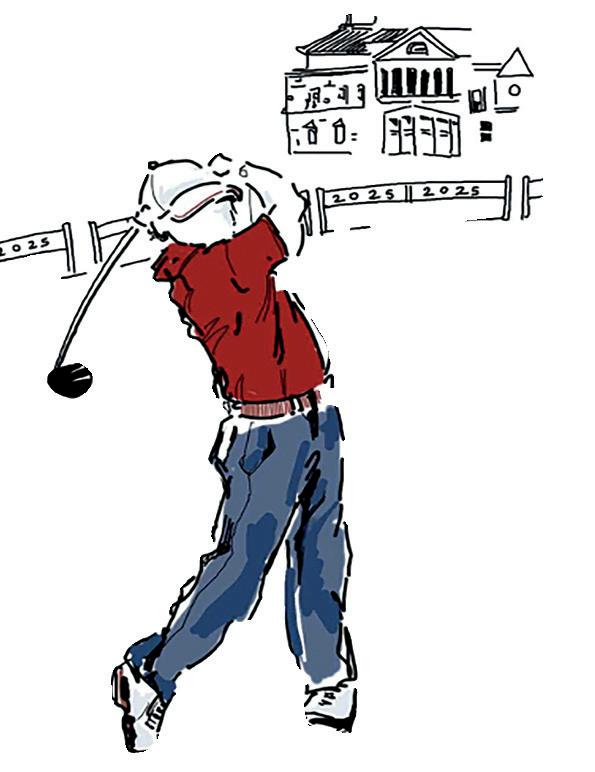
But hey — God loves a trier!
At least Genesis bassist Mike Rutherford was feeling optimistic. Bracing himself against the Carnoustie winds, he declared that his “golfing prowess” would see him through the storm. Waiting around wasn’t very productive, and it soon became clear that celebrity interactions required strategy.
The winning move? Watch the warm-up area like a hawk, then give a nod and cheer when your target sinks a five-foot putt. This worked wonders with exEngland cricket captain Michael Vaughan, who later admitted his chances of winning were about as slim as Manchester United’s hopes of a Premier League title. His partner, 23-year-old Australian pro golfer Elvis Smylie, received glowing reviews, with Vaughan tipping him as “one to watch” for the future.
Of course, the Dunhill is not confined to the fairways: the town itself becomes part of the show.
Piers Morgan was spotted embracing the owner of Little Italy like an old friend. The tactical opening of Tiger Woods and Justin Timberlake’s new hub, T-Squared Social, on day one provided the perfect gathering spot for students and fans alike.
Elsewhere in town, what was meant to be a quiet dinner out with my parents on Friday night turned into a Justin Bieber sighting of sorts — his team had allegedly taken over the upstairs of Haar, with police briefly closing off the road outside.
Back on the courses, another tried-and-tested tactic of high-level journalism involved befriending the caddie of your favourite player — a job made particularly easy at the Dunhill as the caddies’ bibs announce the surname of exactly who they’re lugging about.
This presents slight issue if you are trying to find Bill Murray and get stuck with the caddie of some bloke called Andy. Andy Murray, that is — local legend, fan favourite and, it appears, aspiring Open Championship qualifier.
His caddie? 21-year-old Harry Robertson, who landed the gig thanks to his brother Charlie. Charlie, a rising Scottish tennis player, once mentored by Murray, phoned the two-time Wimbledon champ and vouched for Harry.
Harry had caddied at the Dunhill three times before, but never on this stage. He described it simply as “an incredible week.”
Meanwhile, the St Andrews Tennis Club had their viral moment when club president Ollie Davis snagged Andy for a video on their Instagram, which has since been reposted by many club alumni.
There were poignant moments, too. Nicolas Colsaerts announced his retirement, following a long struggle with a rare kidney infection diagnosed back in 2021. His final appearance at the Dunhill was met with warm applause and a lovely surprise gift from his wife, Rachael, on the eighteenth of the Old Course.
And so, with Bob’s victory, the curtain came down on another Alfred Dunhill Links tournament. A mix of wind and wins, birdies and Bieber, locals and legends. For a young, slightly soggy journalist, it was unforgettable — not least because St Andrews is all about community. Whether you were working the event, chasing celebs, or watching golf with your mates, the Dunhill captured that spirit at every level. For now, it’s Dunhill and dusted — until next year’s storms, swings, and sightings.
Illustration by Iona Talbot
Rice
Your weekly Sunday League round-up
BEN BAGLEY Sport Editor
There were cricket scores in Division 1 this week, as Spartans dismantled a struggling Sheffield Tuesday side. It can’t be long before rumours of a Sam Allardyce move to the relegation-threatened ‘Tues’ start circulating. In-form Botswana Meat Commission are building a serious head of steam after brushing aside Bolton Fondlers in the early kick-off. The day got better for the Commissioners when midtable Paqueta Crisps held their title rivals, Beavers, to a draw. Meanwhile, Strokers kept pace with the frontrunners after a convincing win against Butts Wynderers under the lights. Down in Division 2, BLFC and Real Sosobad treated spectators (all two of them) to a twelve-goal draw, whilst St Andrews Sundays recorded a 6-3 win over Crotchdale. Roundball FC’s encounter with DLL was postponed as most of their squad were cup-tied representing the University frisbee team in Stirling. Beavers, Botswana Meat Commission, and Strokers are the teams to beat heading into the reading week break. But Spartans and Paqueta Crisps remain very much in the conversation after impressive weekend displays. At the bottom end, it’s squeaky bum time for Butts Wynderers (no pun intended). They’ll be hoping Sheffield Tuesday and Bolton Fondlers’ poor form continues going into the second half of the season. With reading week fast approaching, players will be hoping to get the small matter of their midsemester deadlines out of the way so focus can return to what’s really important… Sunday League football.
